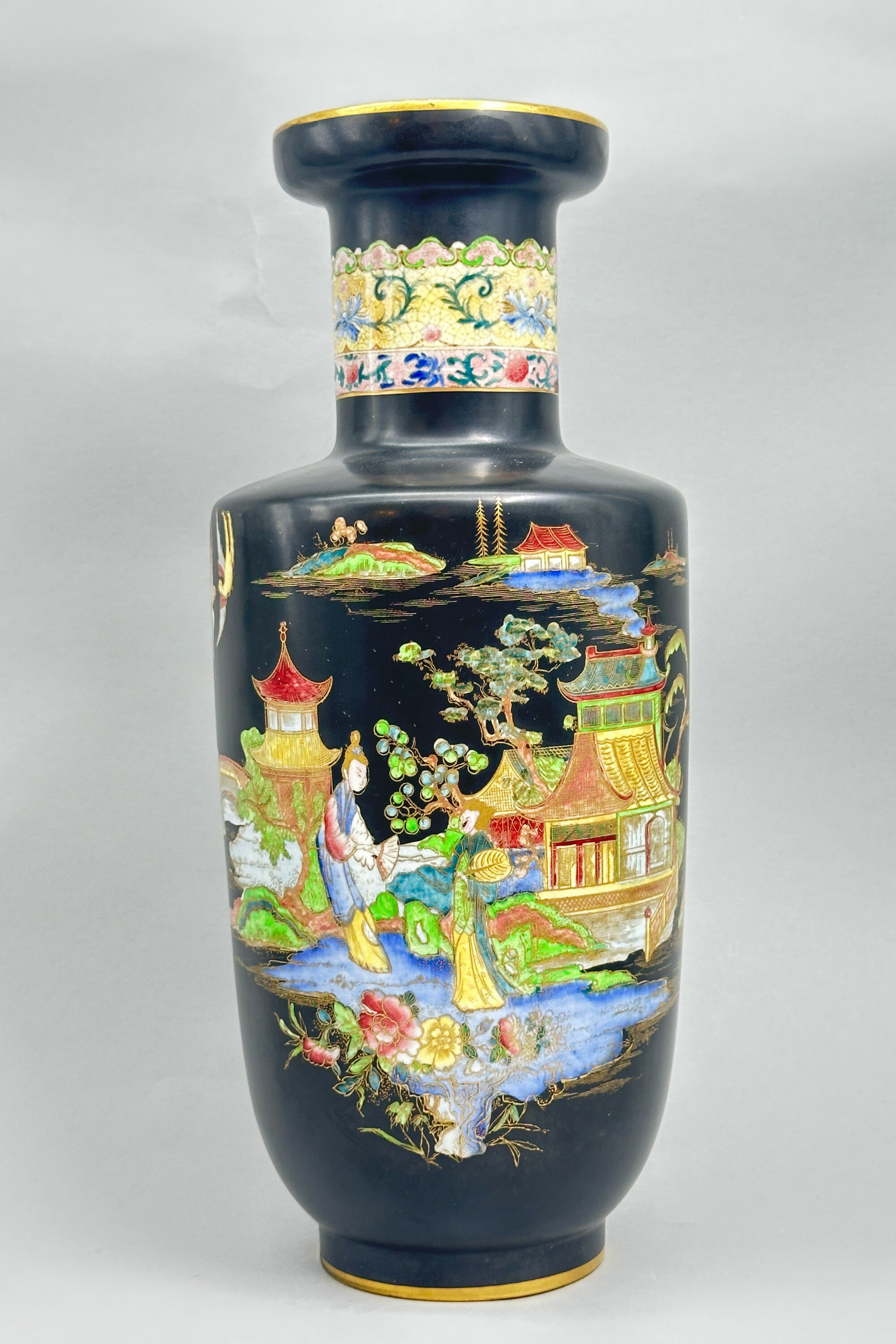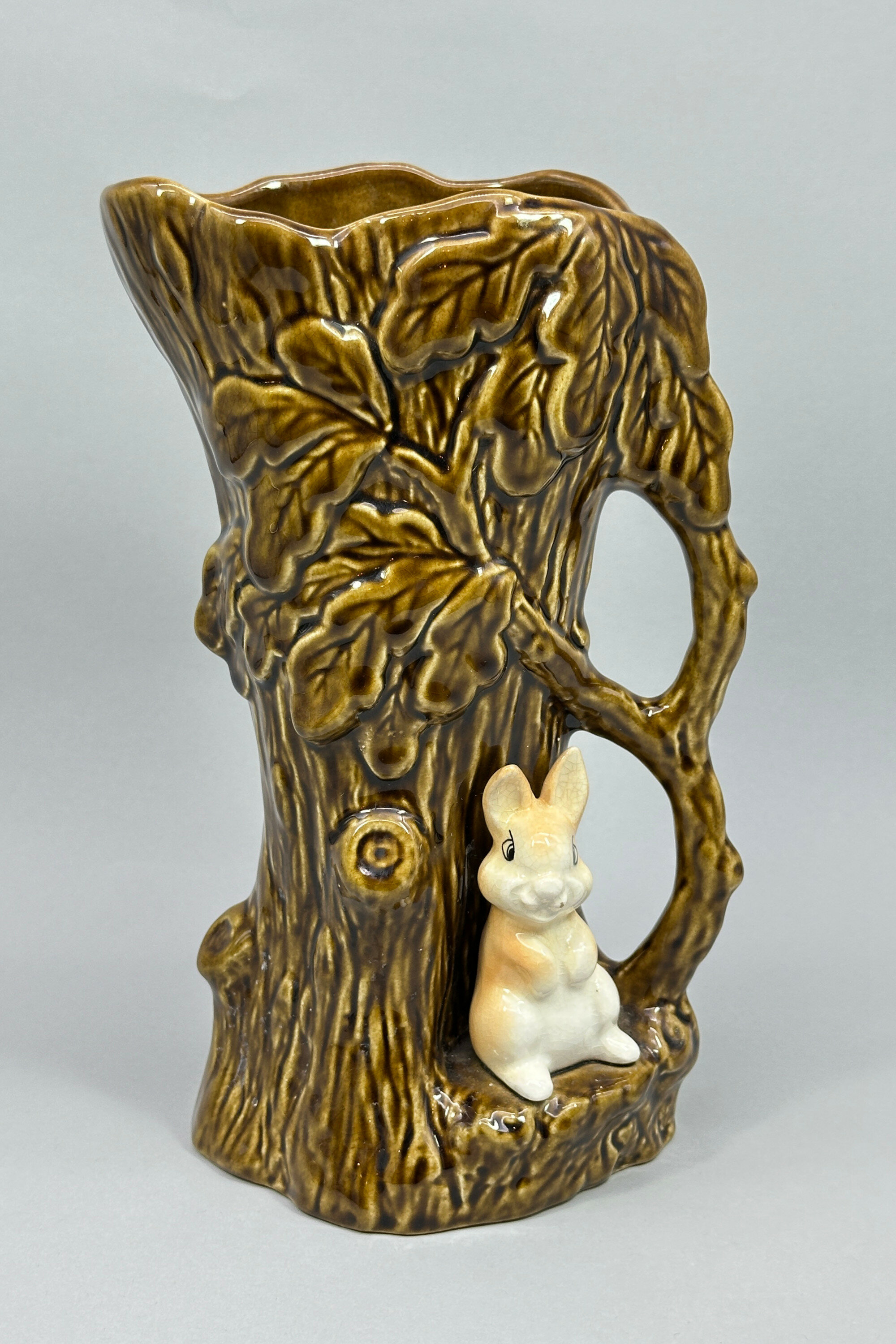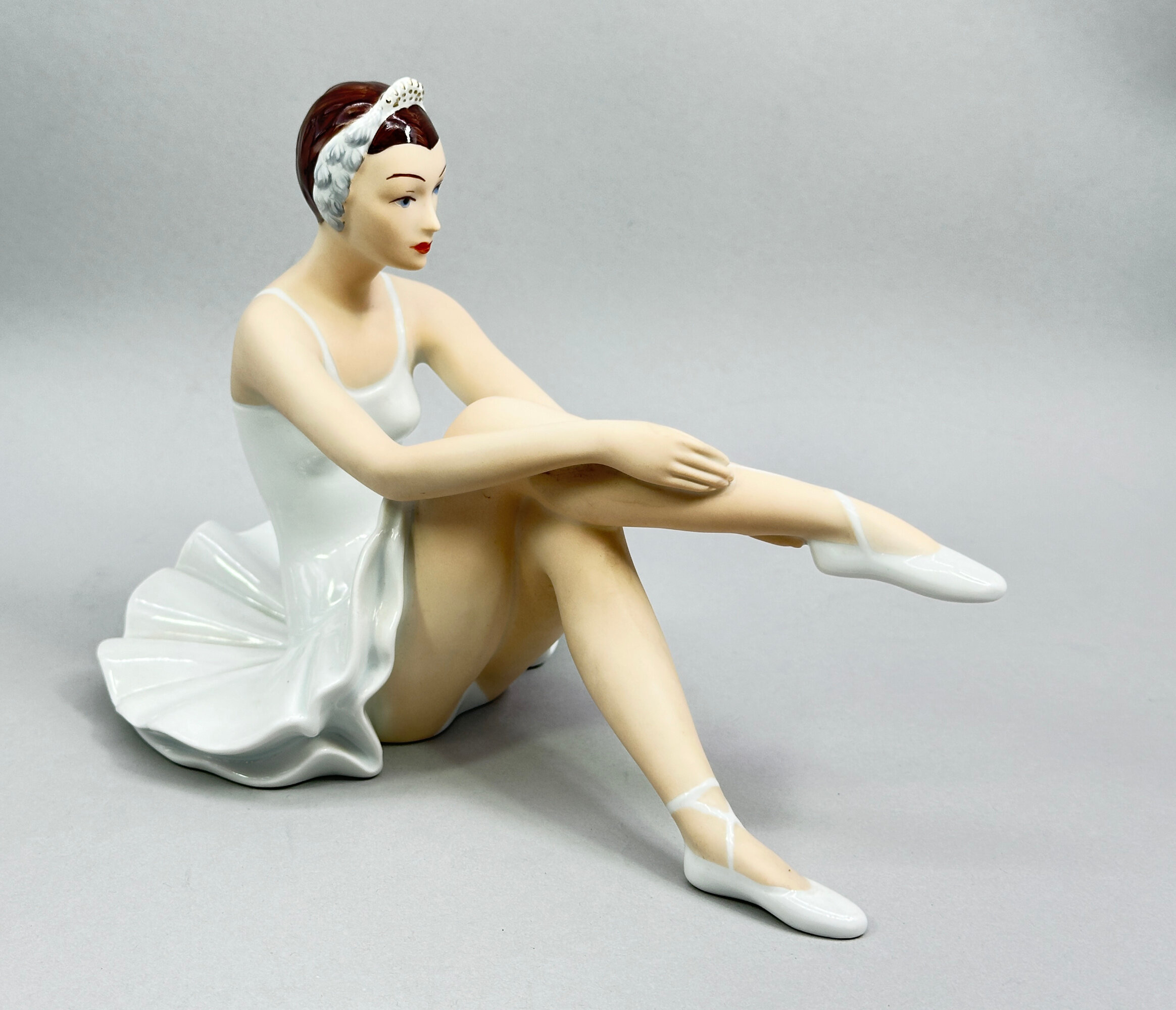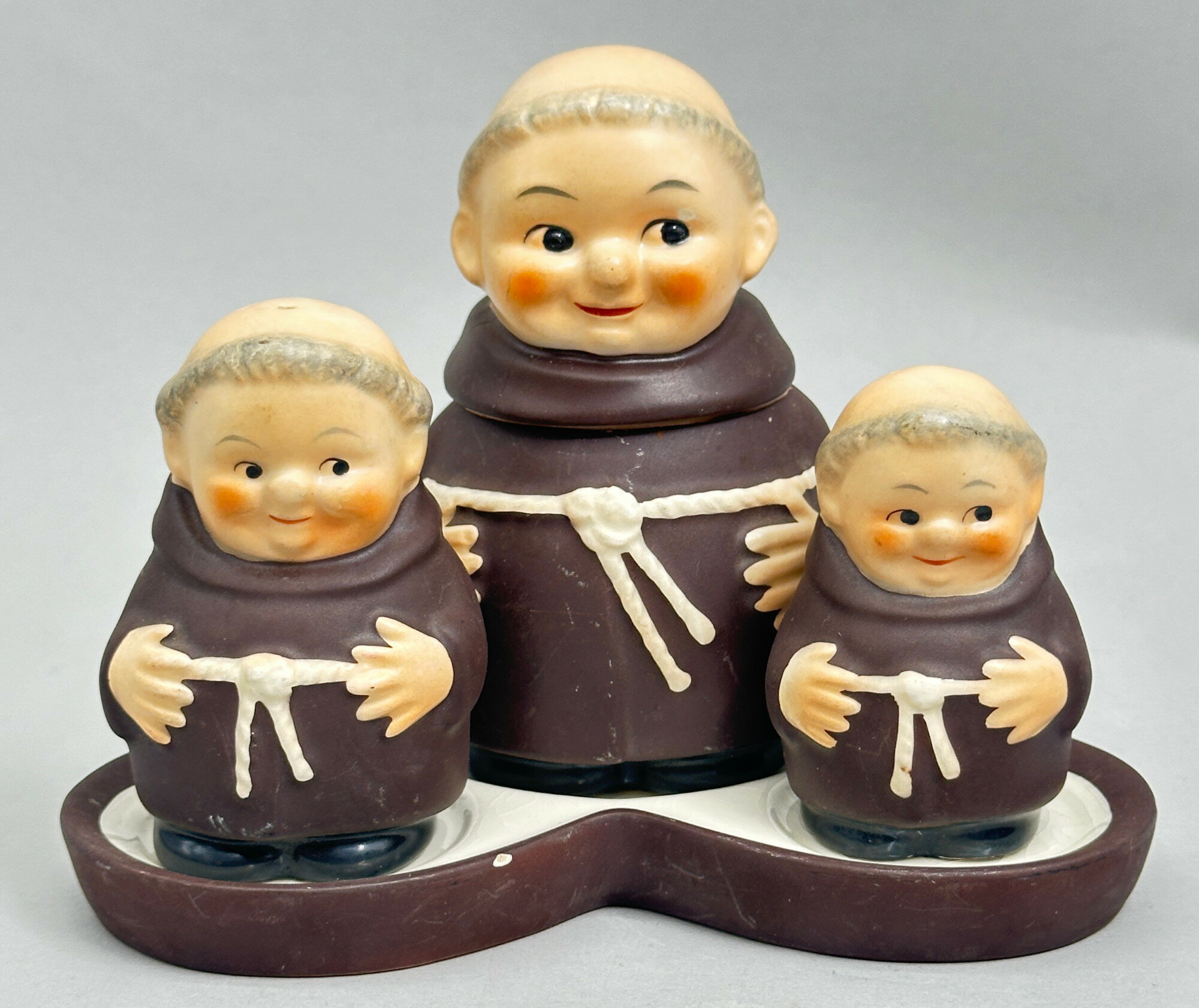
Cruet set in the form of three Friar Tuck Monks on a Tray, Hummel, West Germany, 1960s
Price: £55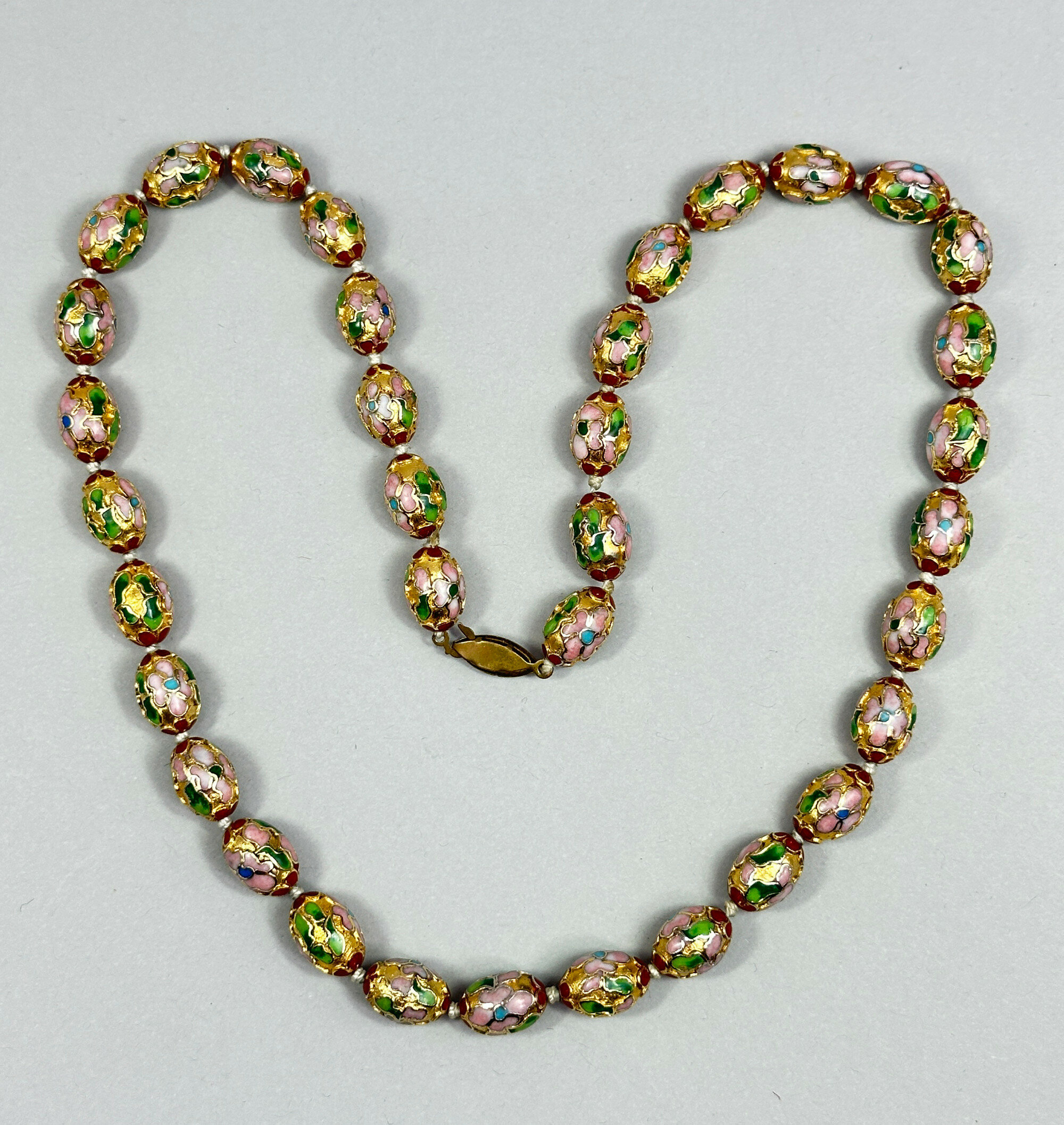
Vintage Chinese Cloisonne Bead Necklace, mid C20th
Price: £55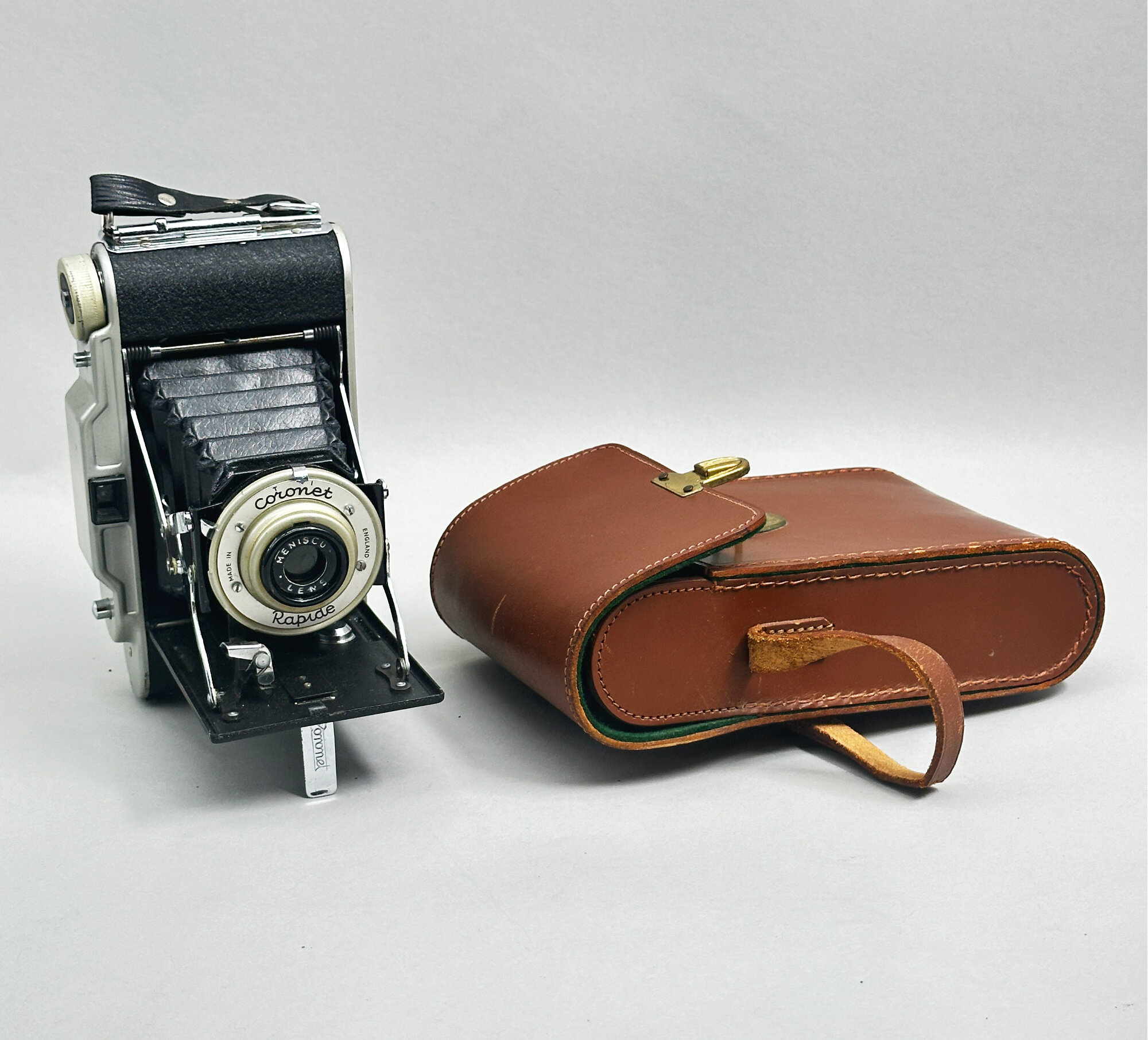
Mint Coronet Rapid camera with case 1950s
Price: £45
Striking continental silver modernist bracelet c1960
Price: £55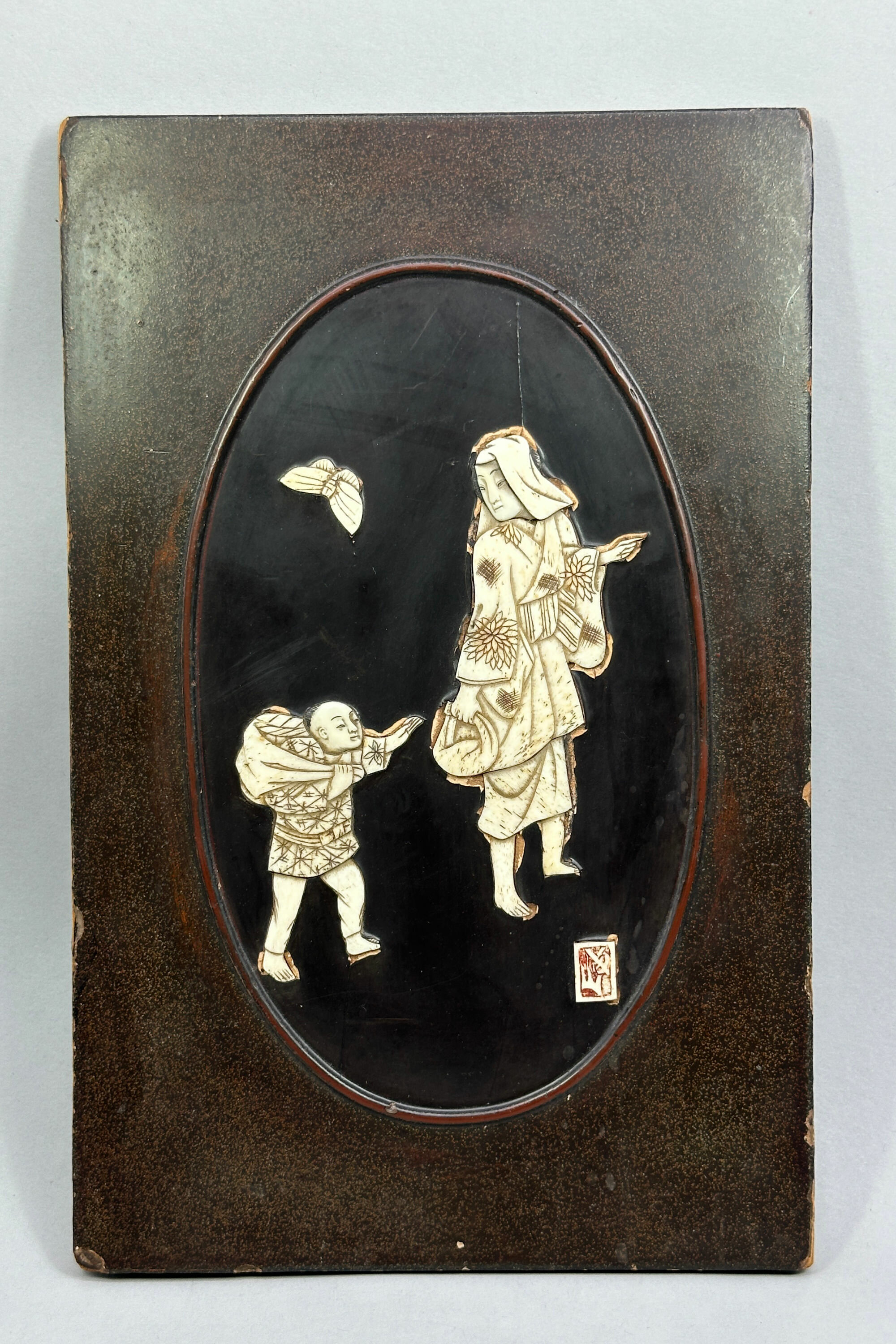
Japanese Bone and Lacquer Plaque, Lady and Boy, signed, late C19th
Price: £45These bone and lacquer plaques were produced in great quantities by Japanese artists in the late nineteenth century for export to the West and became a familiar feature of the European drawing room. The medium was easily subject to damage and loss, especially in respect of the bone inlay, and while this example has some slight damage this is confined to a crack in the lacquer ground of the panel itself and some chipping to the extremities of the panel. The decoration of the figures remains intact (the surround seems to have been cut away in some places to give added definition to the composition) and allows appreciation of the skill with which they were carved, presenting a genre scene of great charm.
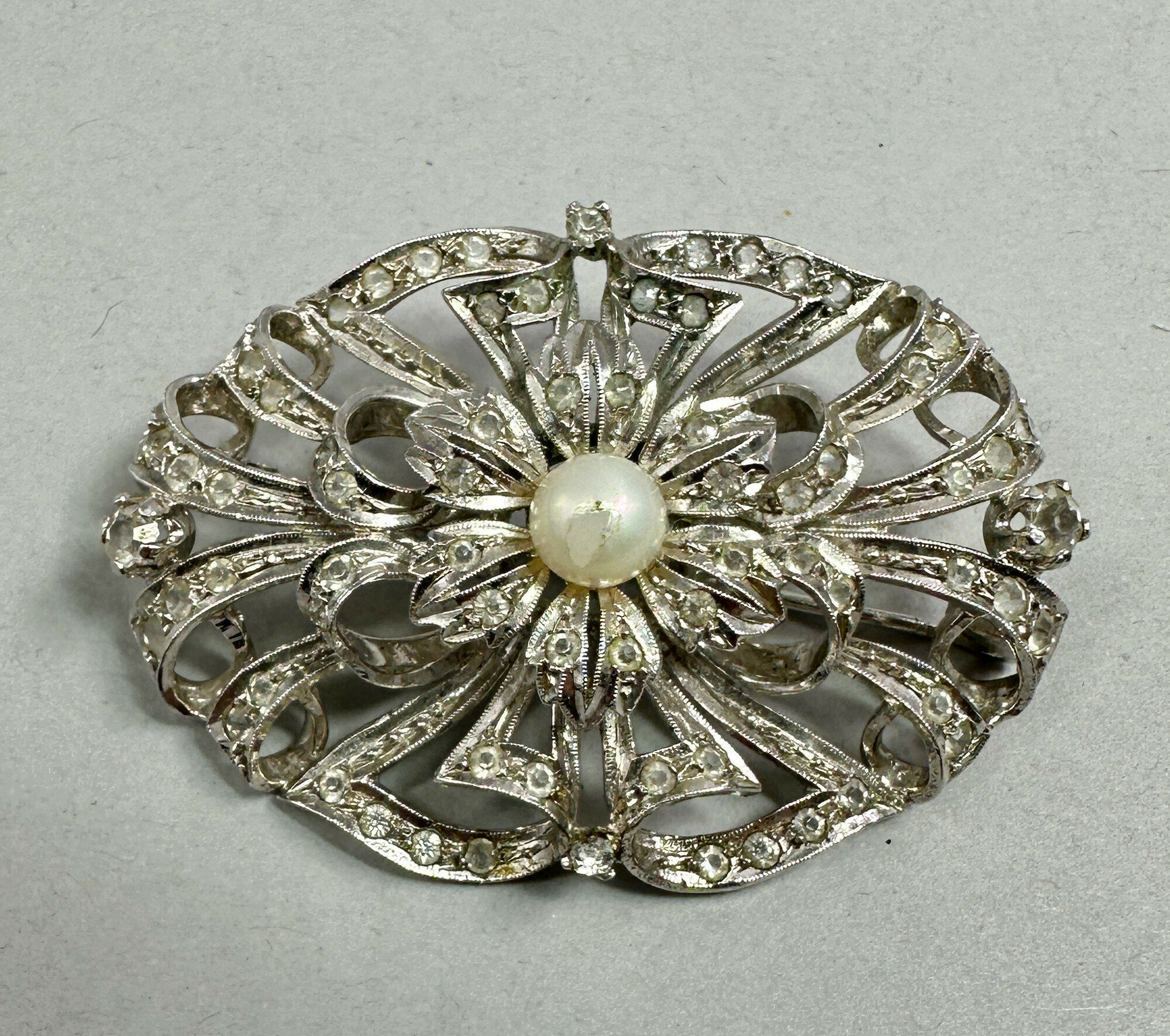
Incredible quality Silver and paste brooch c1950
Price: £45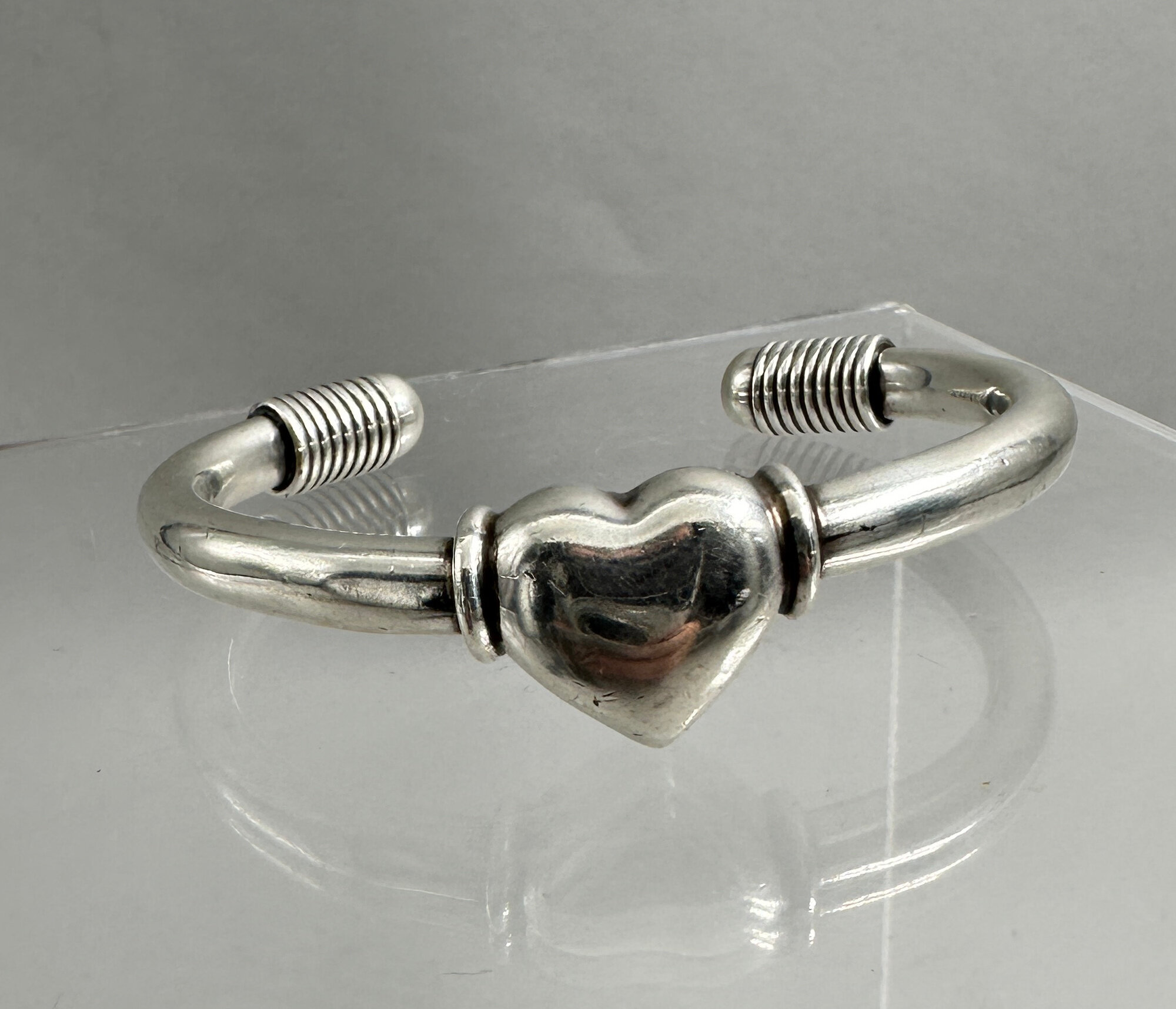
Sweet Taxco heart bracelet c1980
Price: £75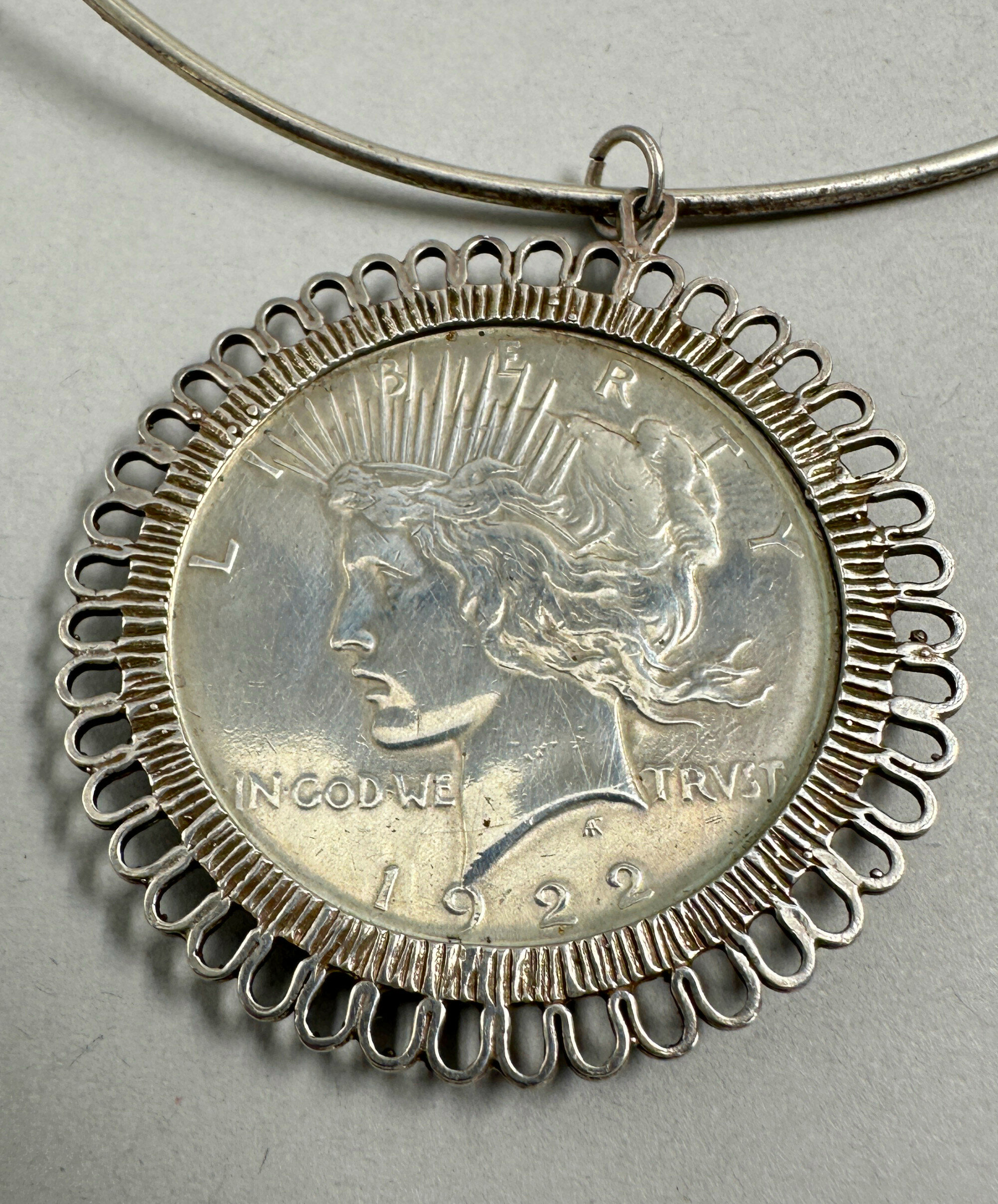
Liberty Dollar 1922 mounted as a pendant on necklace
Price: £35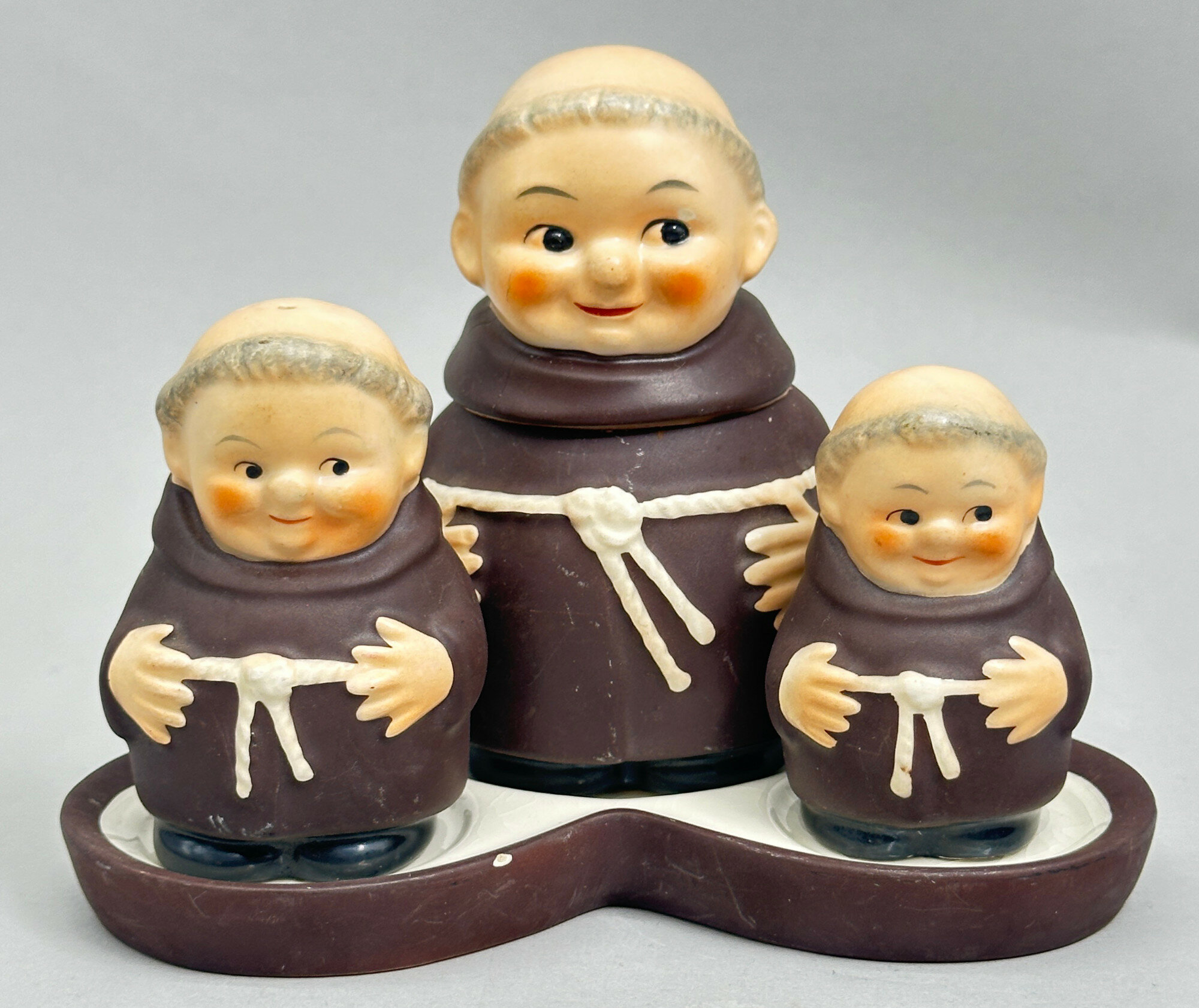
Cruet set in the form of three Friar Tuck Monks on a Tray, Hummel, West Germany, 1960s
Price: £55
Vintage Indian silver pendant Necklace, 20th century
Price: £85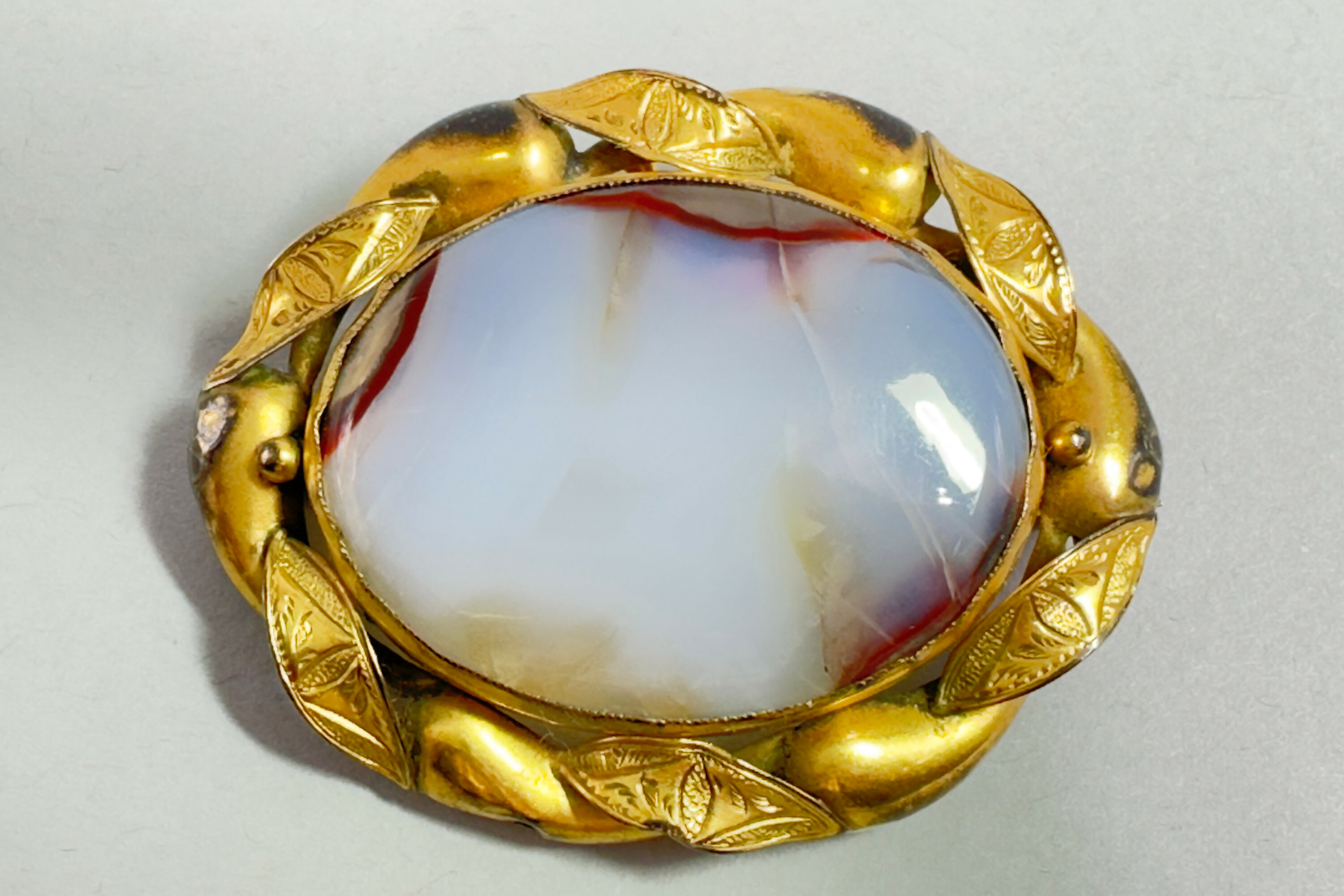
Edwardian rolled gold and white agate brooch, c1910
Price: £45
Silver Cricket Box, Islamic probably Persian, early C20th
Price: £110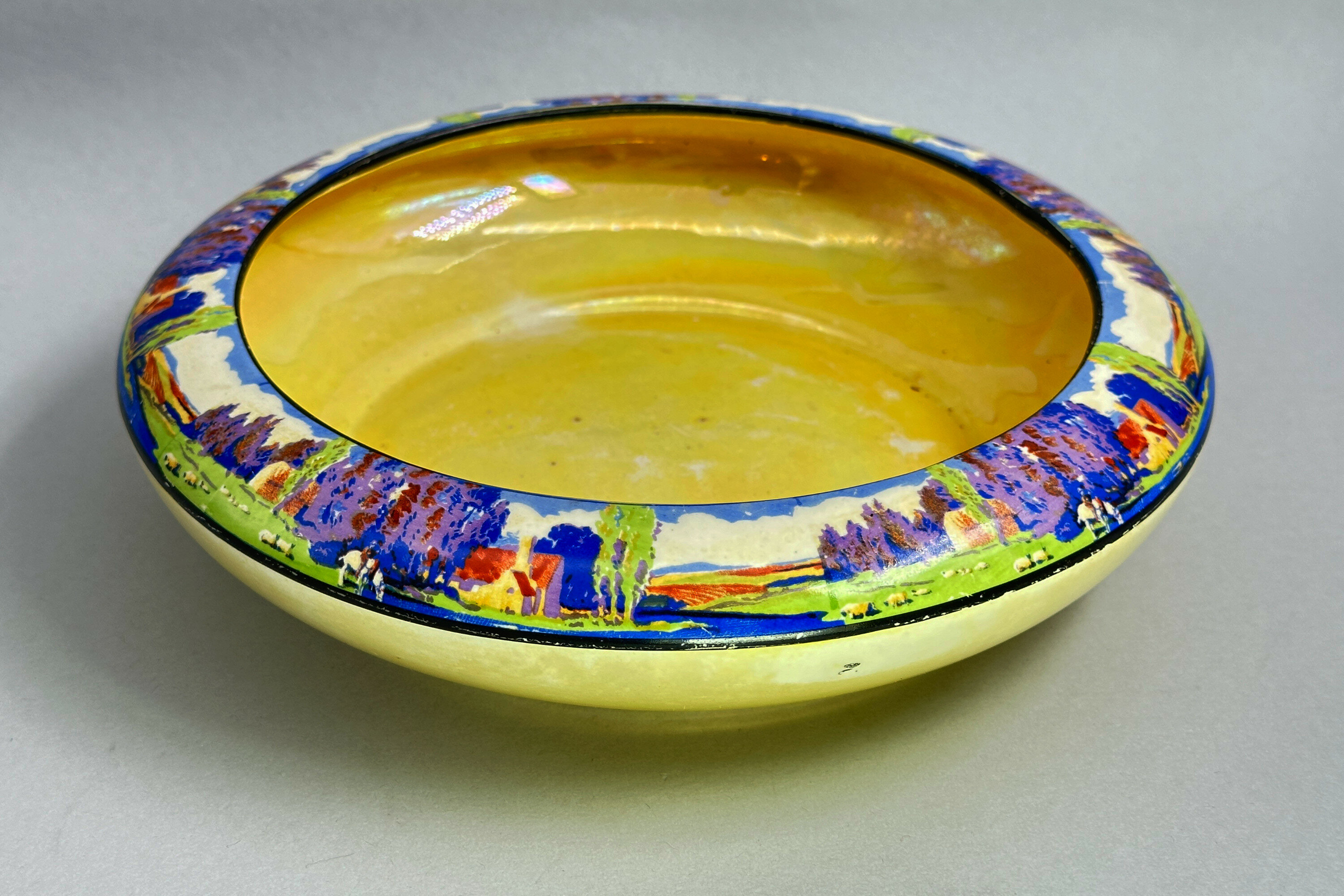
Hanley Ware circular bowl, Lancaster and Sons, 1920s
Price: £25Lancaster & Sons Ltd were manufacturers of earthenware at the Dresden works, Tinkersclough, in the Shelton area of Hanley, Stoke-on-Trent, England. The firm was founded in 1899 under the name ‘Lancaster and Barker’ was renamed ‘Lancaster & Sons Ltd’ in the early 1900s and continued production until 1944. In the 1920s they produced various pieces with rural landscape scenes of which this is an example. Some see reminiscences of the ‘Arts and Crafts’ movement here but the mark found on the bottom clearly dates the piece to the 1920s. The yellow lustre glaze is interesting and free from the crazing sometimes found.
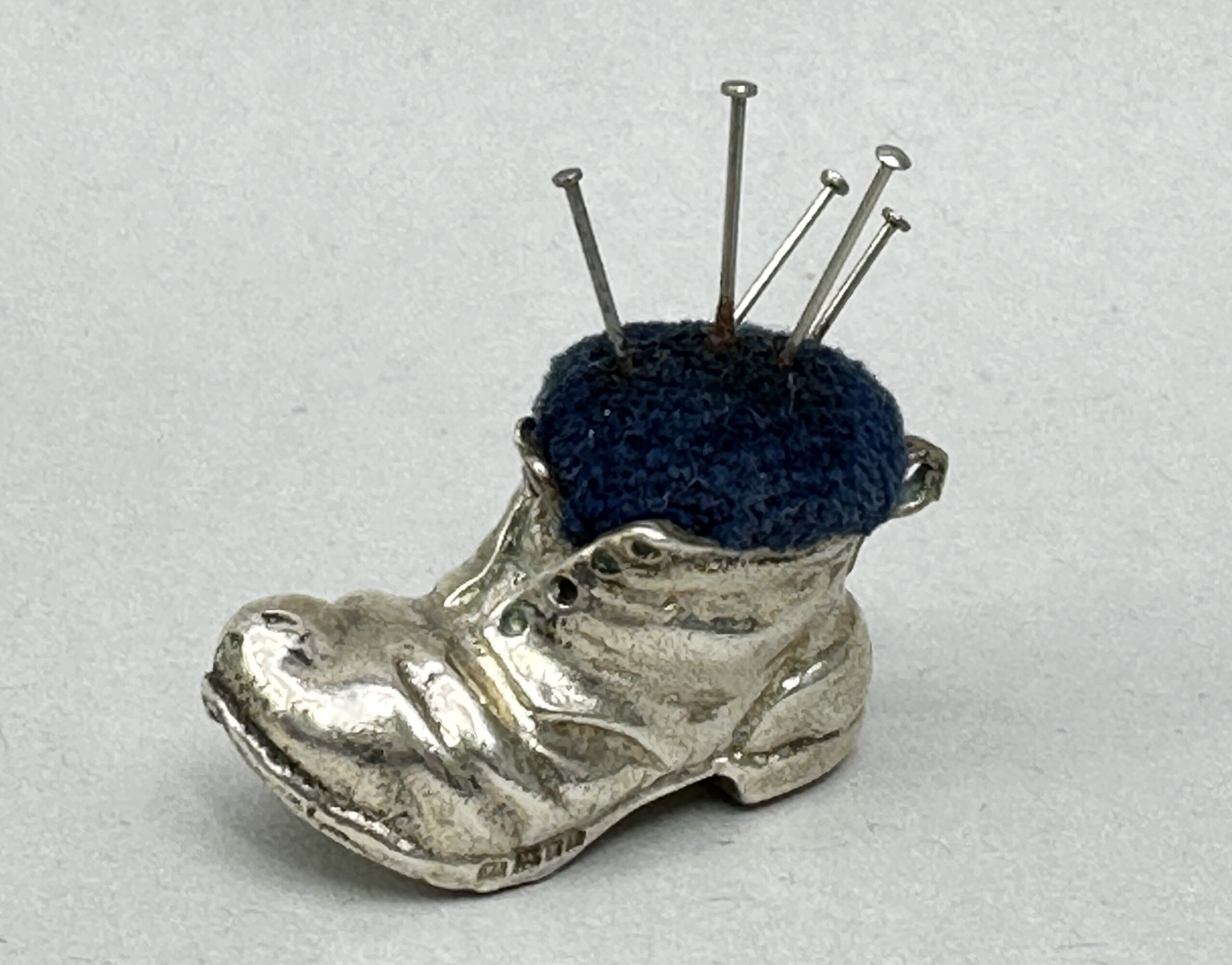
English Silver pin cushion in the form of a boot, London 1991
Price: £75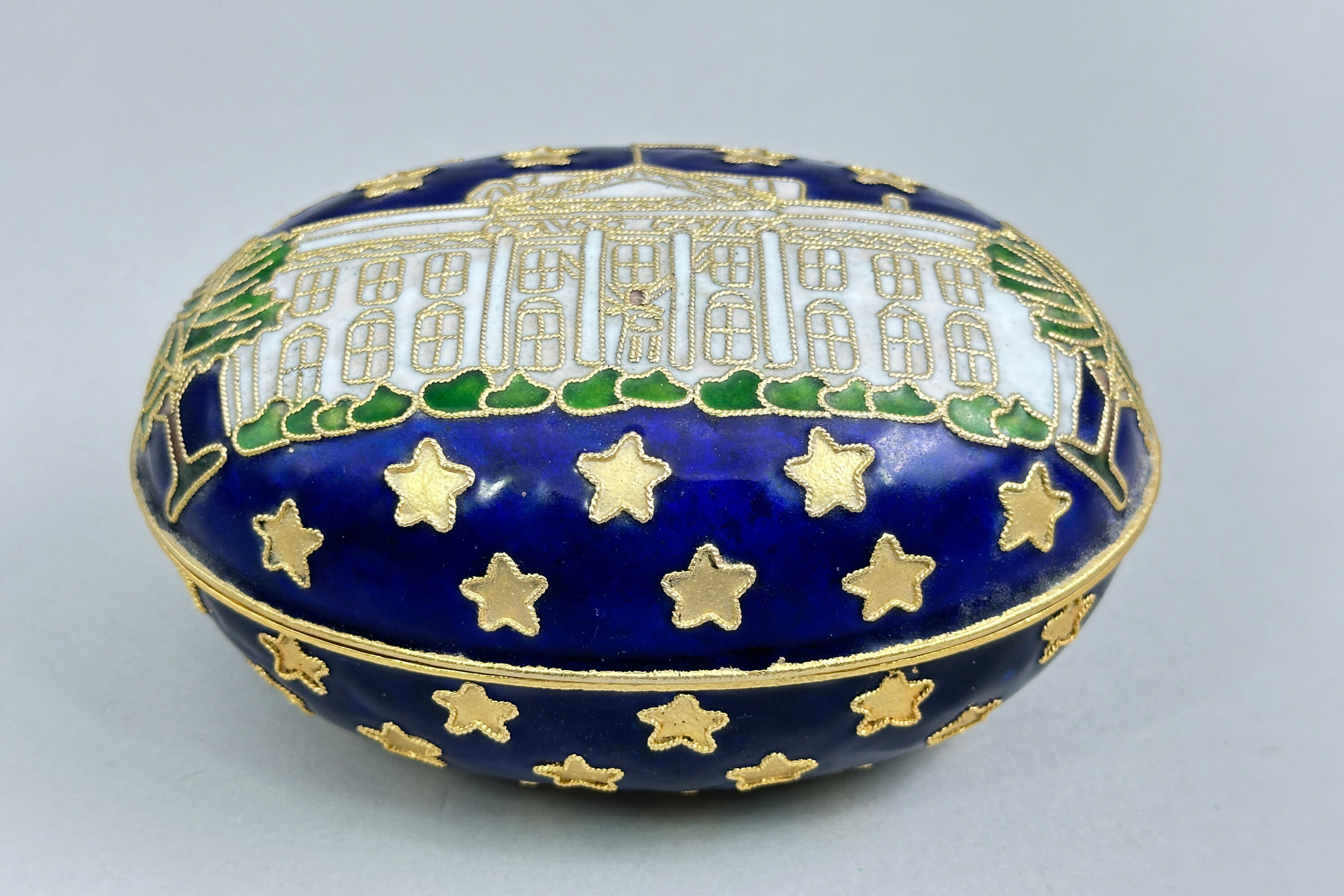
Souvenir White House Enamel Box and Cover
Price: £15
Four Art Deco style small Glass Vases with silver decoration, possibly Murano 1930s
Price: £55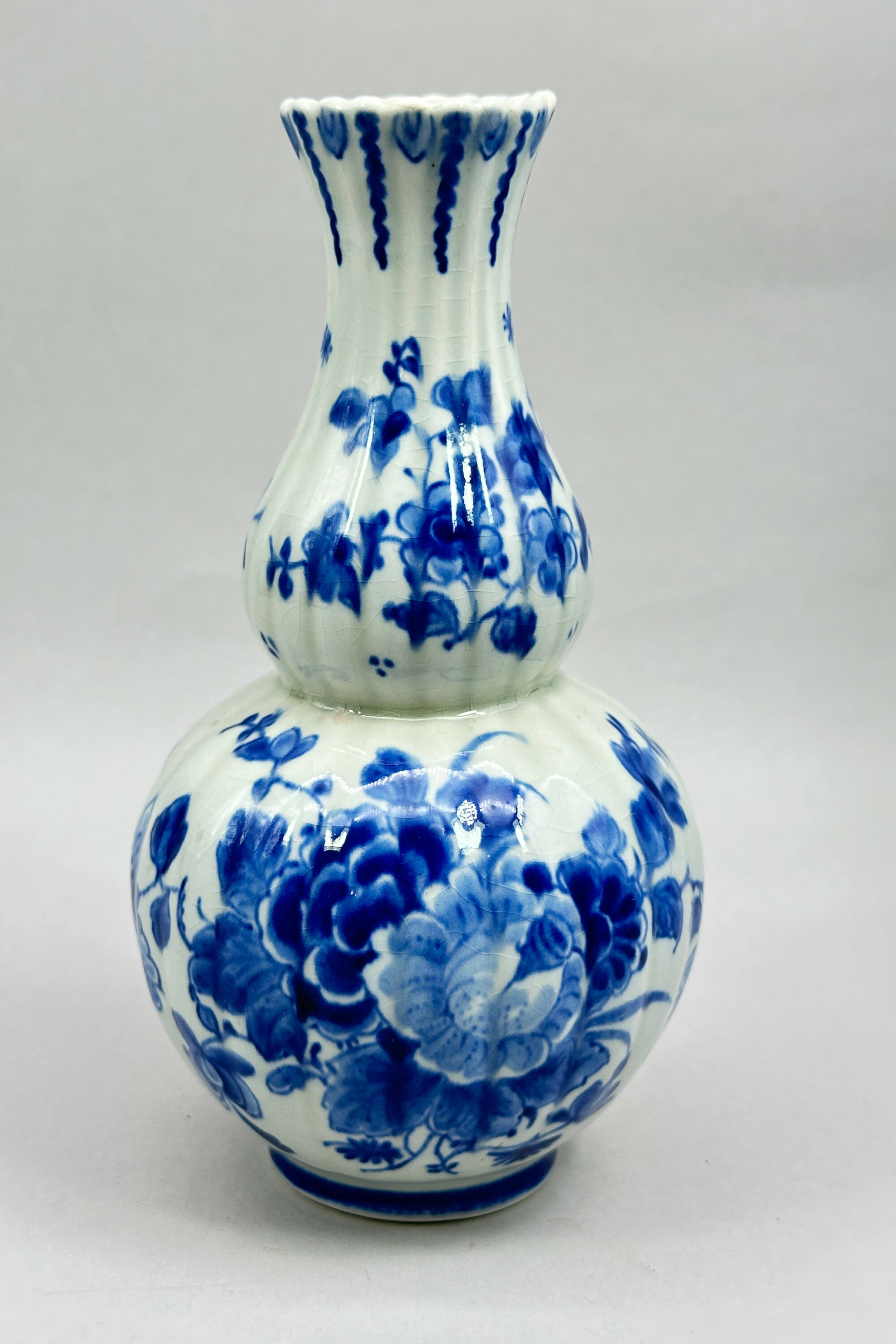
Dutch Delft Blue and White Gourd Vase in C18th Style, late C20th
Estimate: £20 – 30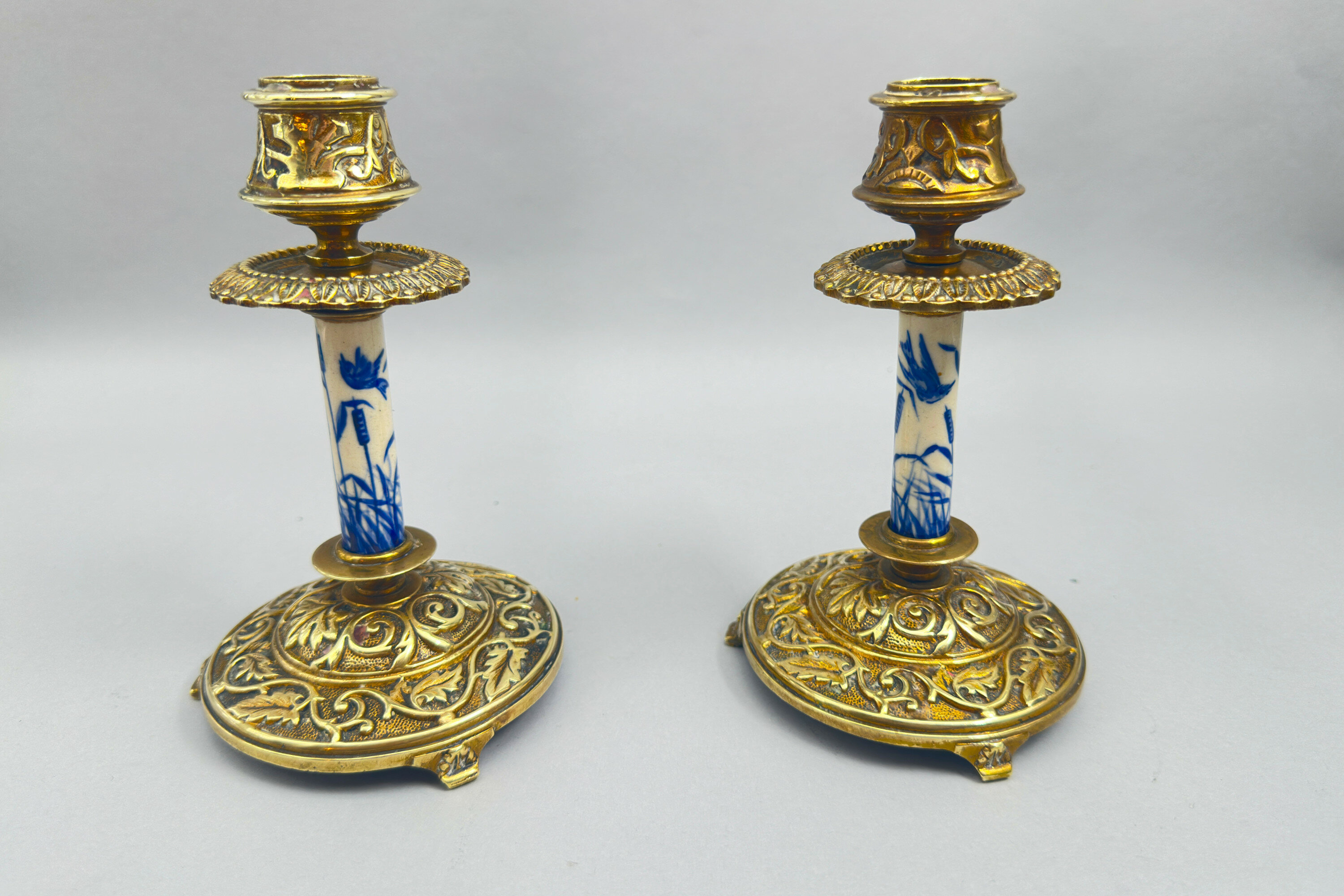
Pair of Aesthetic Movement Candlesticks Porcelain and Gilt Bronze, late C19th
Price: £75The design and style of these pieces recalls products of the ‘aesthetic movement’ era popular in Britain from 1860 to 1900. The object was to produce items of beauty and the furnishings and domestic objects of the middle-class home were to be of a quality that would please the eye of the artist and grace the houses of collectors and connoisseurs. William Morris, in particular, concentrated on distinctive organic forms and the floral designs of his wallpaper and tiles are reflected in the gilt bronze decoration here (see image 8) . The influences on the movement were diverse and Oriental porcelains extremely popular. Perhaps this explains the use of blue and white ceramic here, although the work looks Western rather than Eastern. The form of the nozzles also has many parallels in other contemporary candlesticks. Although there is a slightly continental feel to these pieces, the aesthetic movement was very much a British fashion so English manufacture is the most likely with a circa date in the late nineteenth century before the style lost its popularity in 1900.
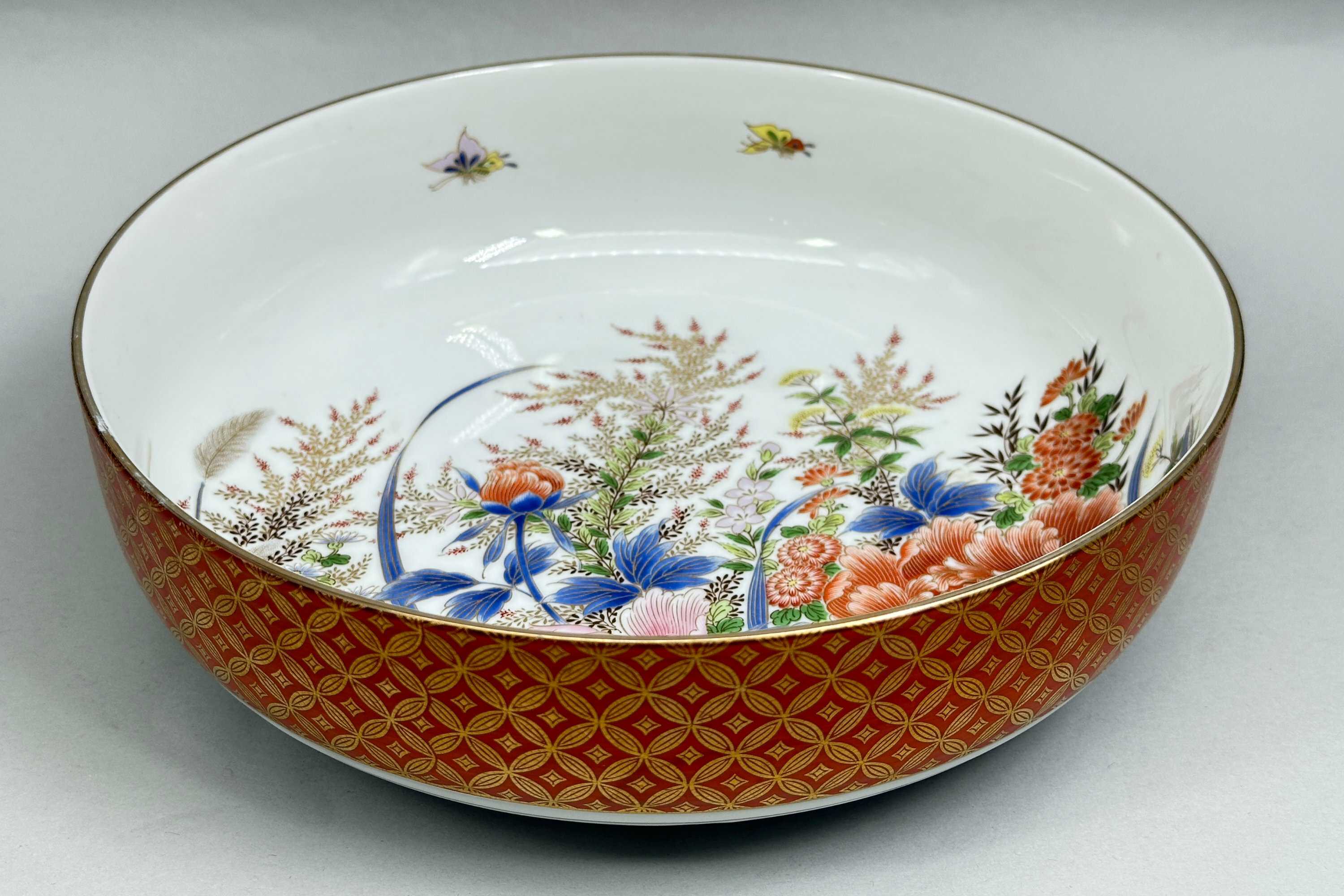
Japanese Polychrome Bowl, Shibata Toki ware, late c20th
Price: £45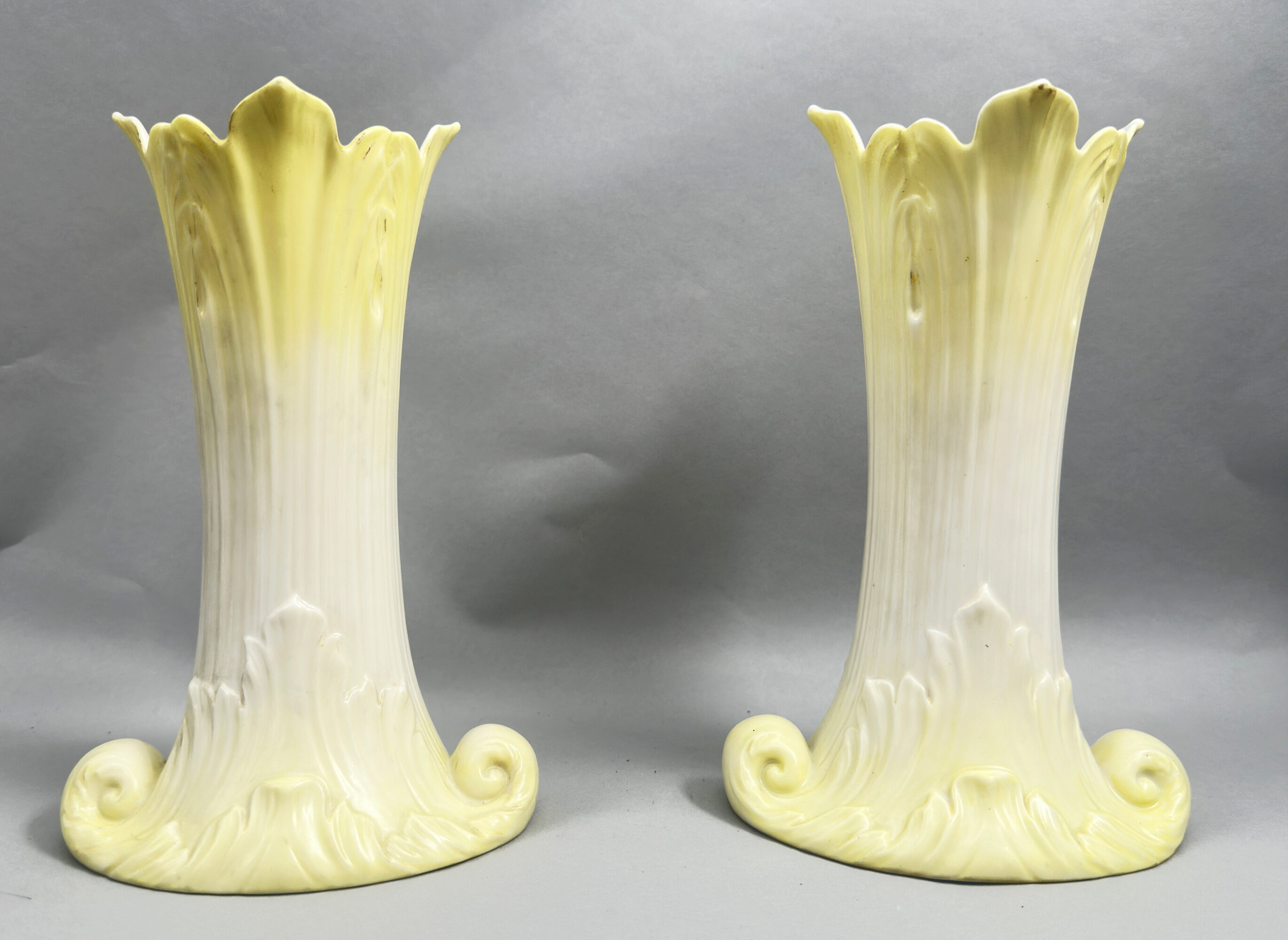
Pair of Royal Worcester Grainger and Co Vases, date mark for 1902
Estimate: £80 – 120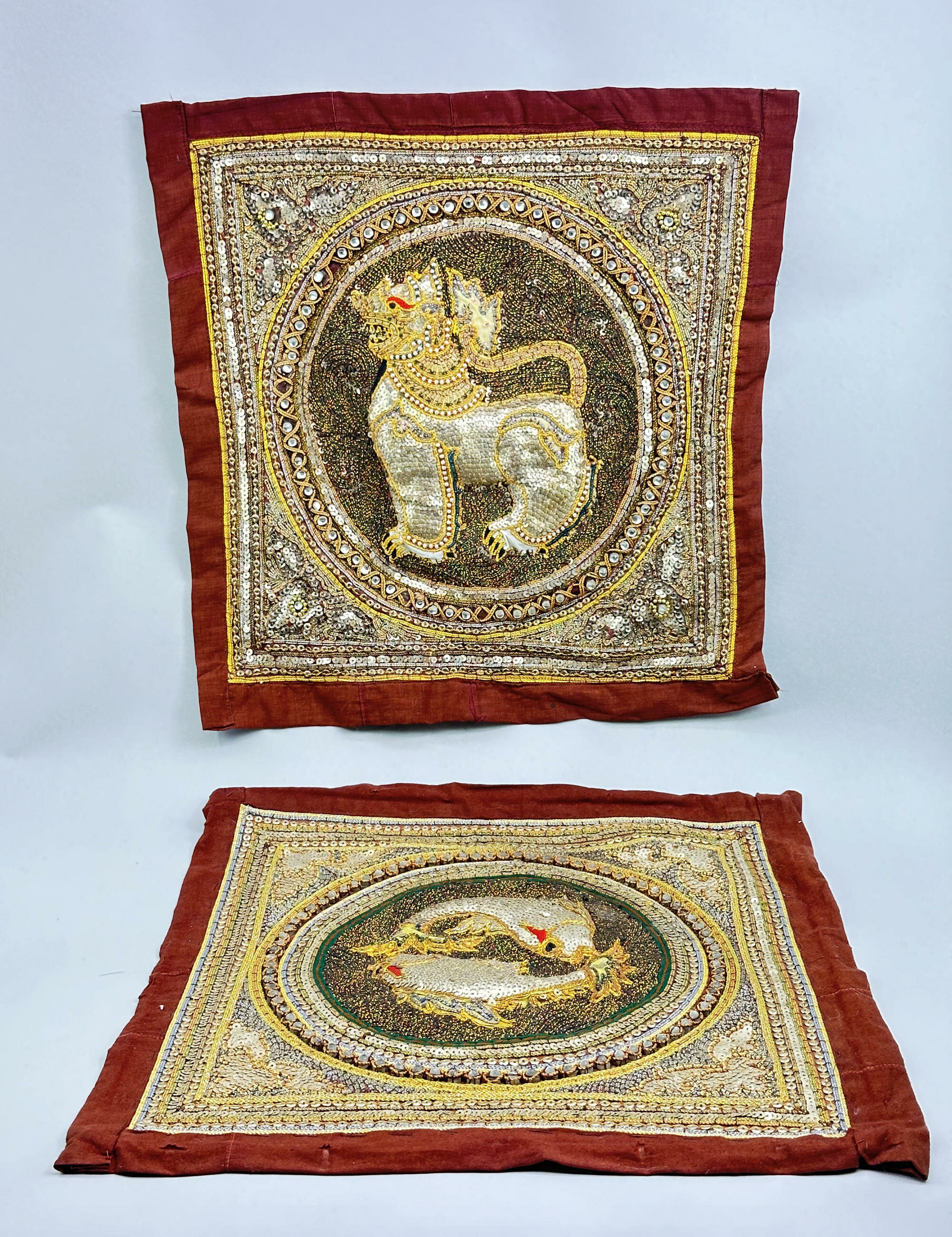
Two Burmese Textiles, mid C20th
Price: £55The distinctive style of embroidery and applied work here is typical of Burmese work known as ‘Kalaga’ which means ‘curtain’ in Burmese and is used to refer to heavily embroidered appliqué tapestry sewn with a technique called ‘shwe gyi do’. First produced around 150 years ago, Kalagas are generally linen, silk, cotton or velvet background fabrics embellished with sequins, embroidery, beads, coloured stones, tiny pearls, coral, braids and metal threads, the choice of materials depending in part on the client’s budget. Cotton padding was used to produce the ‘3D’ effect seen here and on many other examples of the work. The elaborate decoration meant that some of the larger pieces could take many months to produce. These two panels are an excellent example of the genre with the lavish use of gold thread. They have survived in excellent condition and can decorate an interior today in the same way that they graced the interiors of the makers’ contemporaries. Dating is difficult and a mid C20th attribution is probably sensible but an earlier period of manufacture is quite possible.
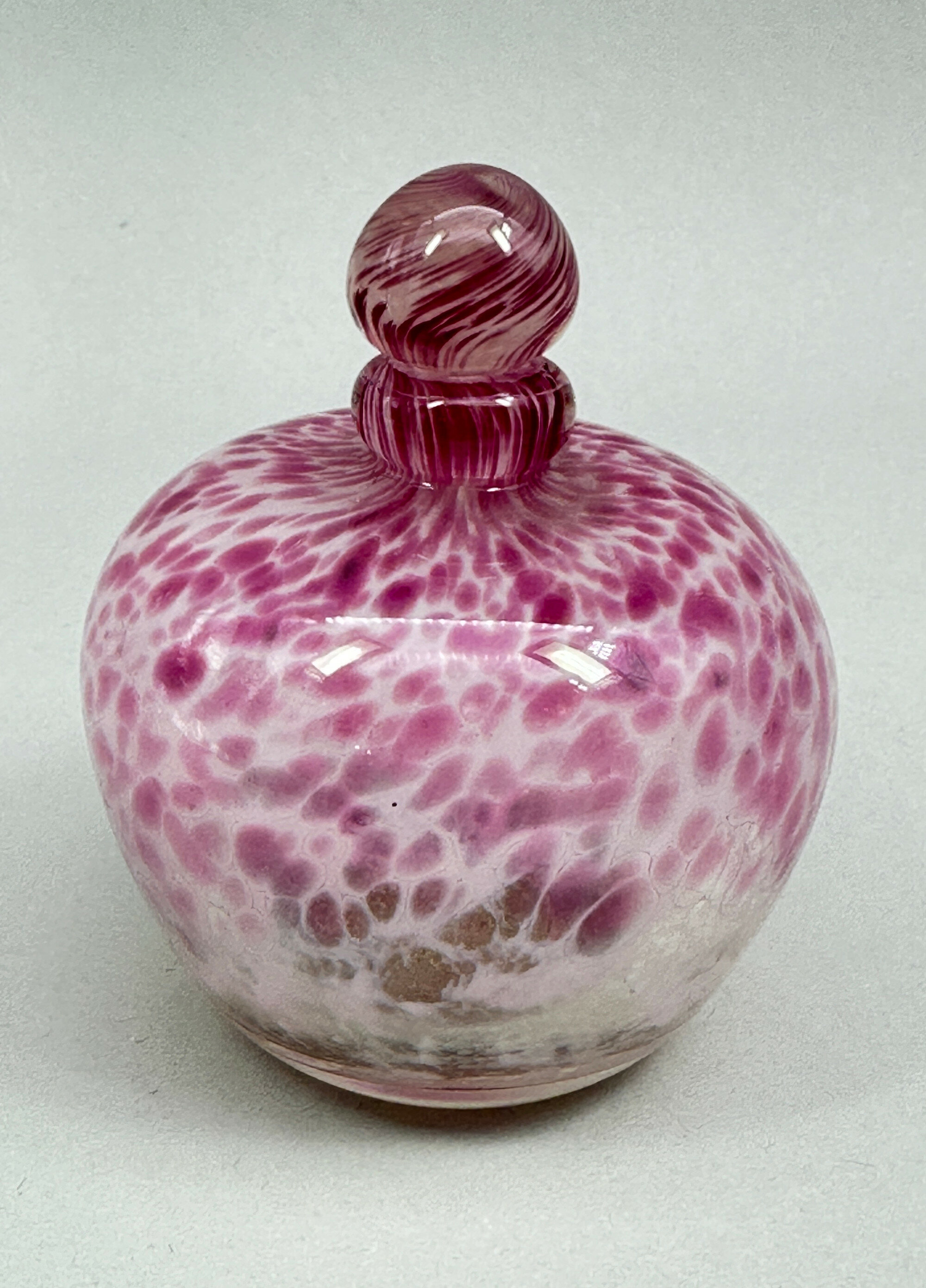
Caithness Glass Perfume Bottle and Stopper, late C20th
Price: £30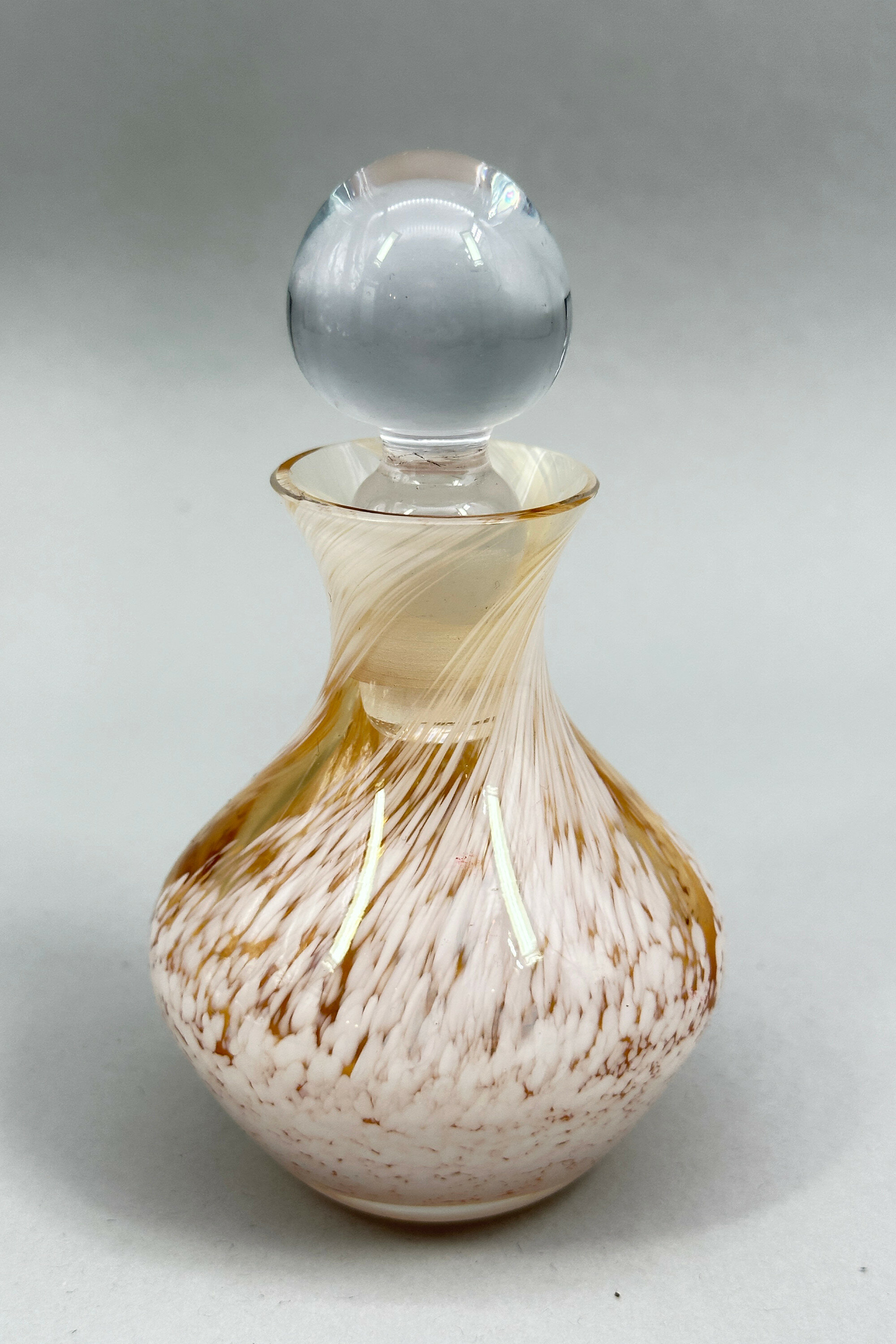
Perfume Bottle and Stopper, Island Studio, Guernsey, late C20th
Price: £30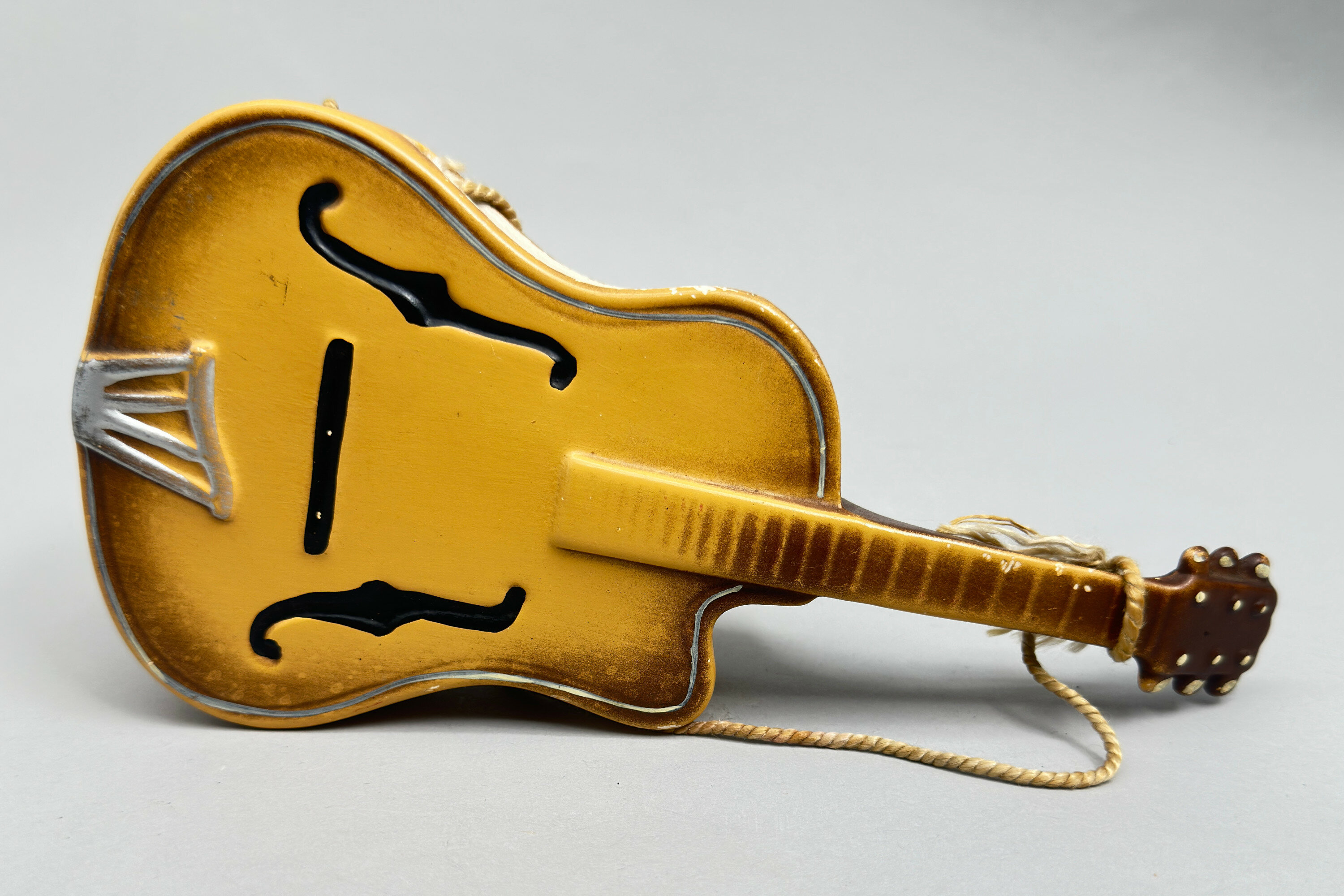
Novelty ceramic Wall Vase in the form of a Gretsch Guitar, English, 1950s
Price: £25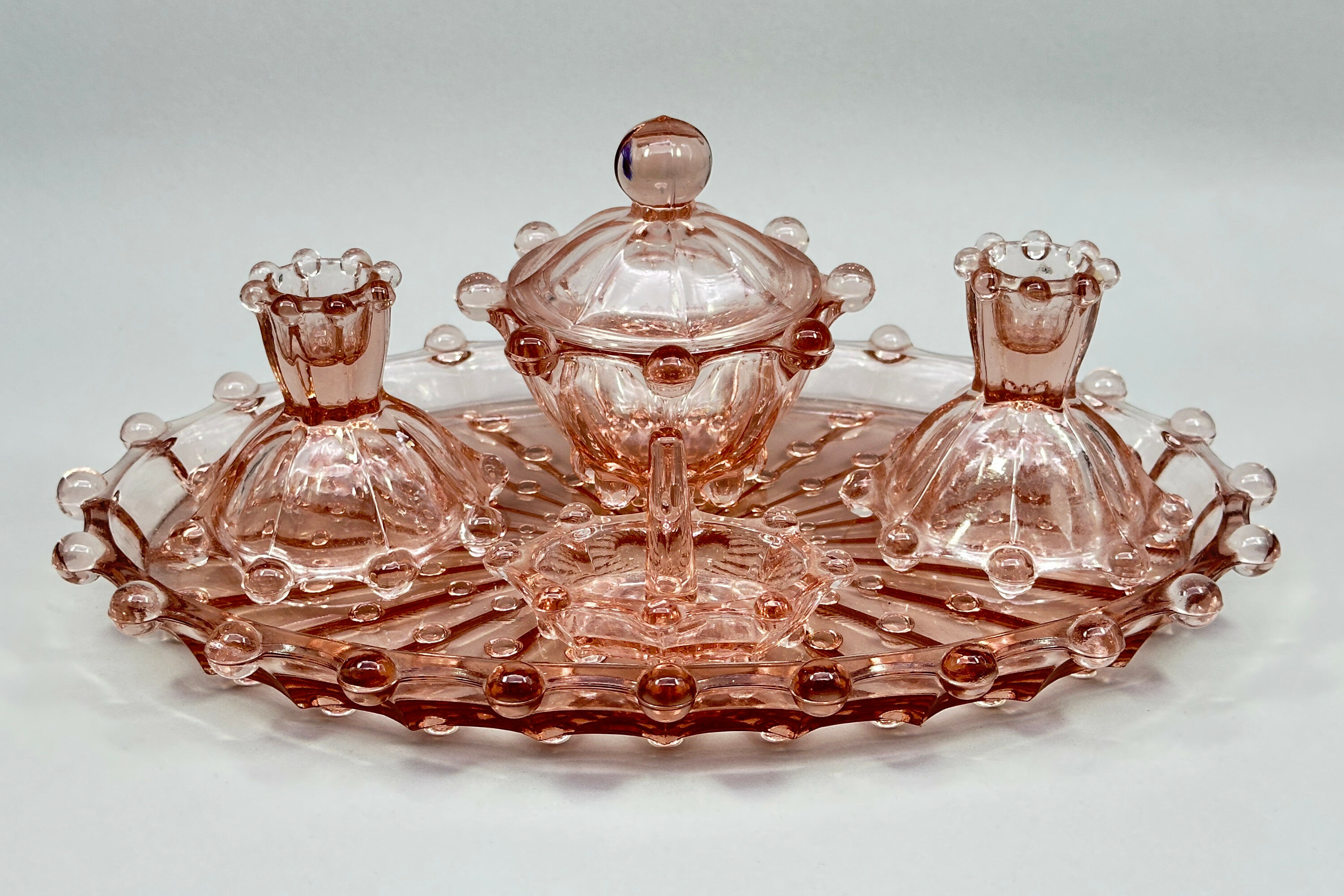
Pink pressed glass dressing table set, Libochoviche, Czech, 1950s
Price: £35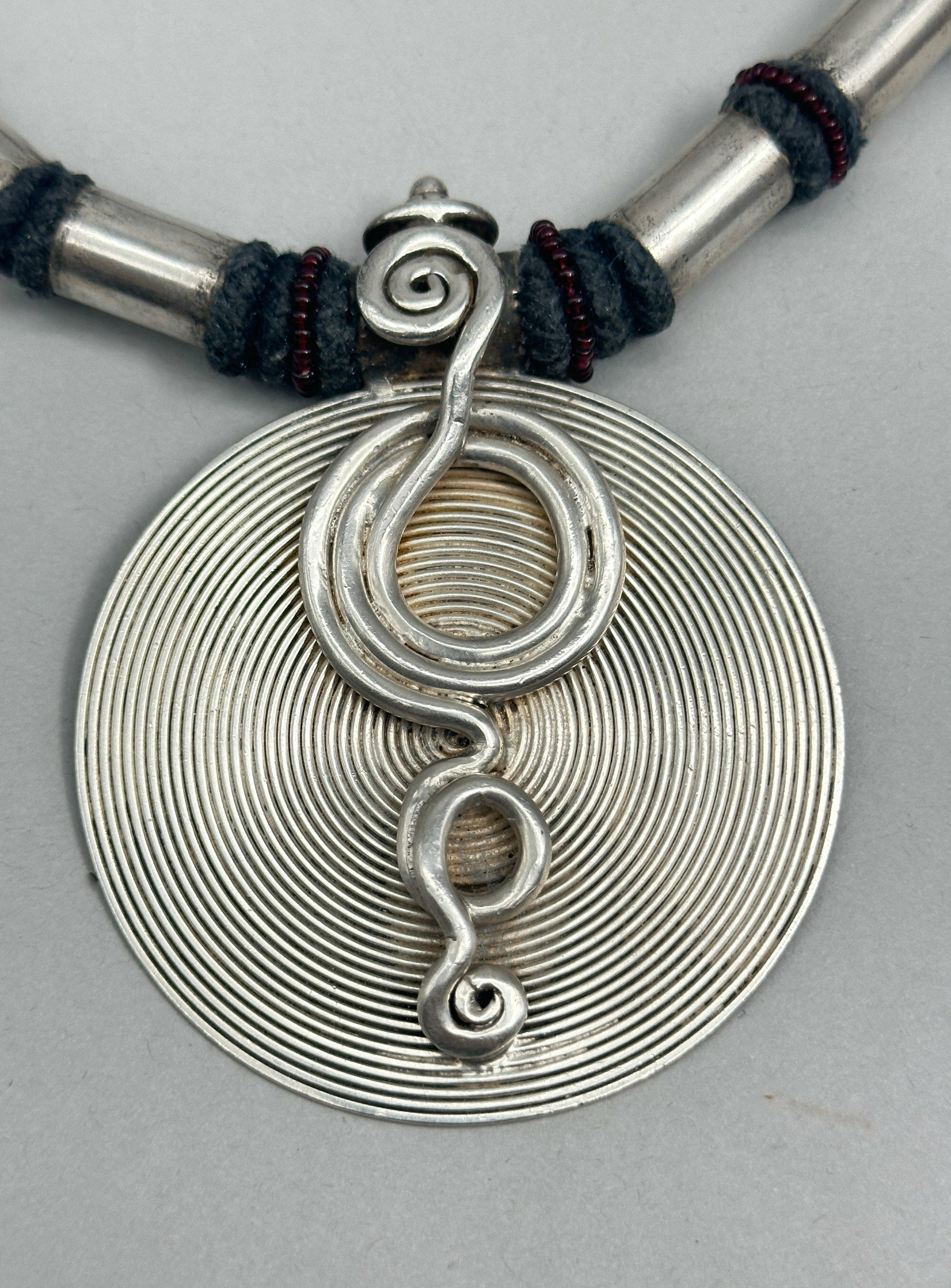
Indian tribal necklace, 19th century
Price: £175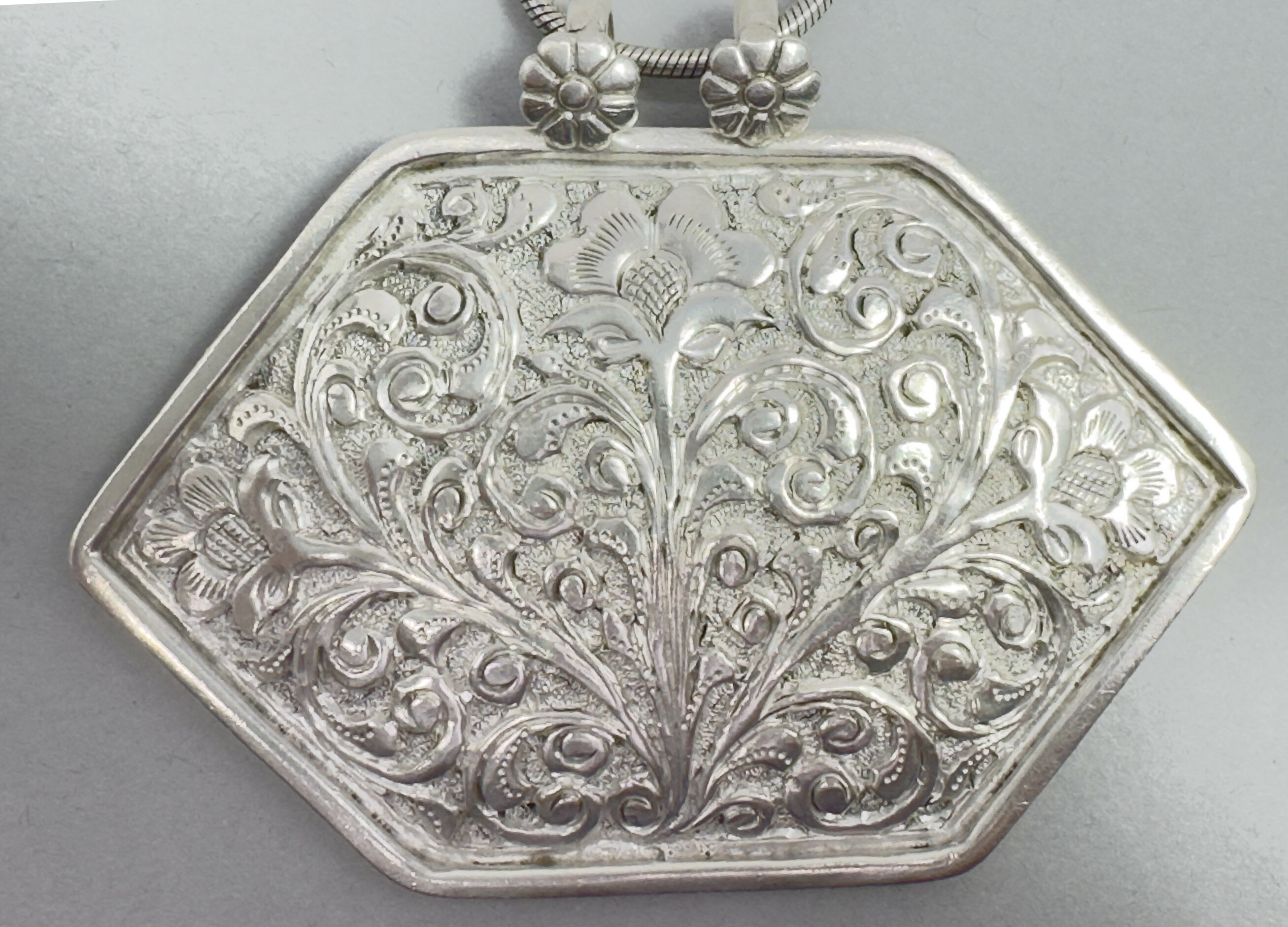
Very fine Indian silver repousse plaque Necklace, c1970
Price: £85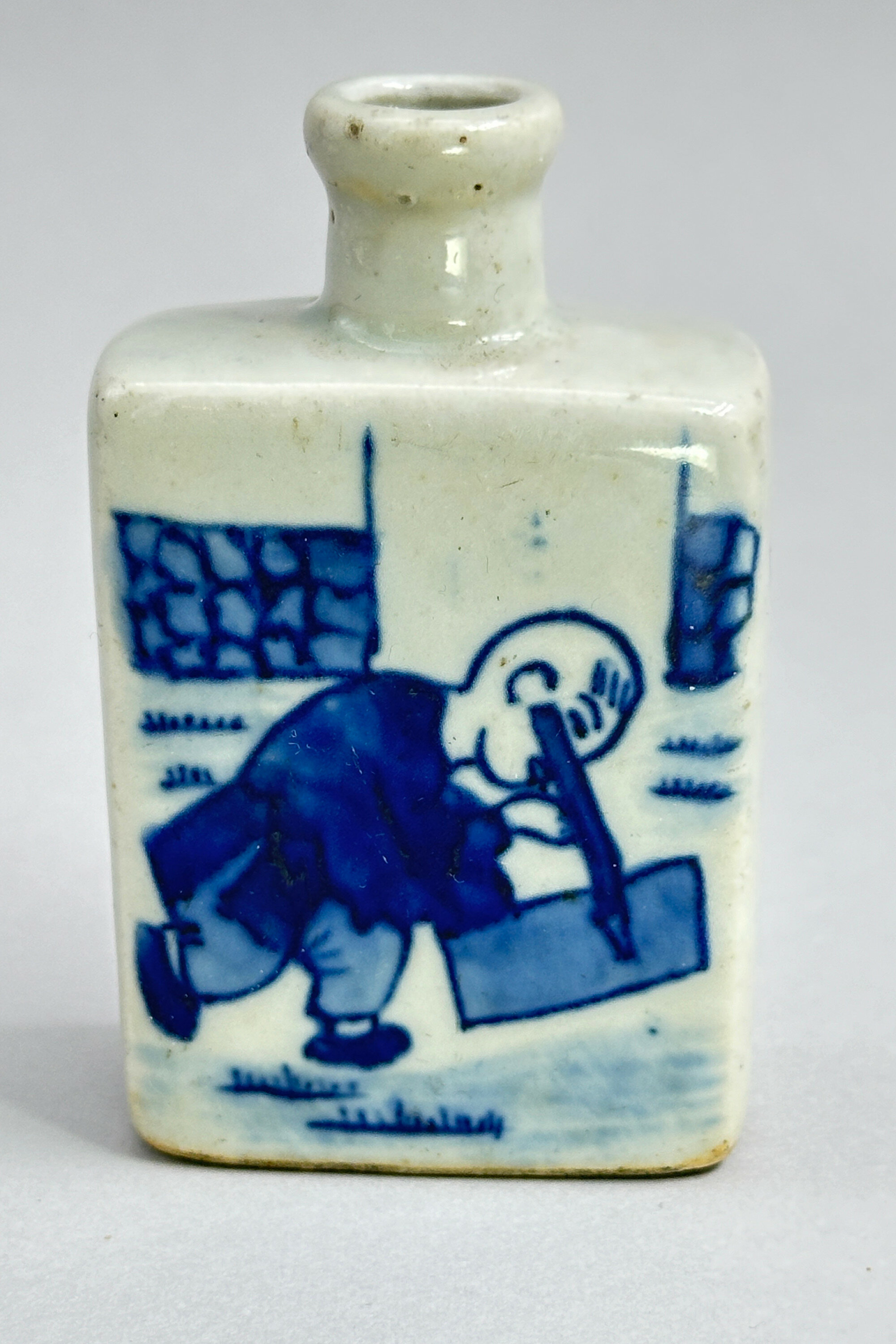
Chinese Blue and White Snuff Bottle circa 1900
Price: £45
Charming small amber pendant brooch set as an owl c2000
Price: £15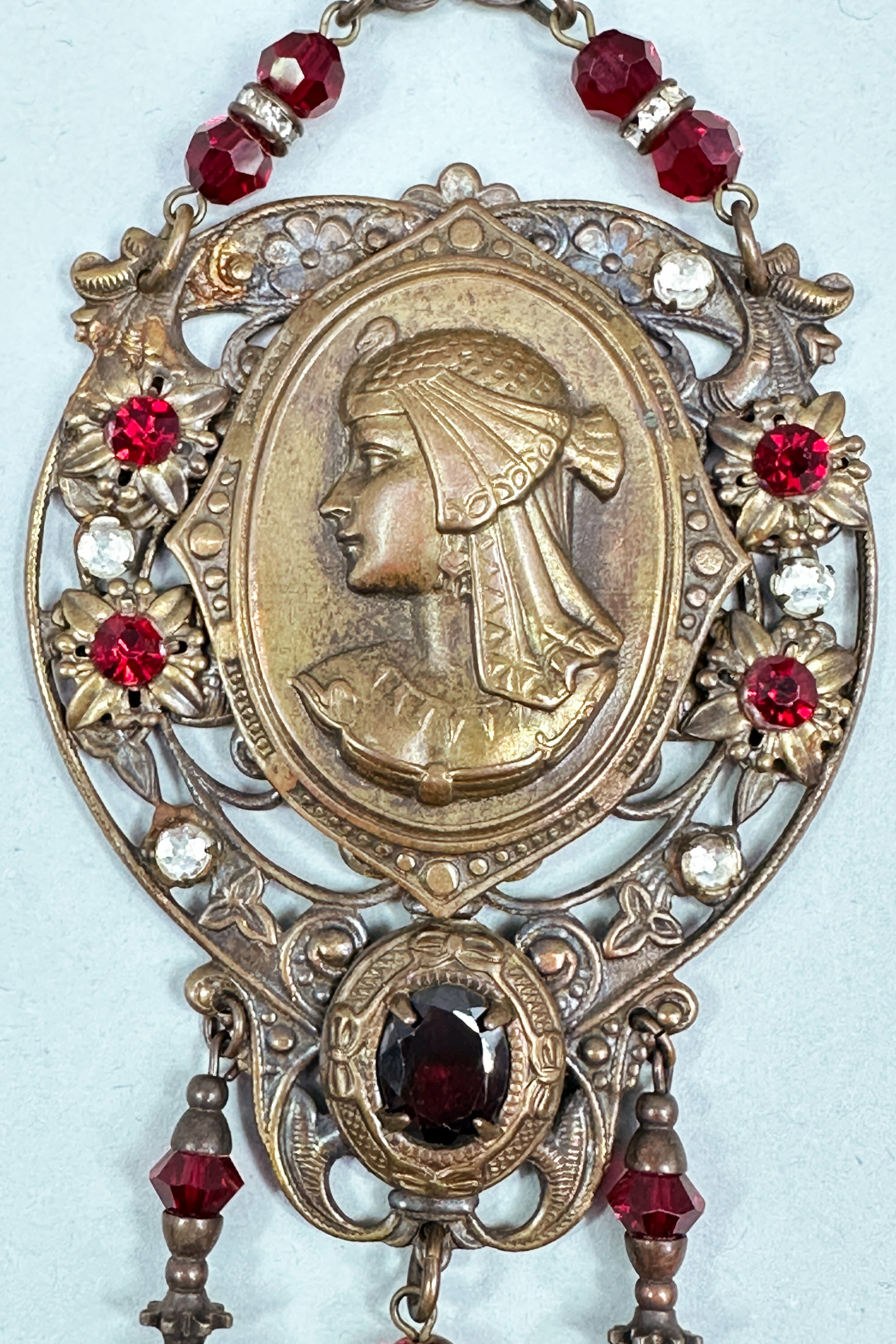
Victorian Egyptian Revival motif necklace with red stones c1900
Price: £85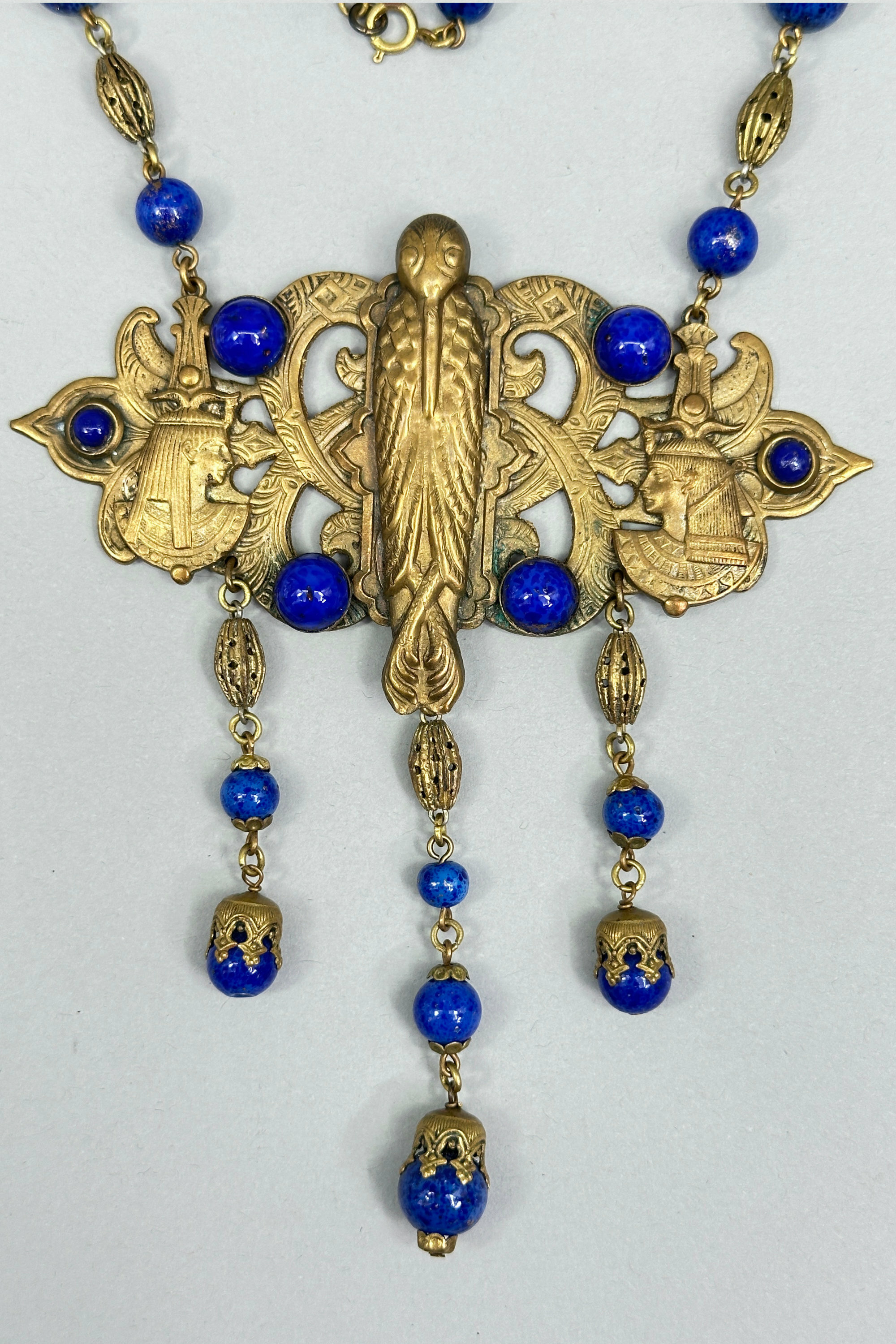
Egyptian Revival statement necklace signed EBE c1930
Price: £110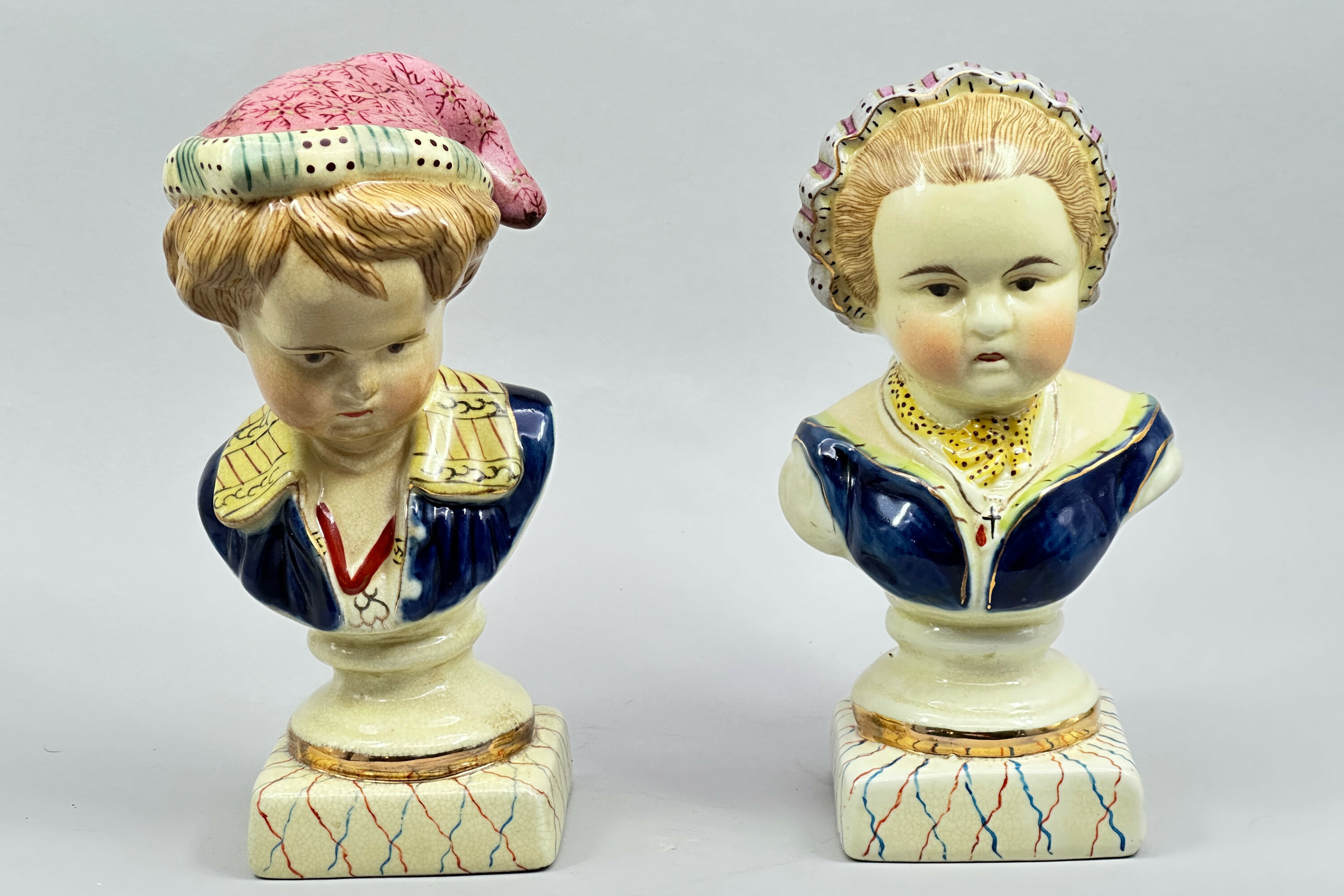
Pair of Staffordshire style Vintage Busts of Children, C20th
Price: £75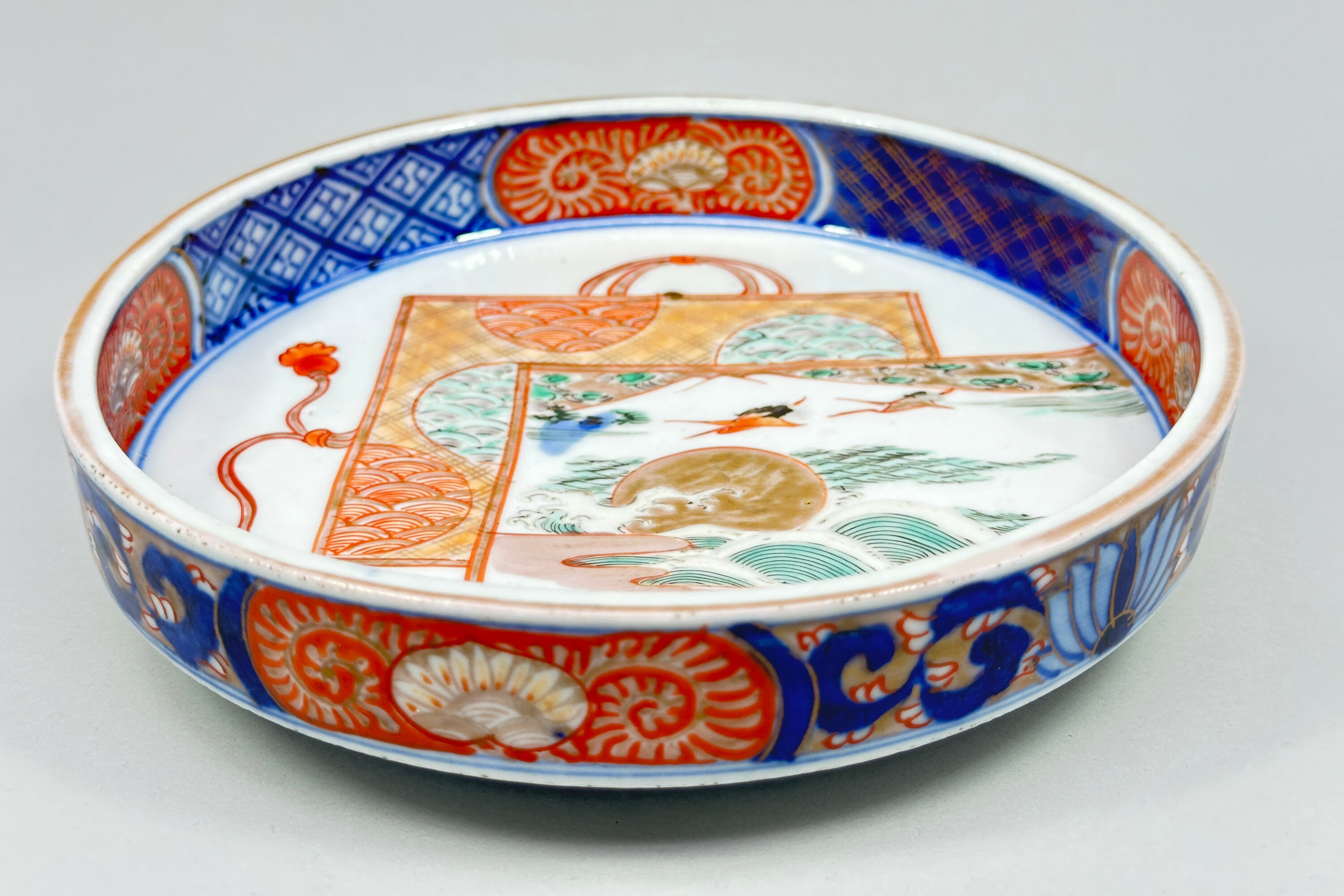
Japanese Arita shallow Bowl circa 1880
Price: £55The town of Arita in the former Hizen Province, northwestern Kyūshū island, was a major centre for the production of porcelains in Japan. Best known for blue and white pieces it also produced polychrome wares as well, including the familiar Imari colourings. While similar to Imari, the wider palette of colours used here is usually termed ‘Arita’ and this bowl employs not only the colourings but also many of the decorative elements found in these wares. The angular form, though, is unusual. Dating is to the Meiji era (1868-1912) probably around 1880.
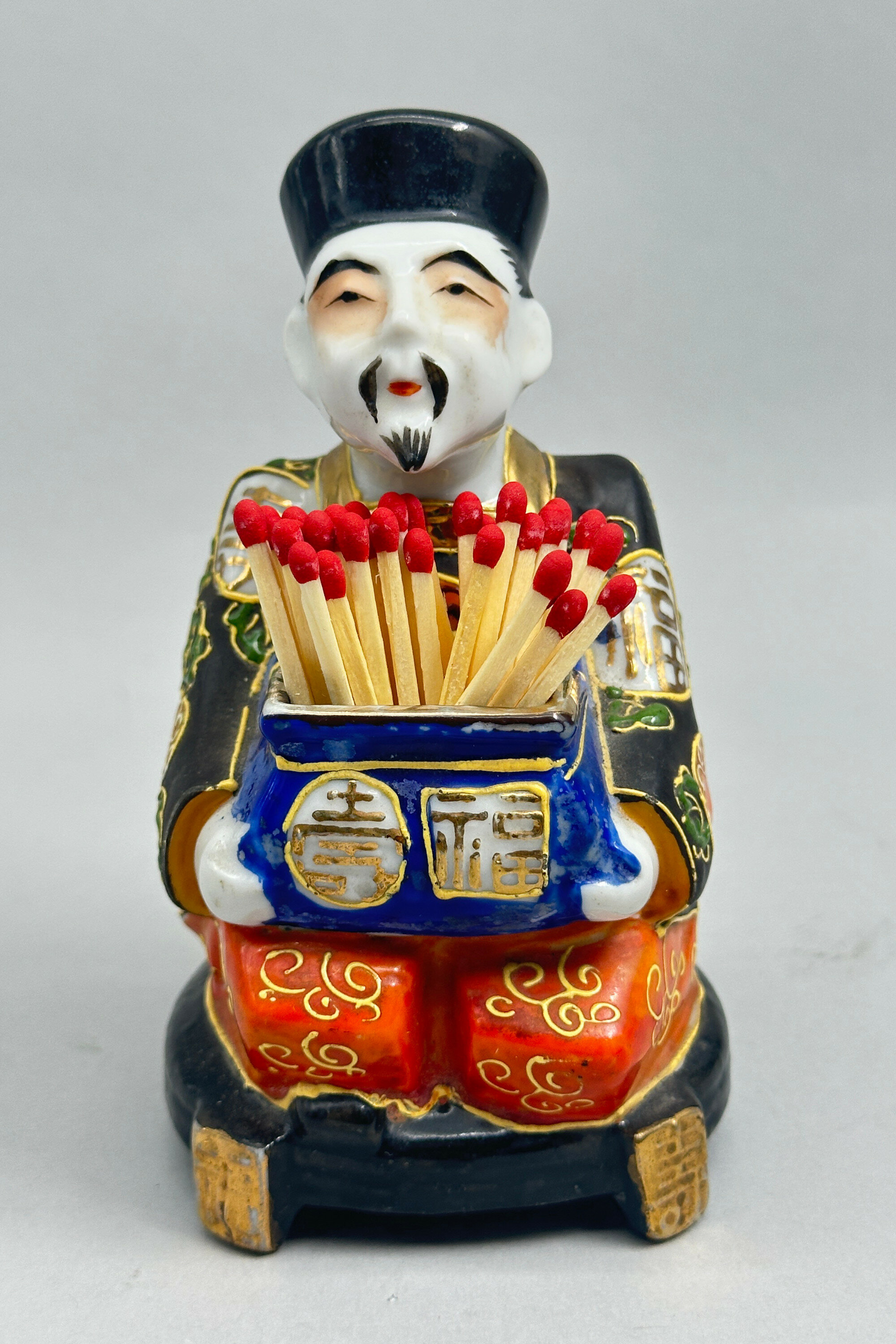
Japanese satsuma style match stick holder c1940
Price: £45
Ceramic and Bronze figure of a Blue Tit, Albany Worcester, late C20th
Price: £35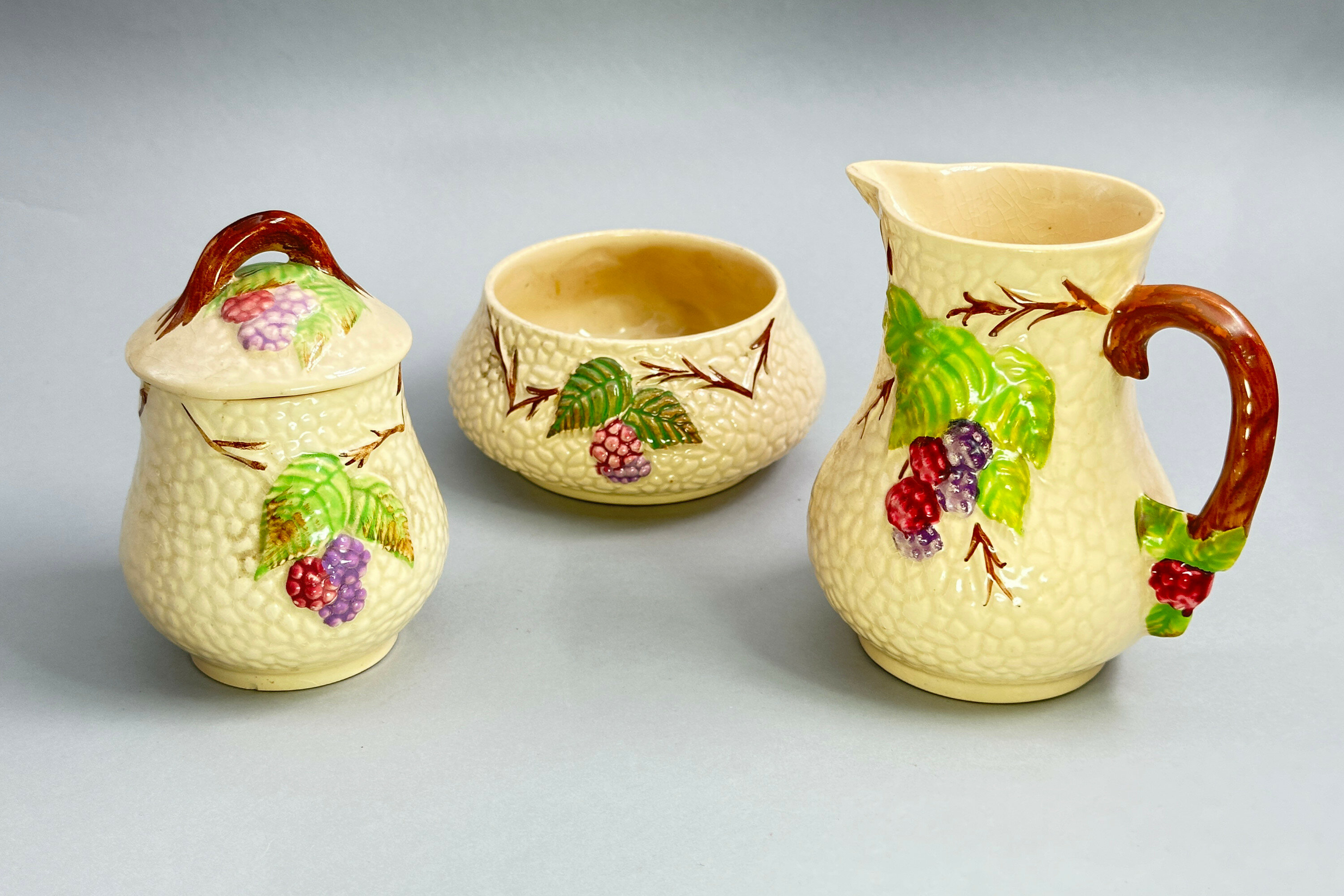
Set of three Wade Bramble Pattern teaware items, 1950s
Price: £25Wade Ceramics Ltd was a manufacturer of porcelain and earthenware, headquartered in Stoke-on-Trent, England. Founded in 1867, it was run by various members of the Wade family until the death of George Anthony Wade in 1987 after which there was a succession of management buyouts. Despite substantial investment in 2009, the firm eventually went into administration in 2022. Wade produced a wide variety of ceramics, including the well known Wade Whimsies animal figurines. A pair of Art Deco green glazed ‘salts’ are also included in this sale. The ‘Bramble’ design was created in the 1950s and a wide variety of tea service shapes were produced in the pattern. Collectors today can attempt to assemble examples from the whole of the range, towards which these three pieces might provide some assistance.
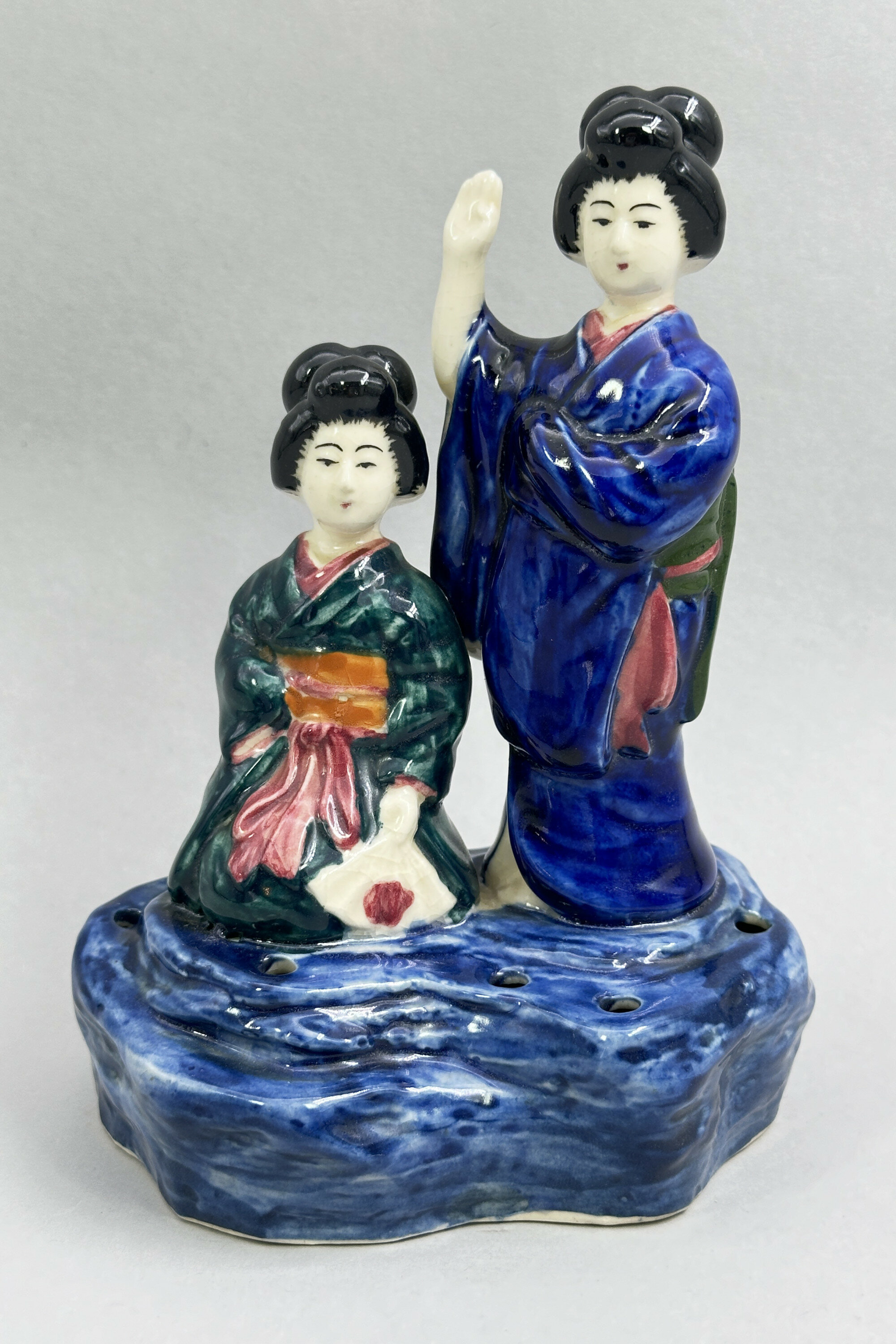
Japanese Ceramic Figural Group of two Geisha, late C19th
Price: £25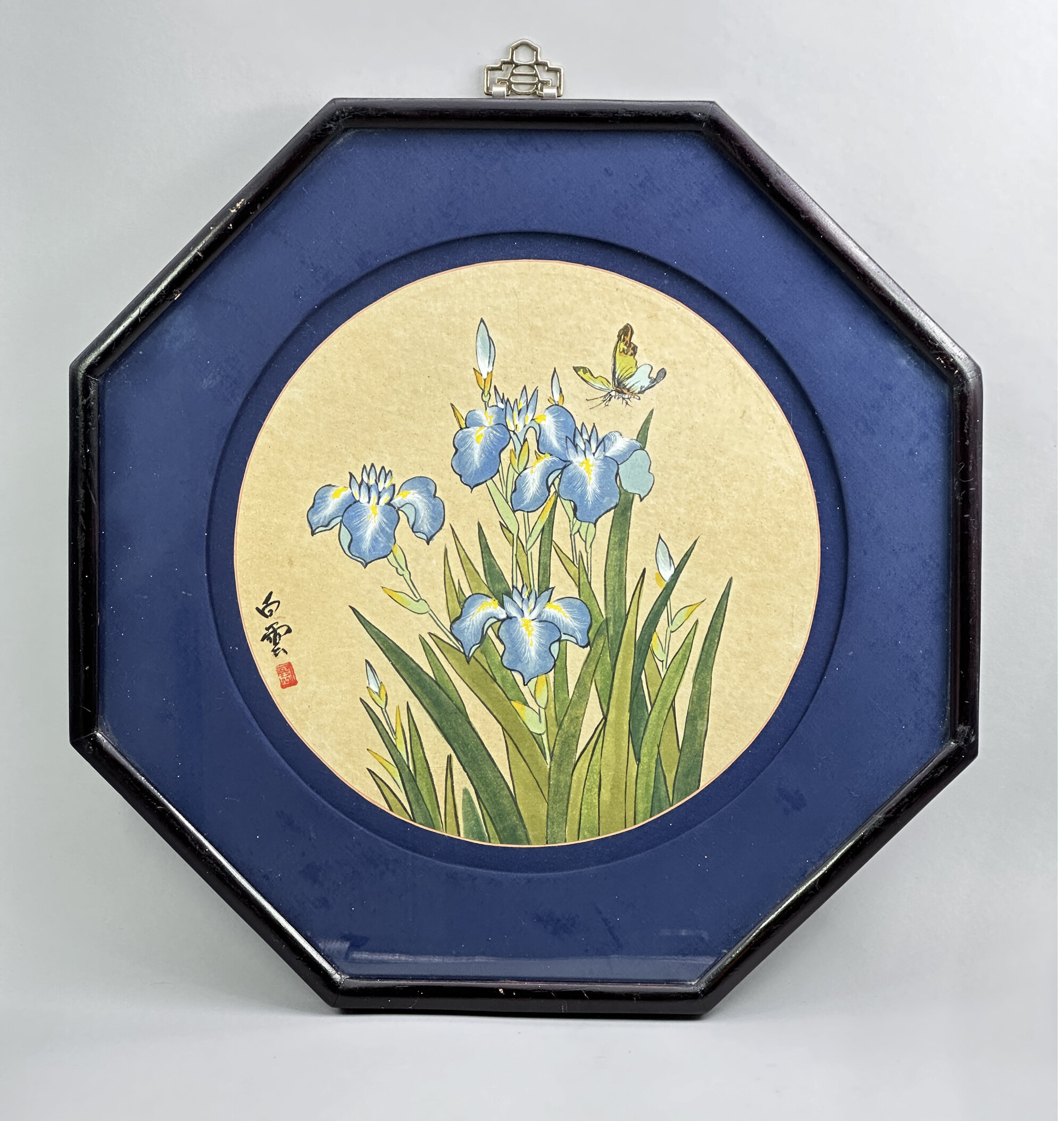
Japanese Gouache Painting of Flowering Lotus, signed and framed, C20th
Price: £45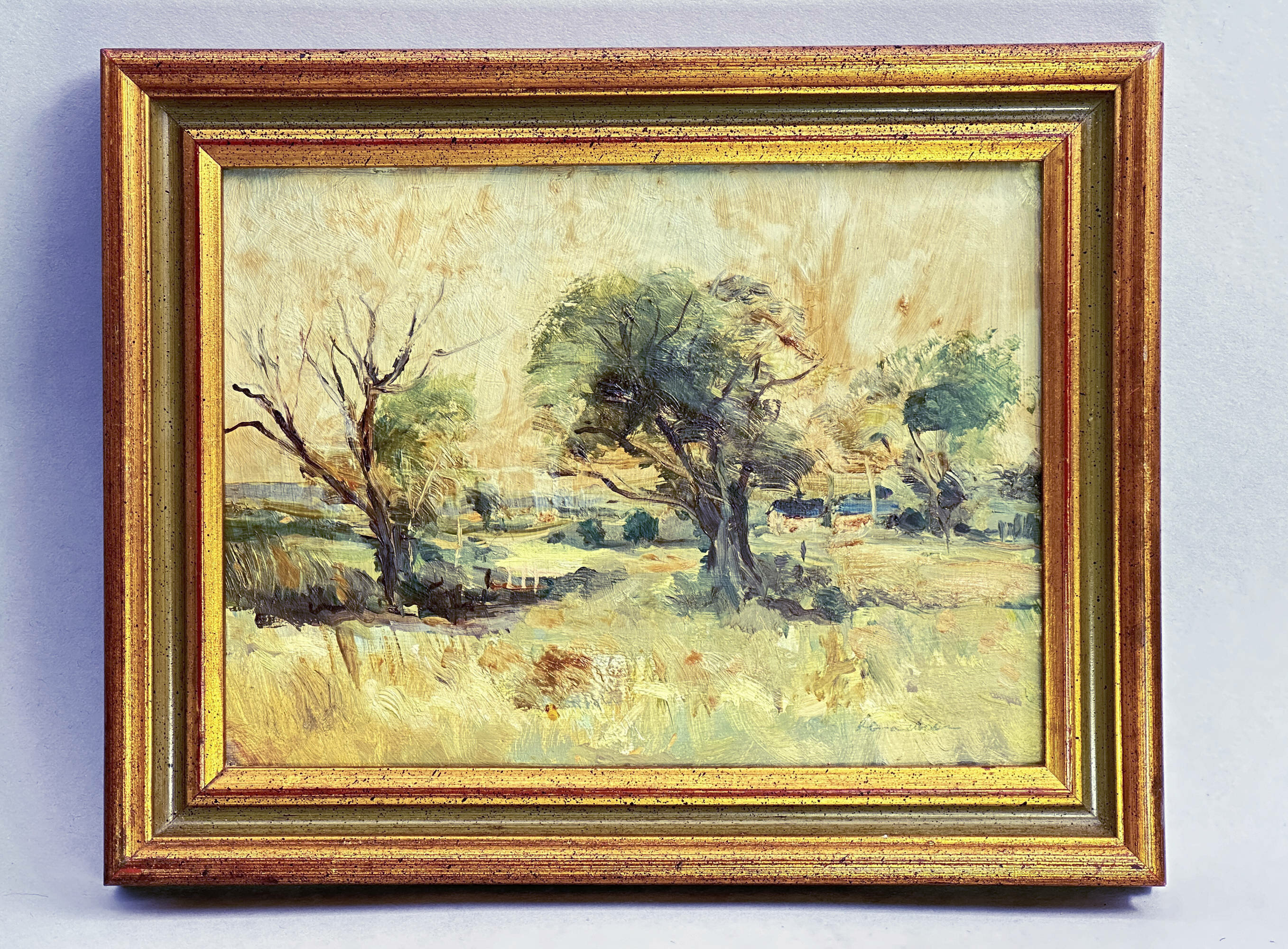
Oil Painting of a landscape scene with trees, framed, C20th
Price: £45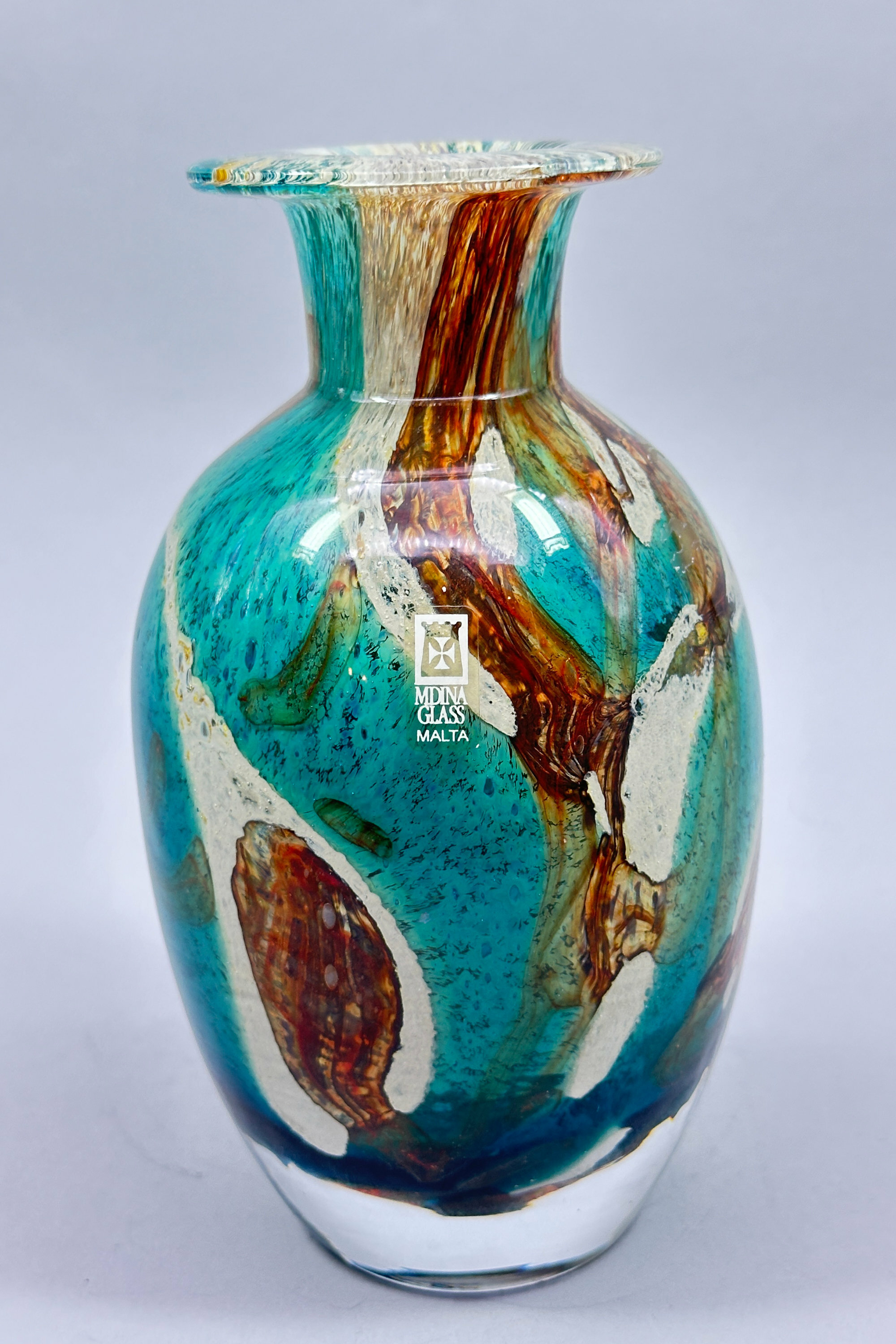
Mdina Glass Vase, signed and with maker’s label, late C20th
Price: £95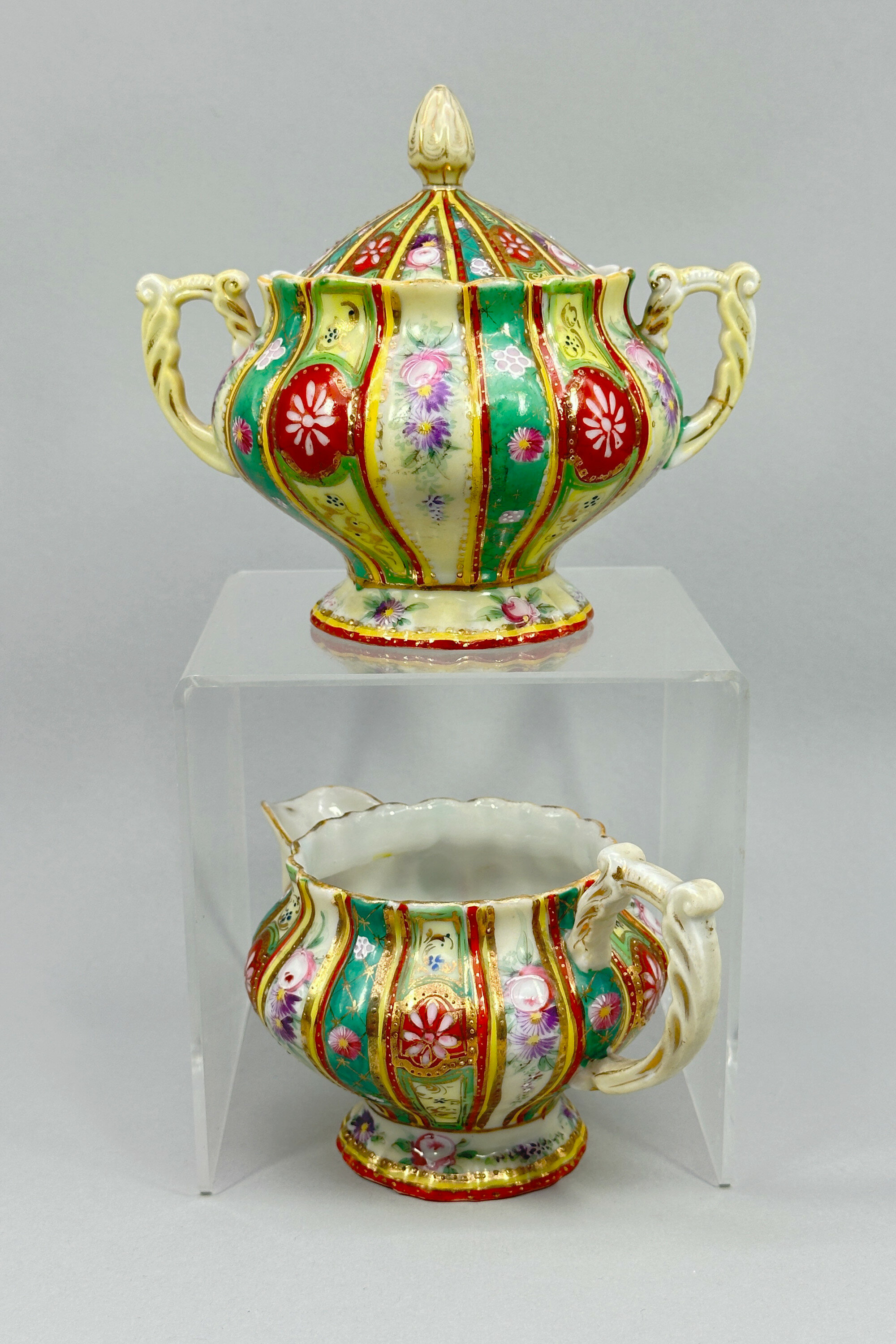
Vintage floral decorated Sugar Bowl and Cream Jug, probably Bohemian mid C20th
Price: £25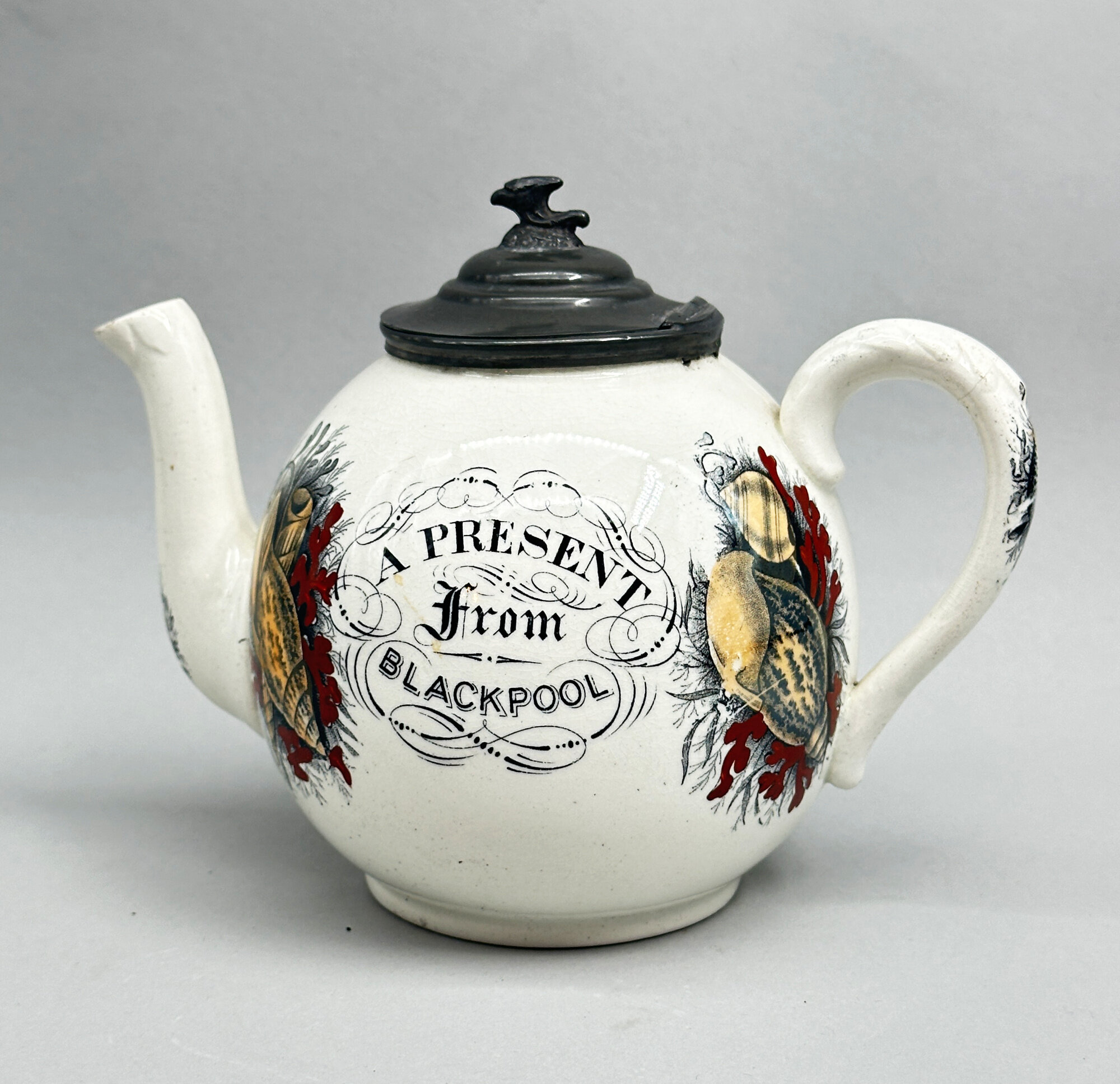
Blackpool souvenir teapot c1920
Price: £35
Japanese Kutani Shell Shape Dish, circa 1880
Price: £55Kutani (the word means 'nine valleys') porcelain was made at various factories in the former Kaga province of Japan. The earliest pieces were in a completely different style employing a palette of colours emphasising green, the so called 'Ko Kutani'. Production of this ceased around 1730, and manufacturing was not revived until the early nineteenth century when the more familiar colourings of iron red and gold were introduced. Many pieces were exported to the West in a variety of forms including vases and wall plates. This shell dish is more unusual; the shape is more normally found in Chinese ceramics. Perhaps one of an original pair, this dish, like its Chinese counterparts, was probably intended as a serving dish and could even be used as such today although it can well stand as a decorative item.
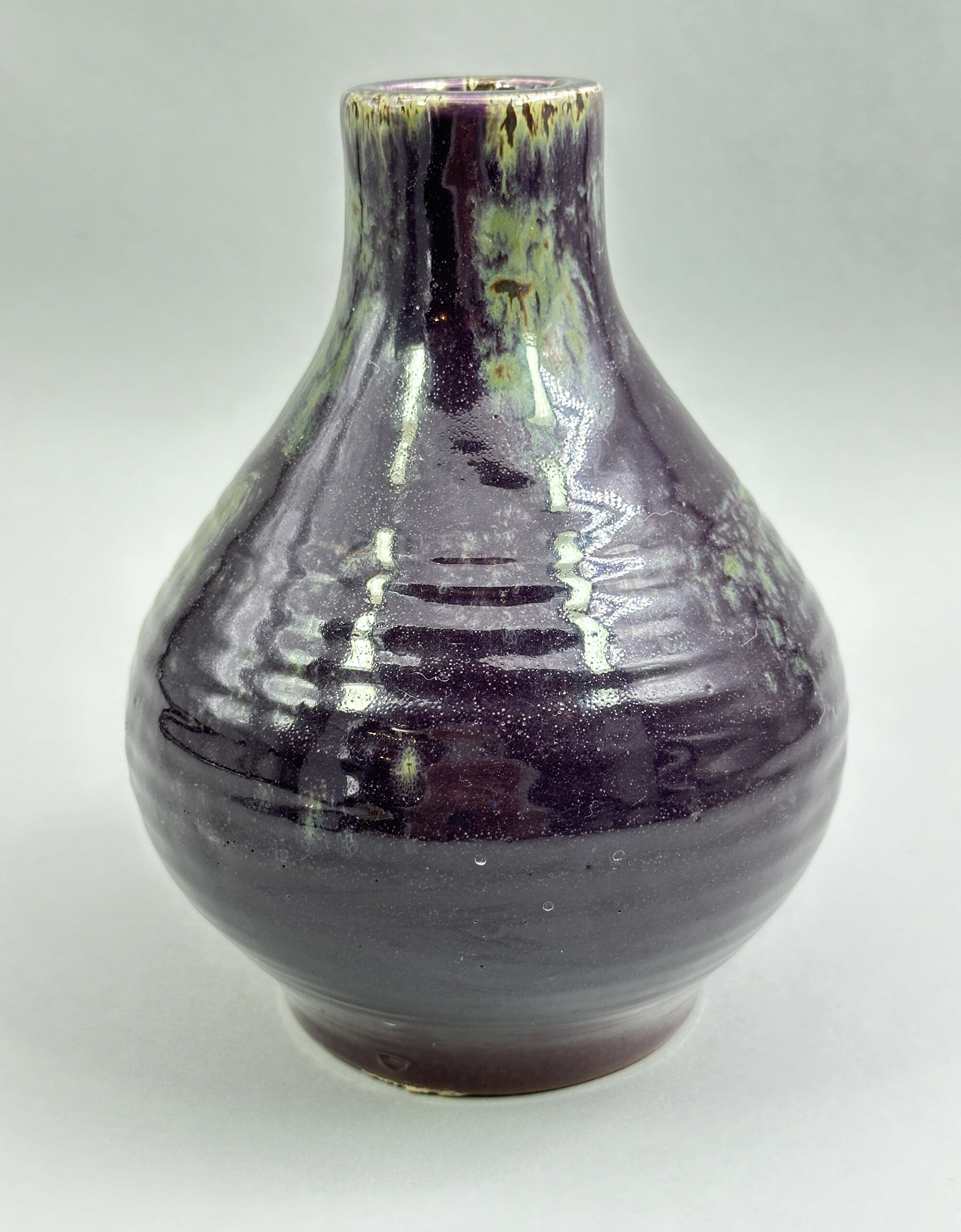
Studio Pottery Vase with flambé glaze, C20th
Price: £75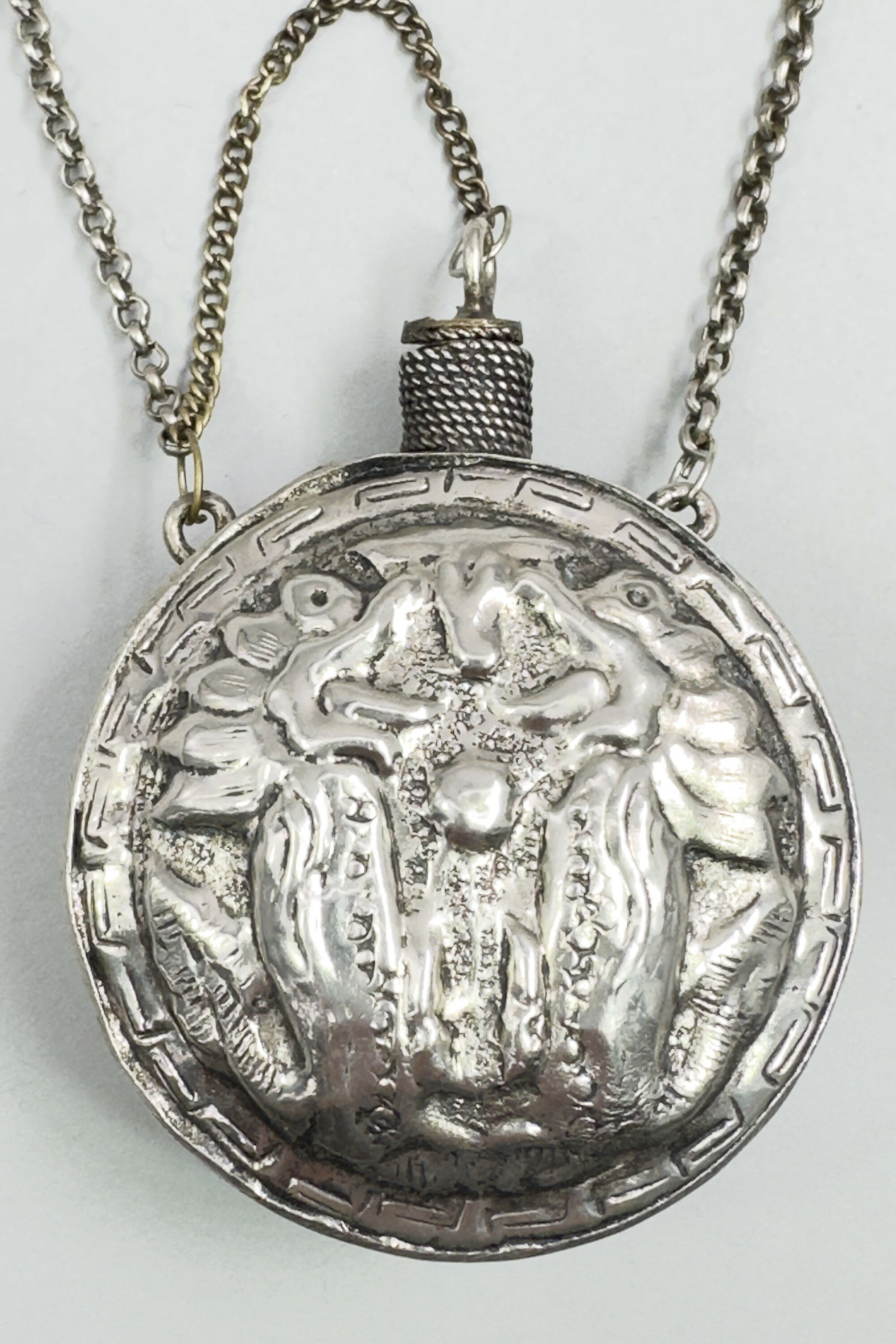
Burmese silver plated Scent Bottle on a chain c1880
Price: £45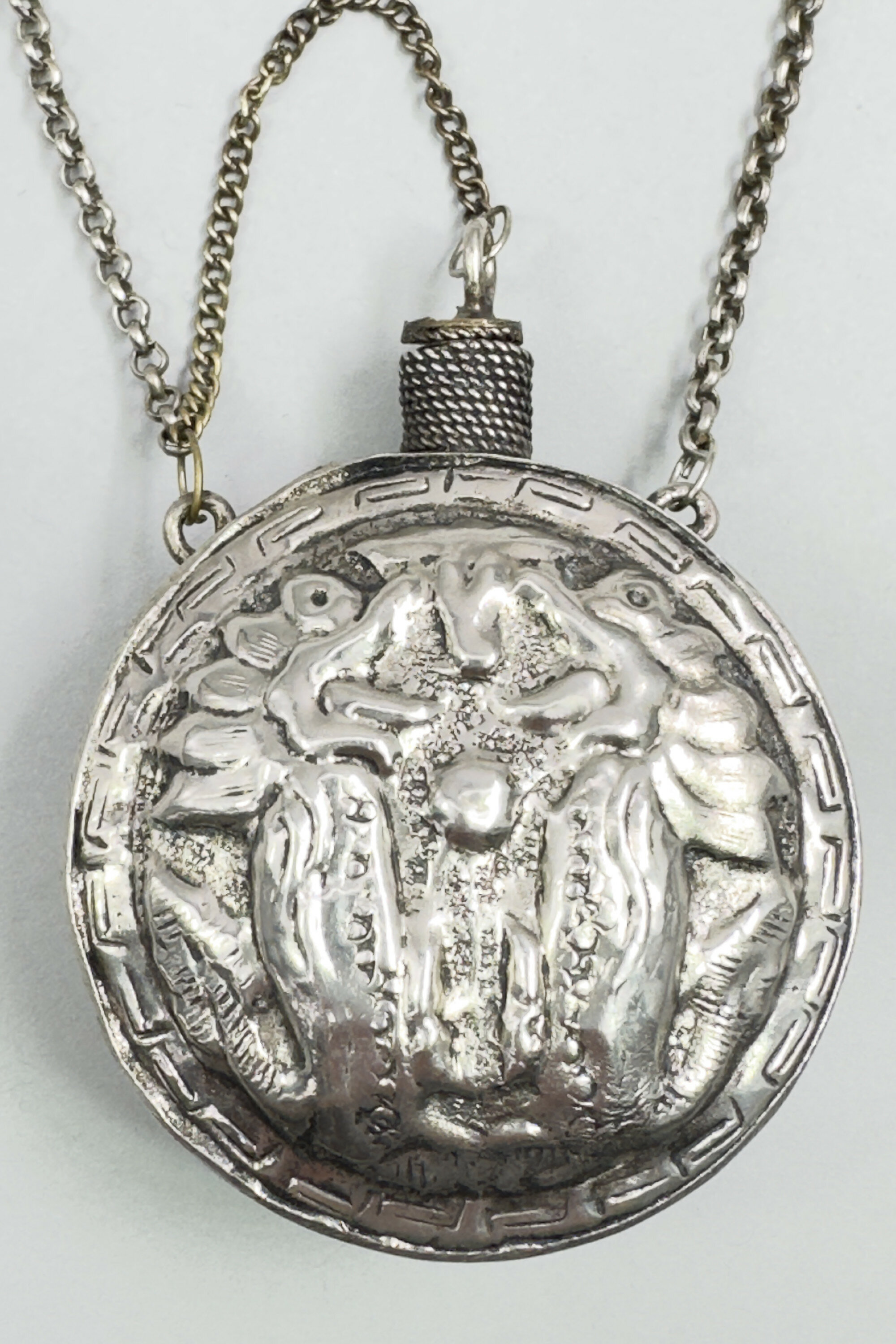
Burmese silver plated Scent Bottle on a chain c1880
Price: £45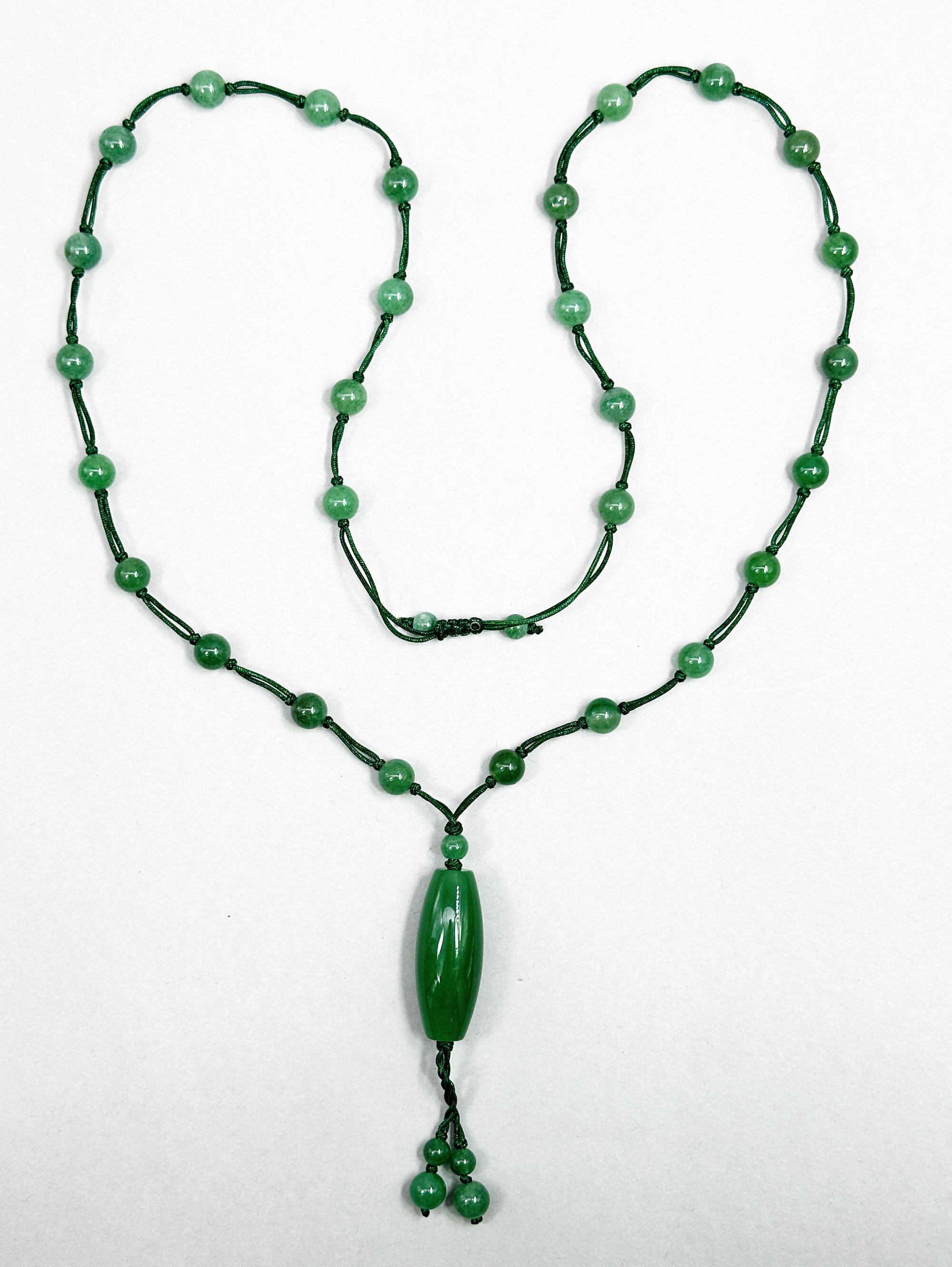
Chinese aventurine lariat necklace
Price: £20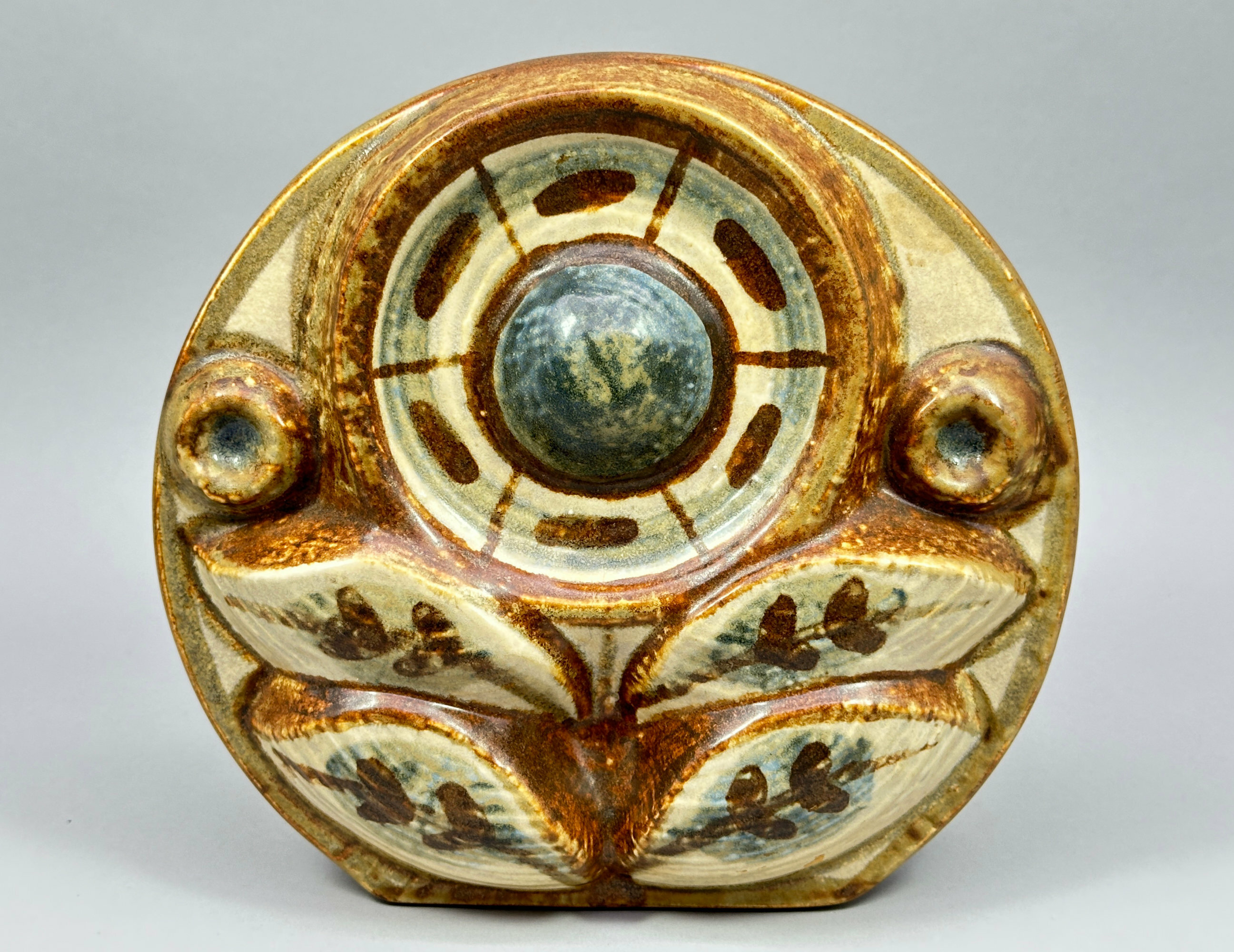
Wall Vase, designed by Noomi Backhausen, Søholm Stentøj, Denmark, late C20th
Estimate: £80 – 120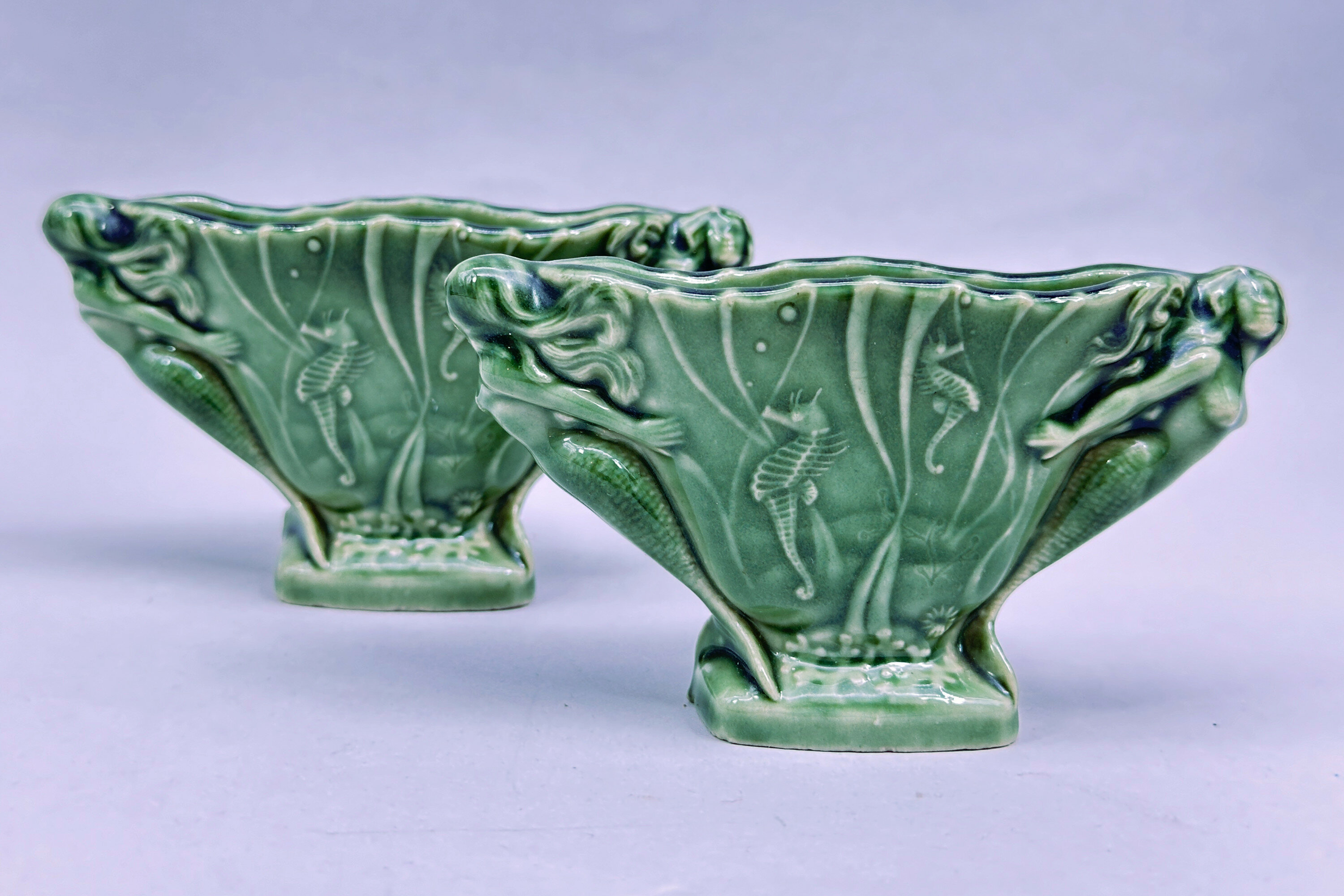
Pair of Wade green glazed Mermaid salts, 1950s
Price: £55Wade Ceramics Ltd was a manufacturer of porcelain and earthenware, headquartered in Stoke-on-Trent, England. Founded in 1867, it was run by various members of the Wade family until the death of George Anthony Wade in 1987 after which there was a succession of management buyouts. Despite substantial investment in 2009, the firm eventually went into administration in 2022. Wade produced a wide variety of ceramics, including the well known Wade Whimsies animal figurines.
This pair of salts is rather different to many of their productions and have a distinctly ‘Art Nouveau’ feel but, in fact, date to the 1950s when this particular format of the factory mark was used. It seems to be one of the rarer forms and pairs are even rarer still, so definitely one for Wade collectors!
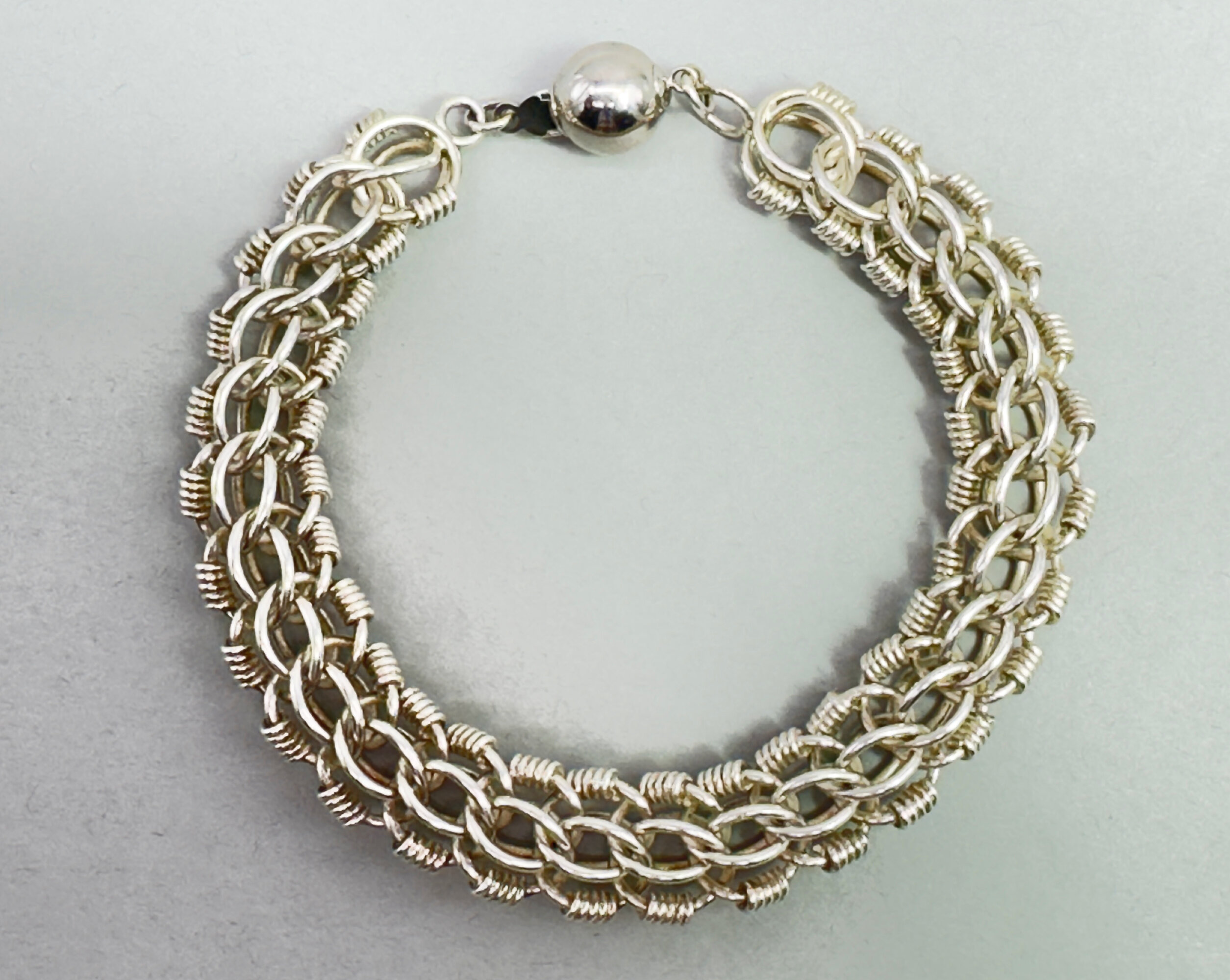
Large silver fancy link Bracelet, modern
Price: £50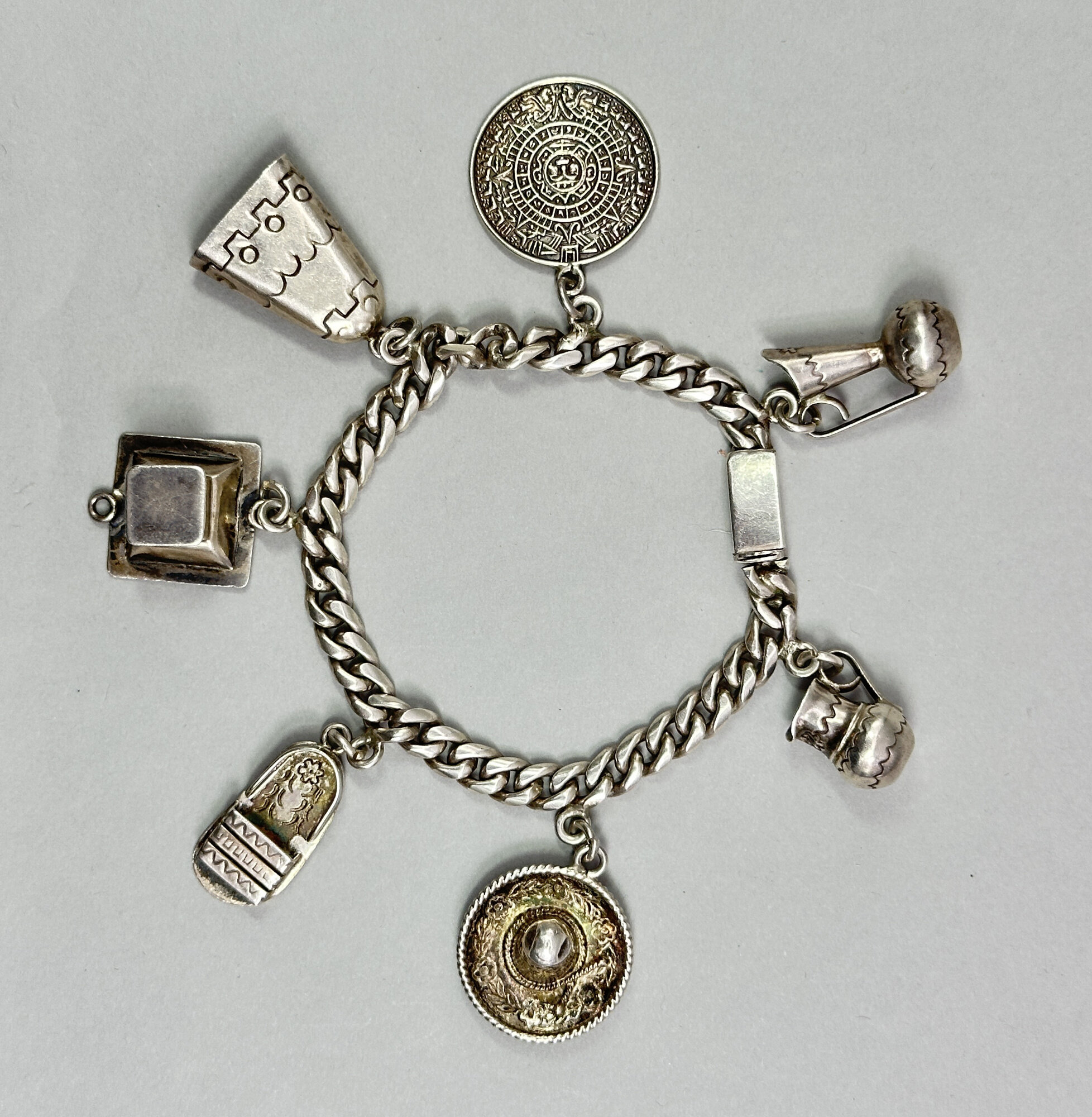
Taxco charm bracelet, makers mark Castelan, 1950s
Price: £85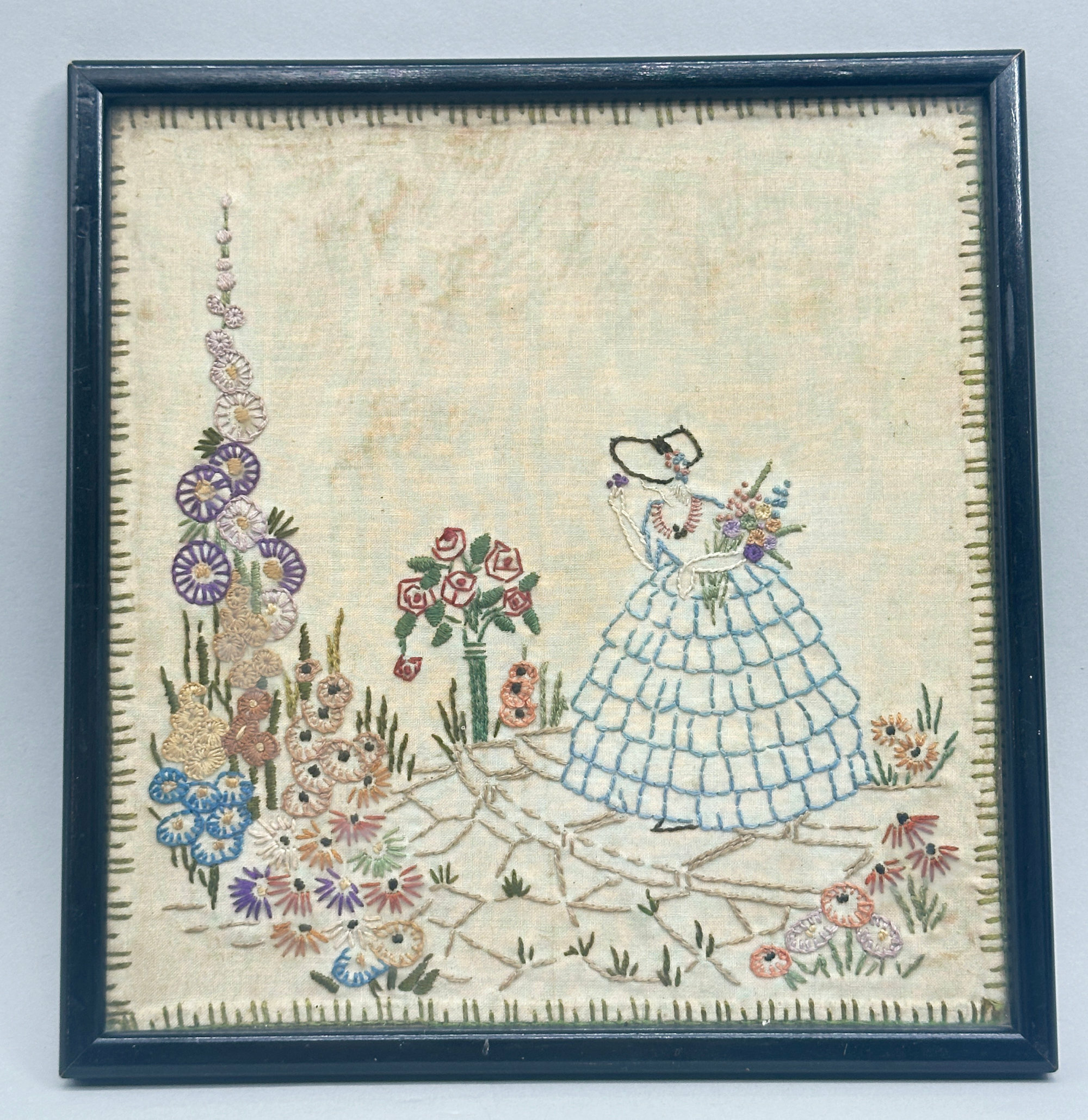
Vintage Needlepoint Picture of a lady dressed in a crinoline, framed, probably 1930s
Price: £25
Japanese Blue and White Porcelain Bowl decorated with hydrangea, early C20th
Price: £25Hydrangeas flourish in Japan and also carry a hidden meaning of apology and gratitude based on a mythical story of an Emperor, who angered a woman he loved by neglecting her, and gave her in recompense a bunch of blue hydrangeas as a symbol of his deep emotion and gratitude. Used here as a decorative motif, the painting of the flowers is skilful and elegantly combined with the plainer exterior. The paste of the foot rim suggests an early C20th dating, perhaps to the late Taisho era (1912-1926).
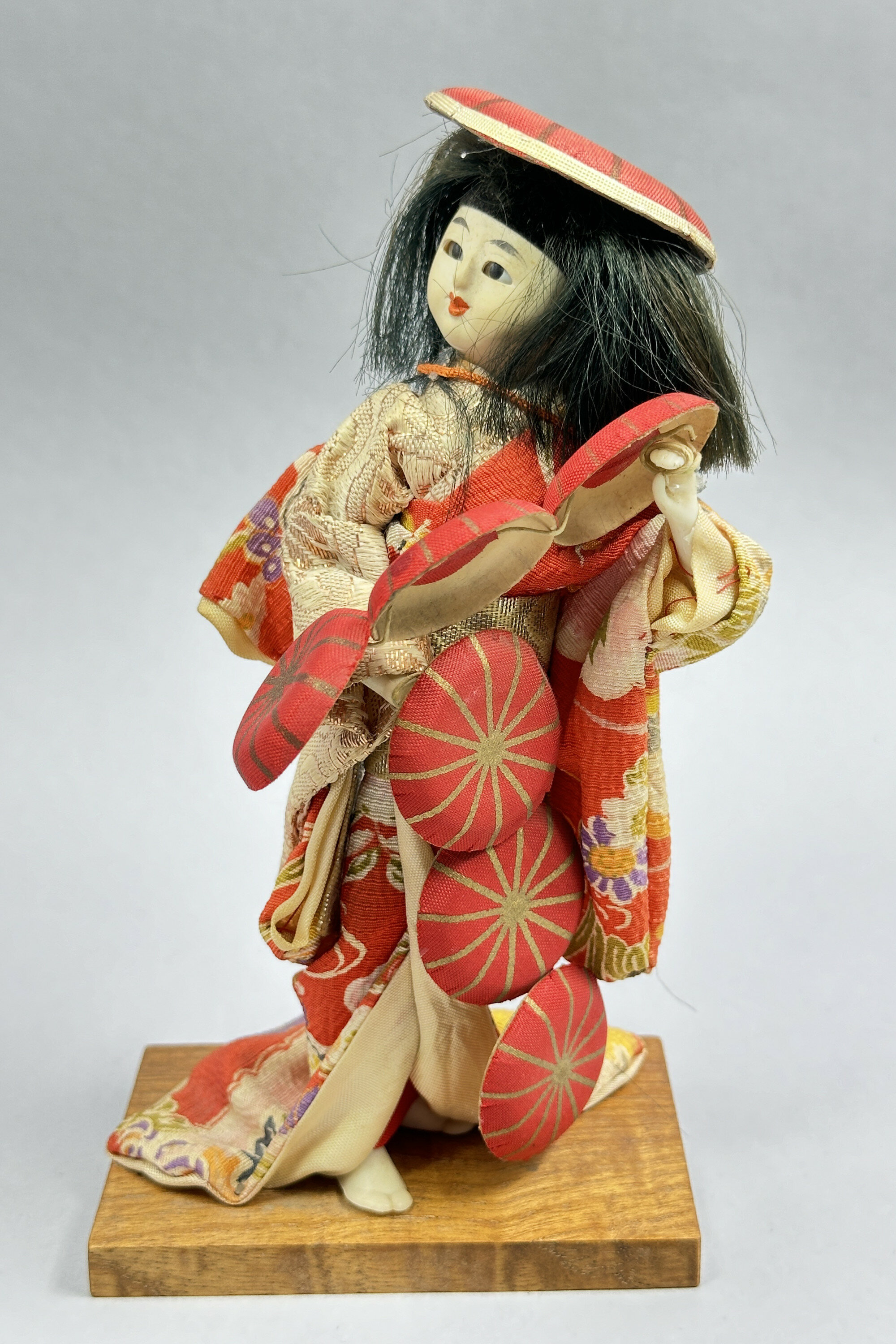
Vintage Japanese Doll of a Hat Seller, C20th
Price: £25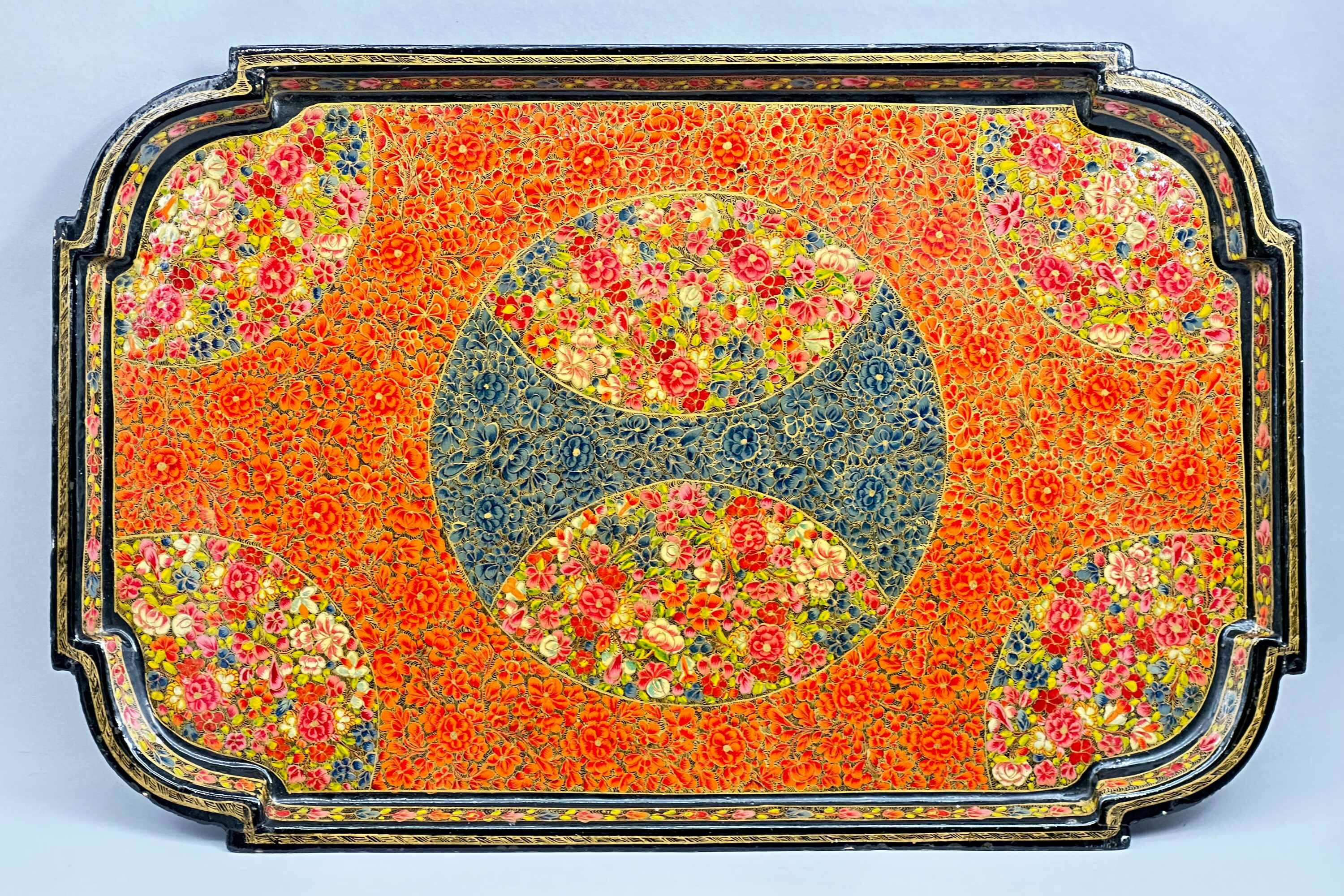
Papier Mâché Tray with Millefiori Decoration, Kashmir, C20th
Price: £55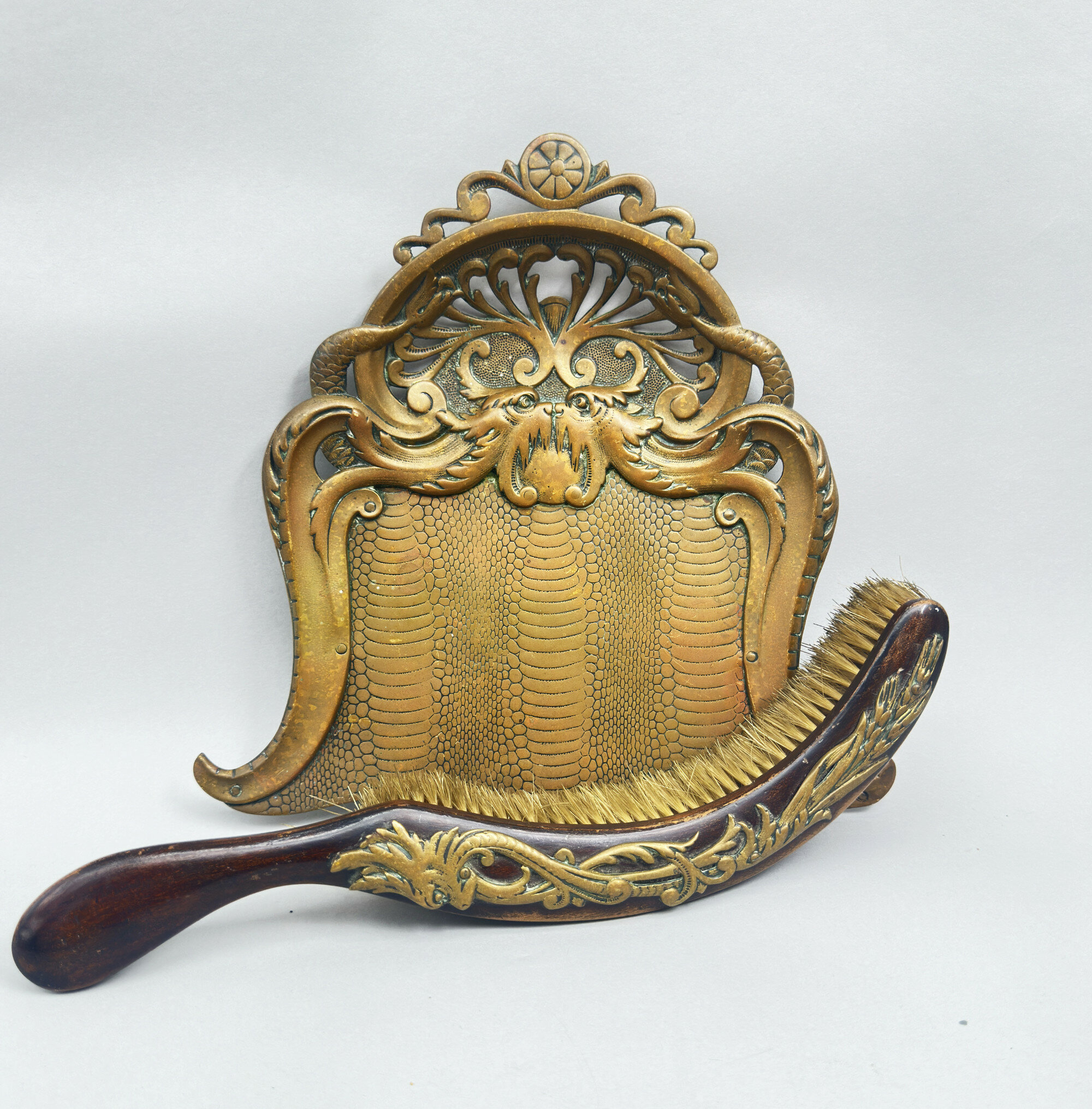
Townshend & Co : Butler’s Crumb Tray and Matching Brush, Birmingham c1900
Price: £75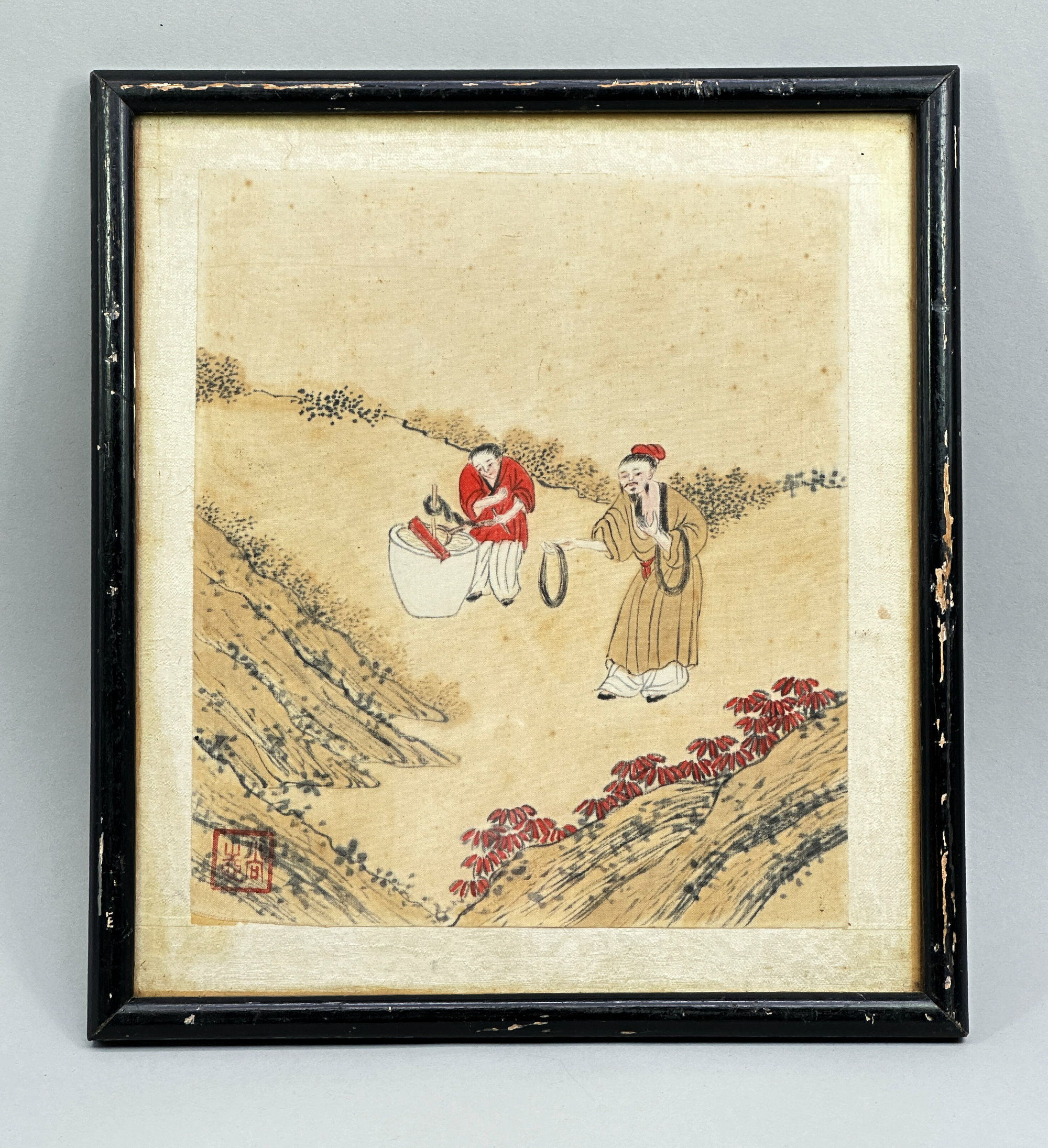
Framed Chinese painting on silk, two Silk Dyers, C19th/C20th
Price: £15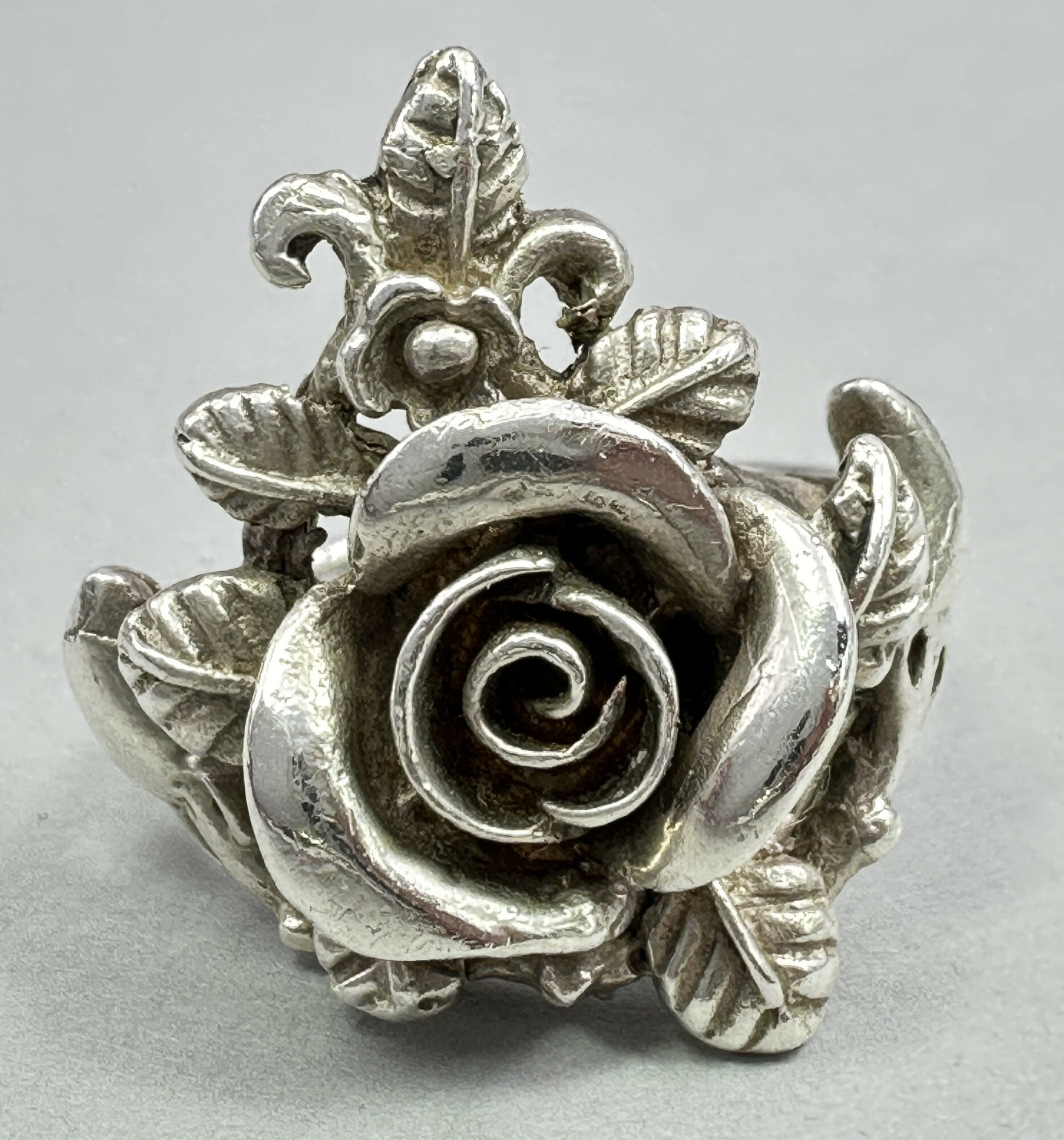
Silver rose ring, 20th century
Price: £35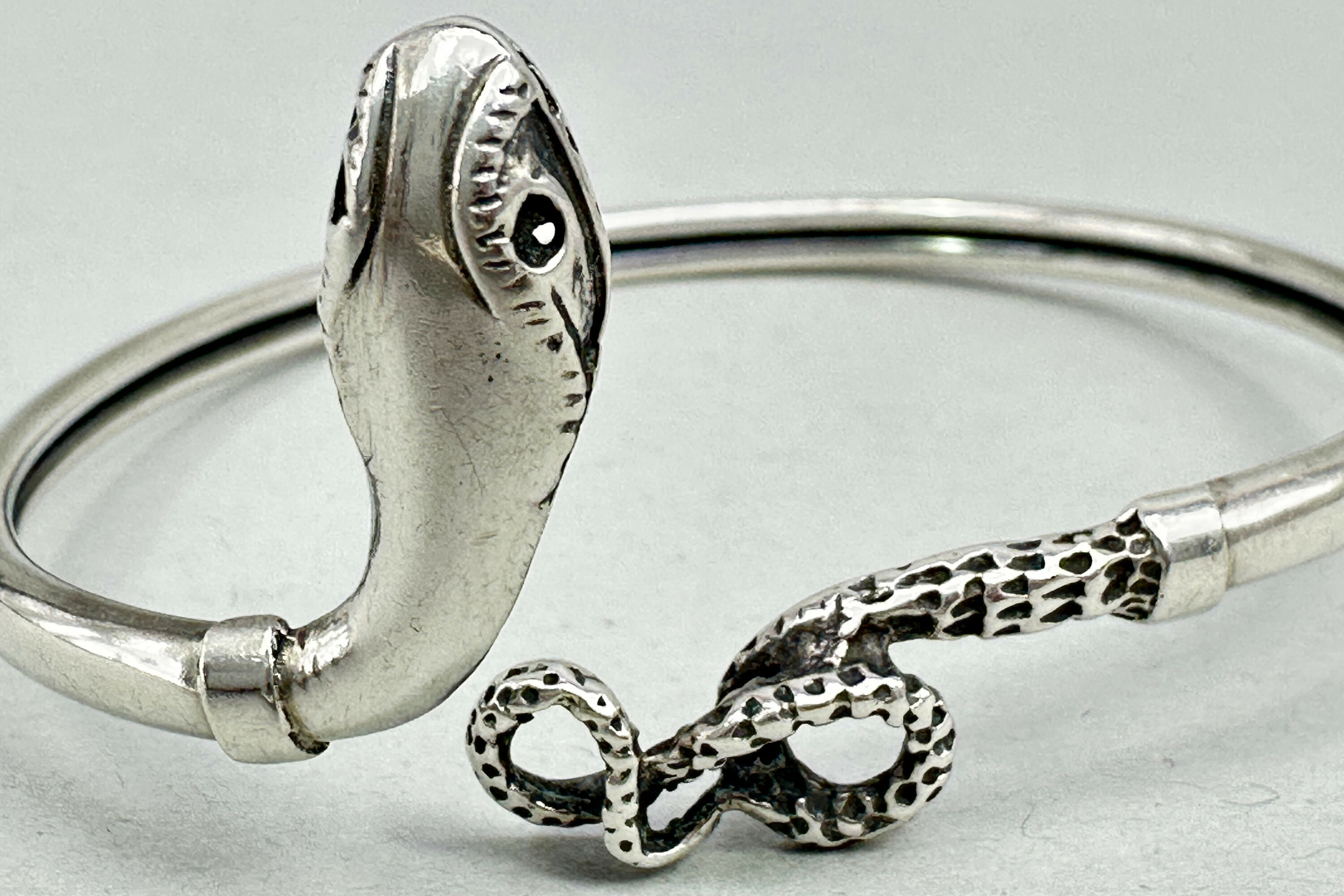
Silver Snake bangle, 20th century
Price: £25
Egyptian Eye of Horus braclet c20th
Price: £25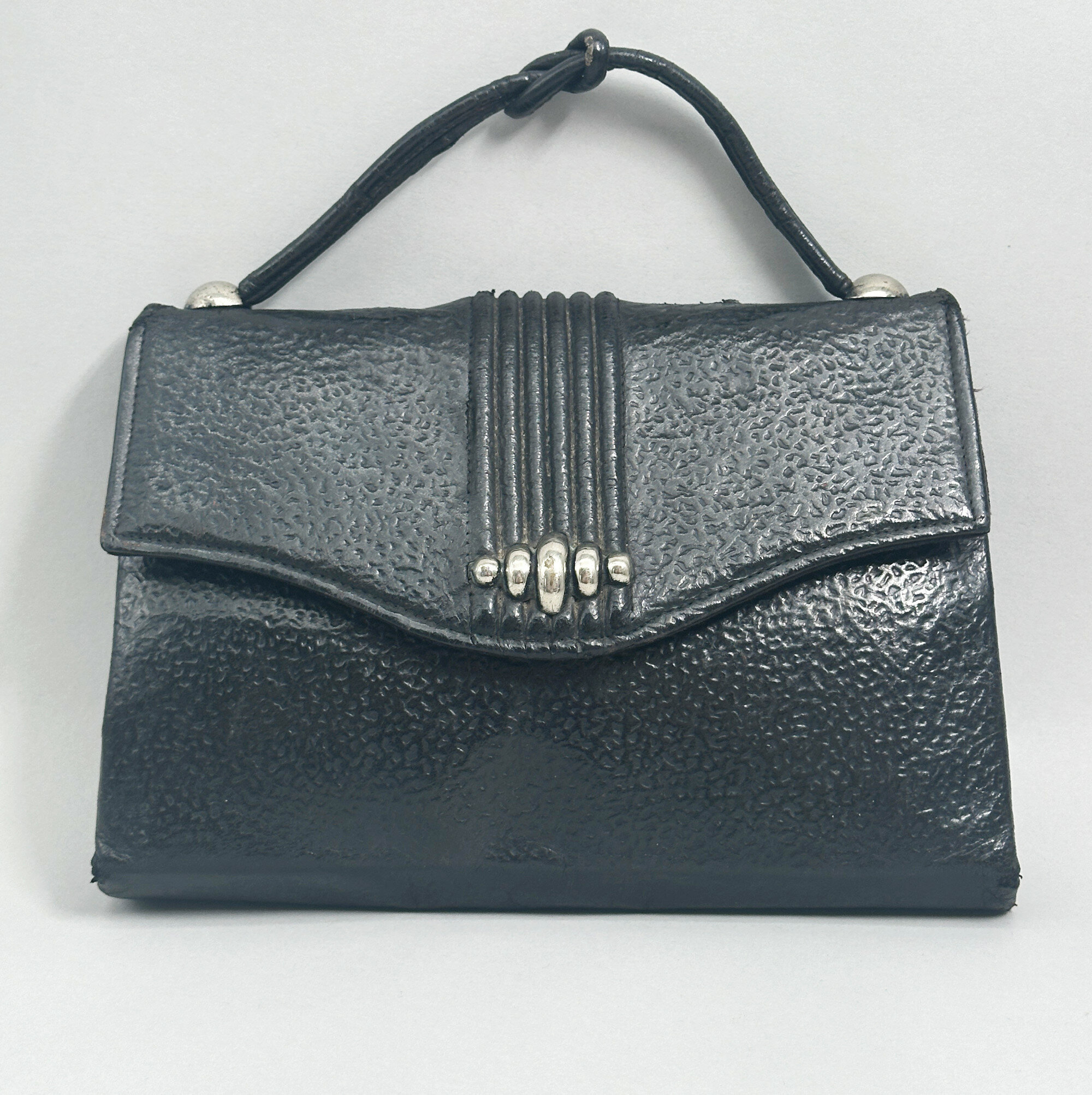
Art Deco black leather bag c1930
Price: £95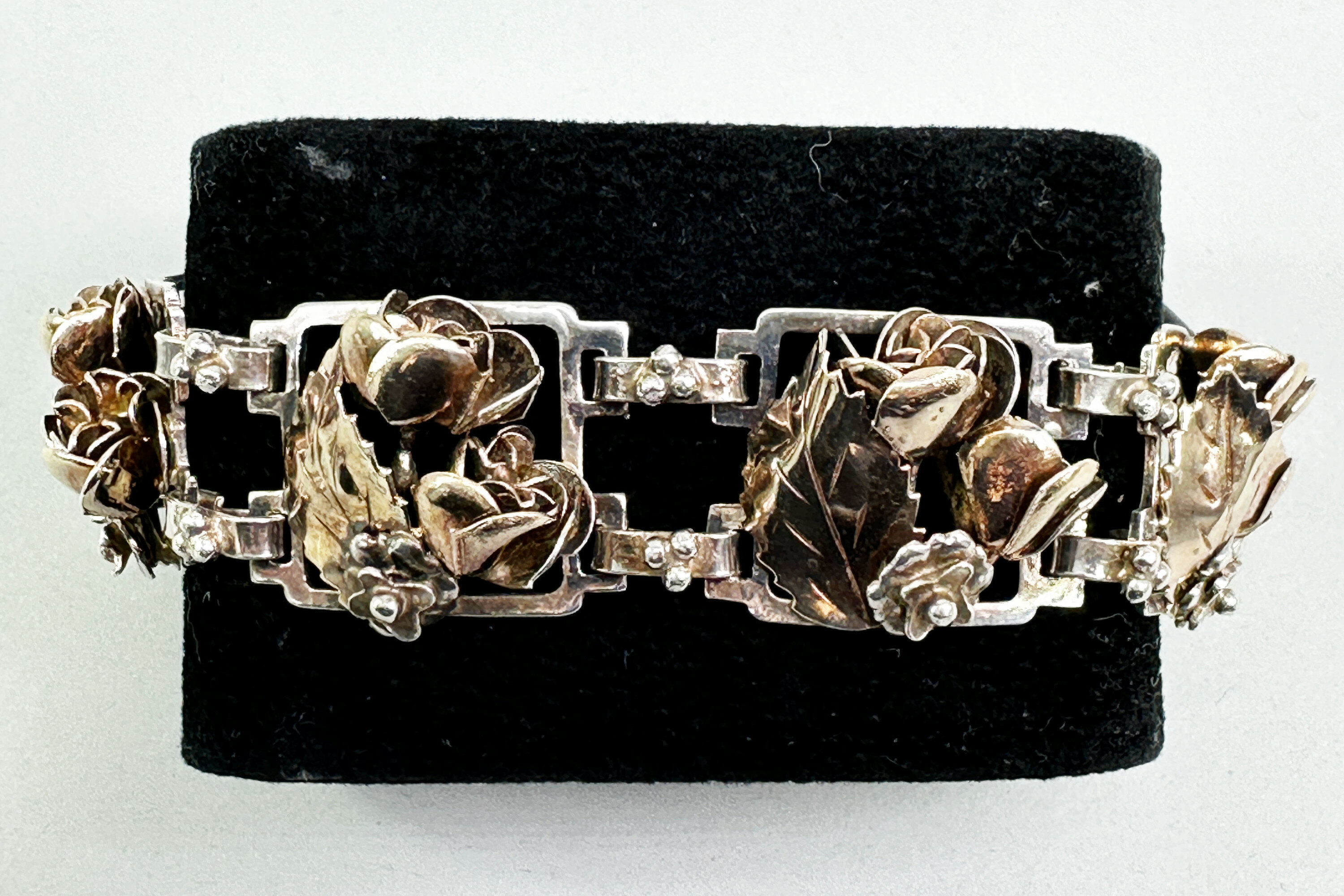
Vintage Hobe 14k gold plated sterling silver bracelet, 1940s
Price: £150Hobe was founded in 1887 by the French goldsmith Jacques Hobe as makers of fine jewellery. The costume jewellery division, Hobe Cie, was added 40 years later by his son, William Hobe, who brought the firm to America in 1927 and was commissioned by Flo Ziegfeld to design and manufacture jewellery for his Ziegfeld Follies costumes. By repute this is the origin of the expression costume jewellery. Production continued from the 1930s to the 1990s although there are a few later reproductions. While all their pieces were marked, dating is sometimes difficult but the floral design sterling silver pieces, one of their most collectible ranges now, date to the 1930s and 1940s and this bracelet, with the addition of the gold vermeil detail probably belongs to the latter period of this group. Its opulent and florid design is typical of Hobe’s work making it a stylish addition to a collection of their pieces. Other examples of their work can be seen elsewhere on this site and in this sale.
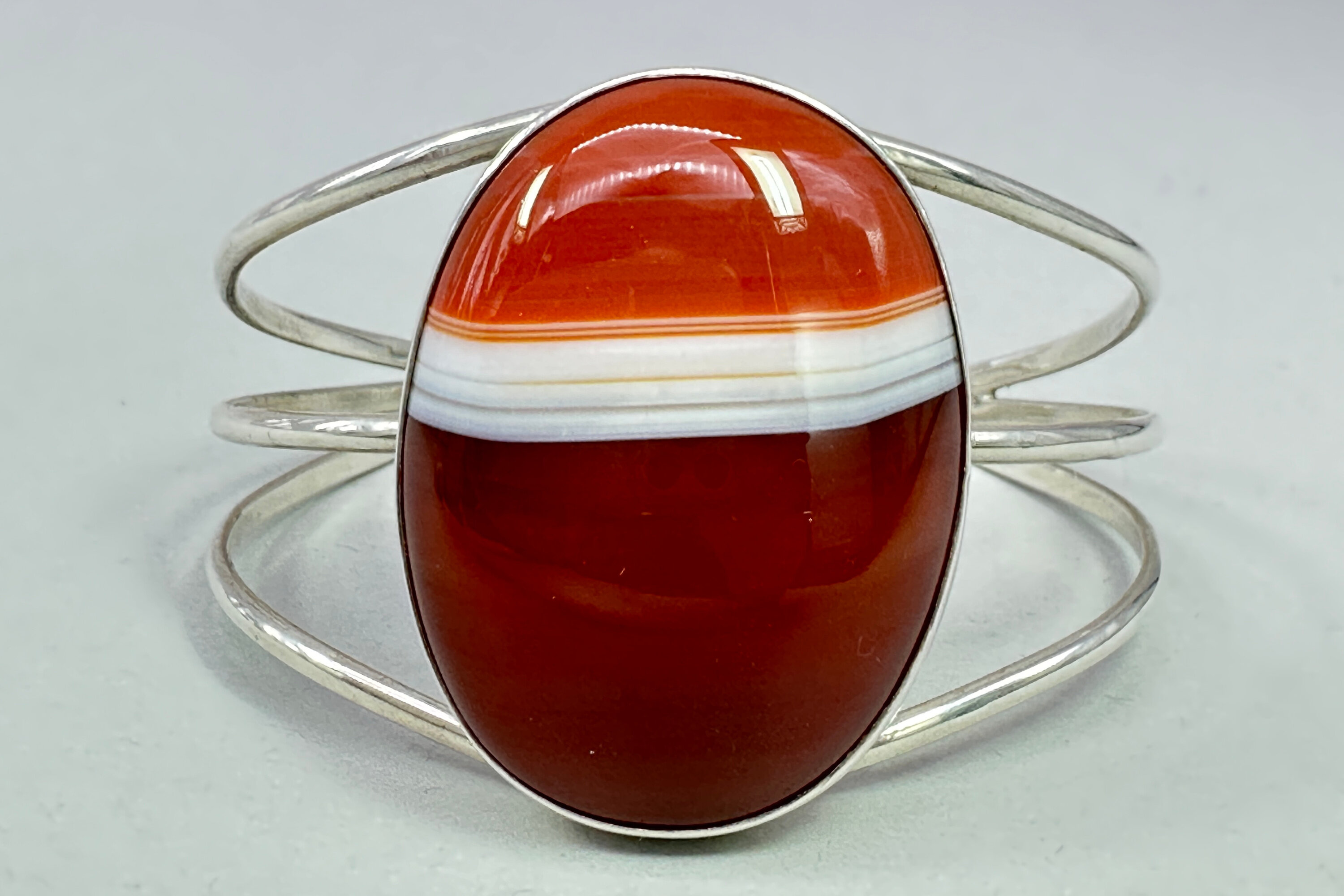
Silver cuff bracelet set with Scottish banded carnelian stone, Birmingham 1975
Price: £85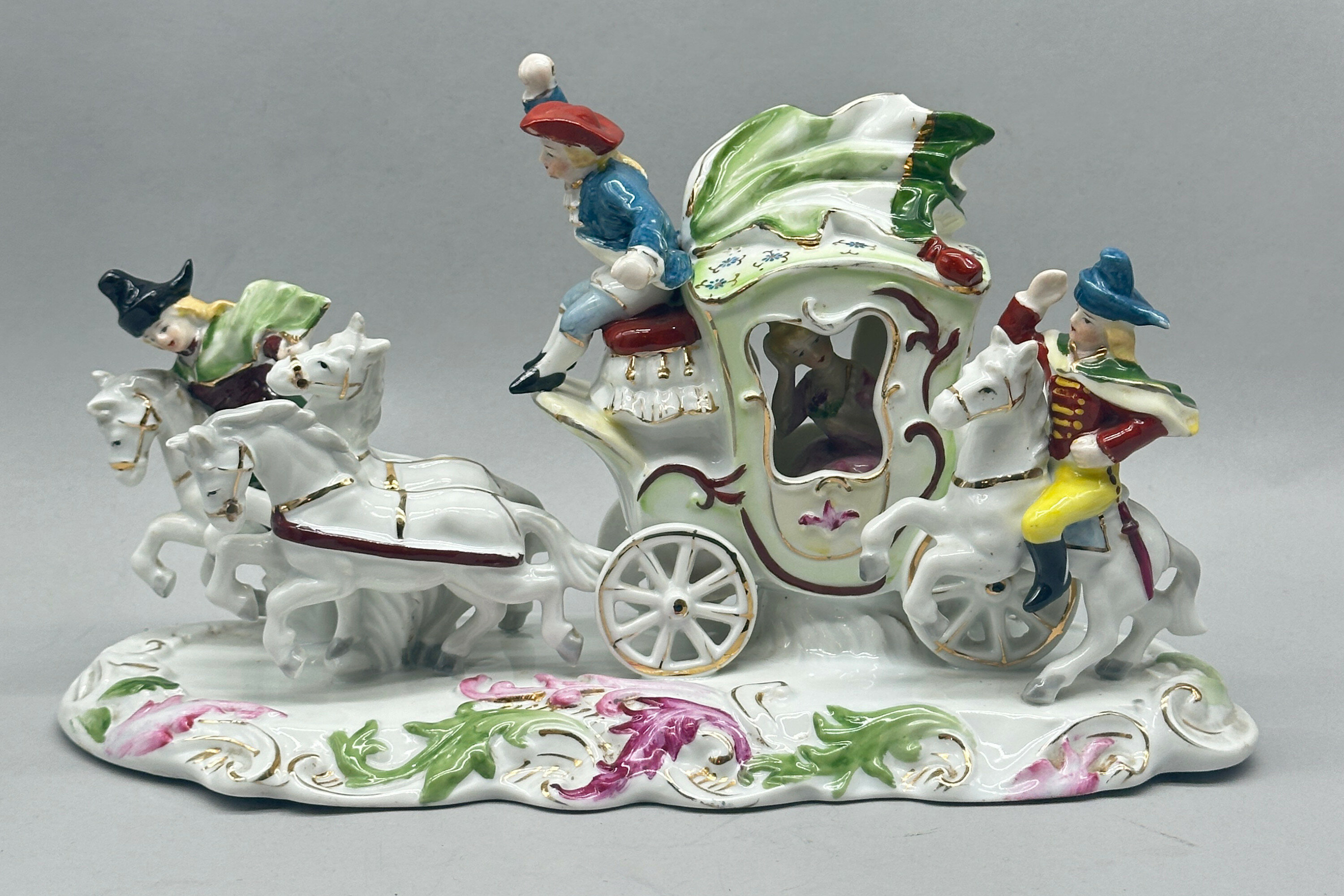
Dresden style model of a Coach and Horses, probably German early C20th
Price: £75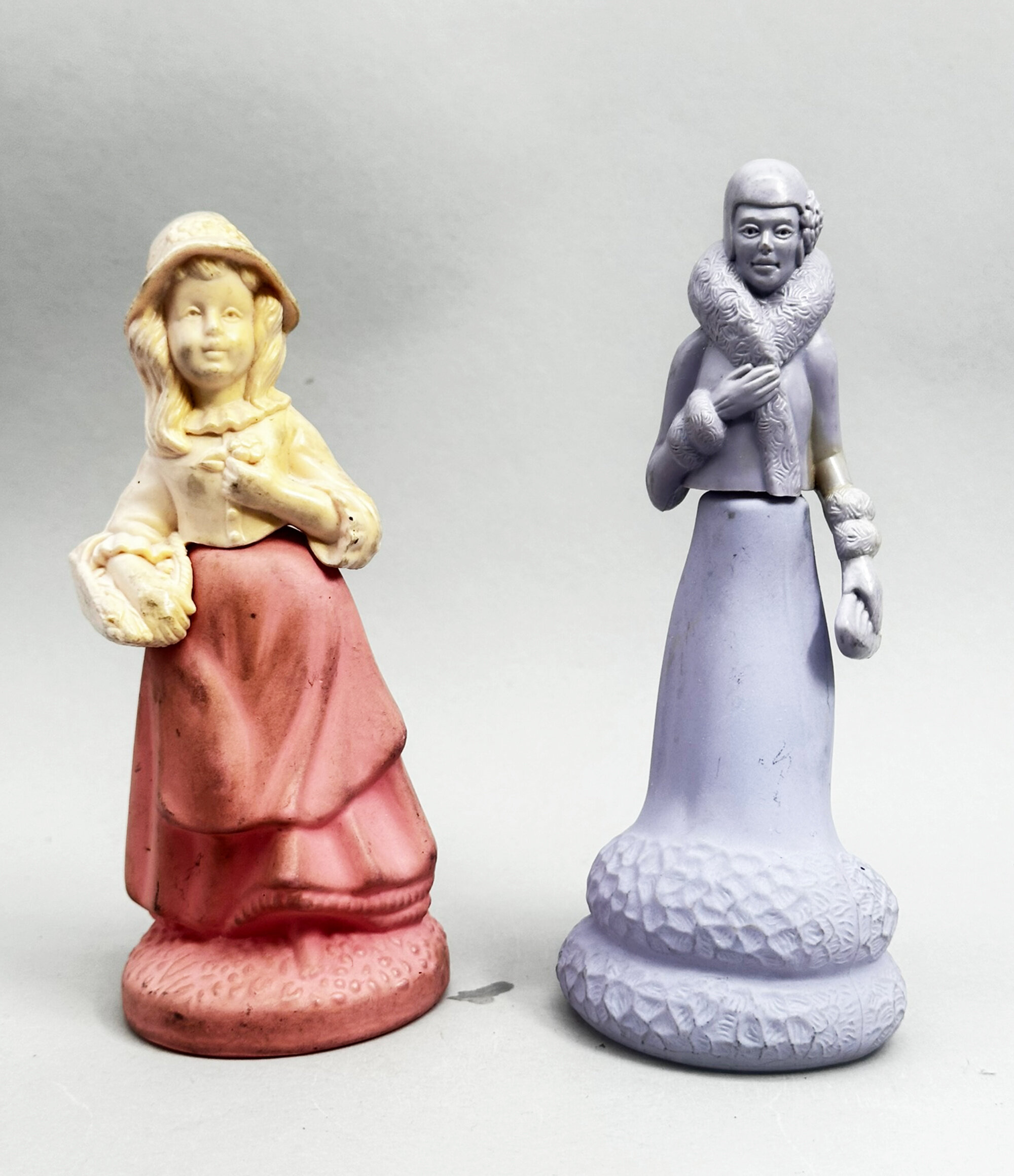
Two Avon Perfume Bottles, Lady and a Girl, 1970s
Price: £20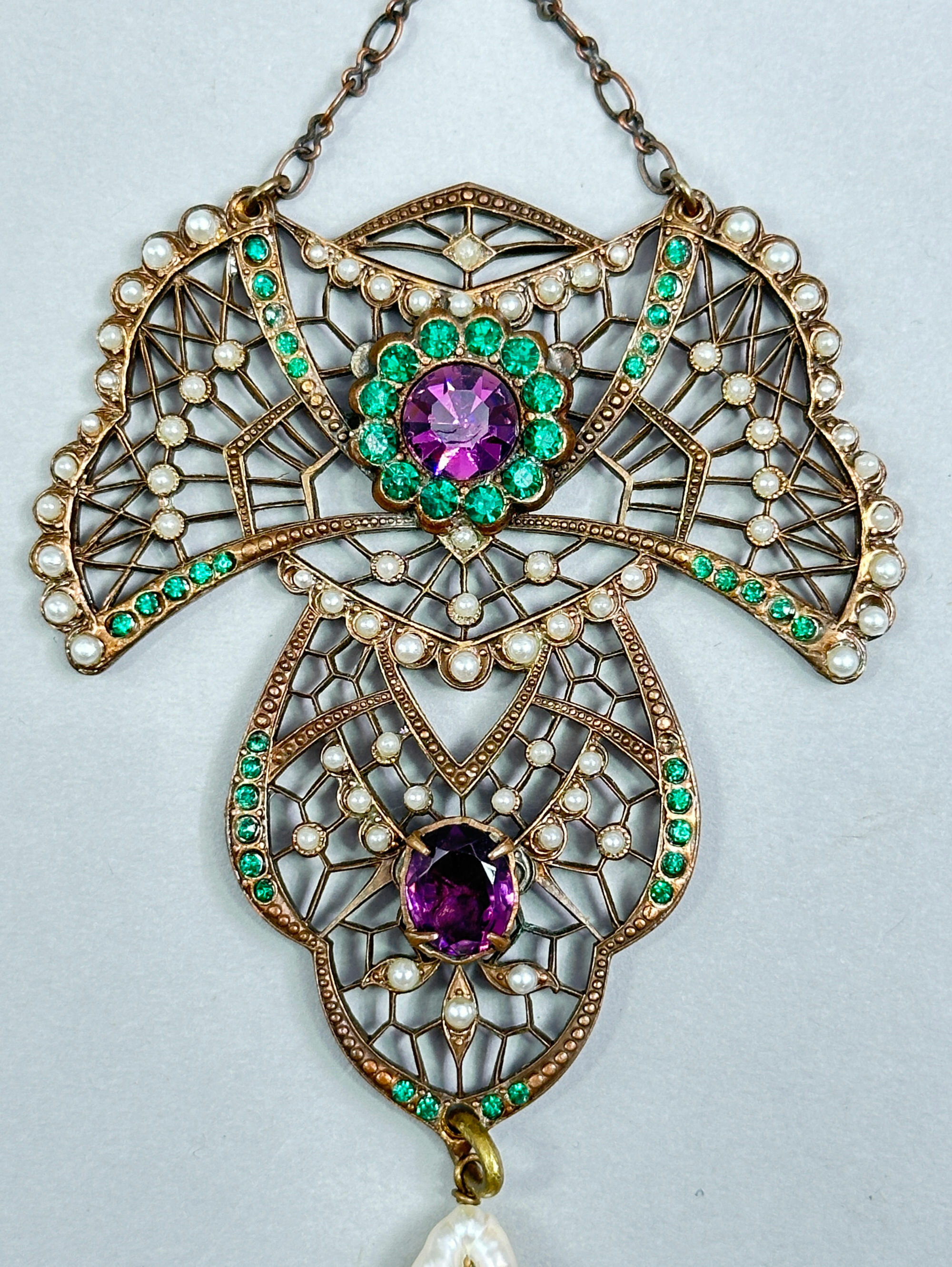
Art Deco statement necklace with real pearls and paste stones c1920
Price: £100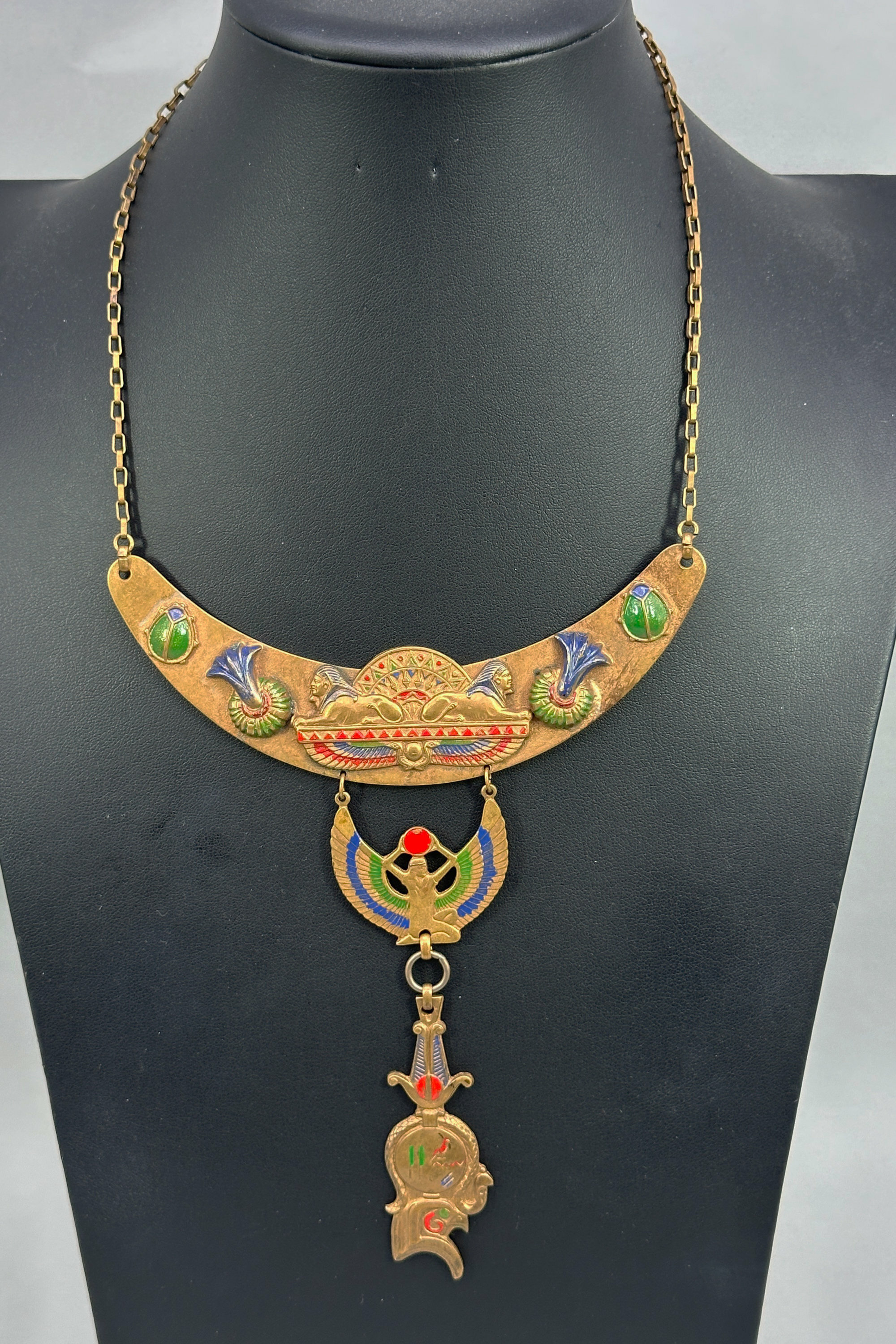
Egyptian Revival statement necklace c1920
Price: £85
Art Nouveau Fairy earrings c1930
Price: £25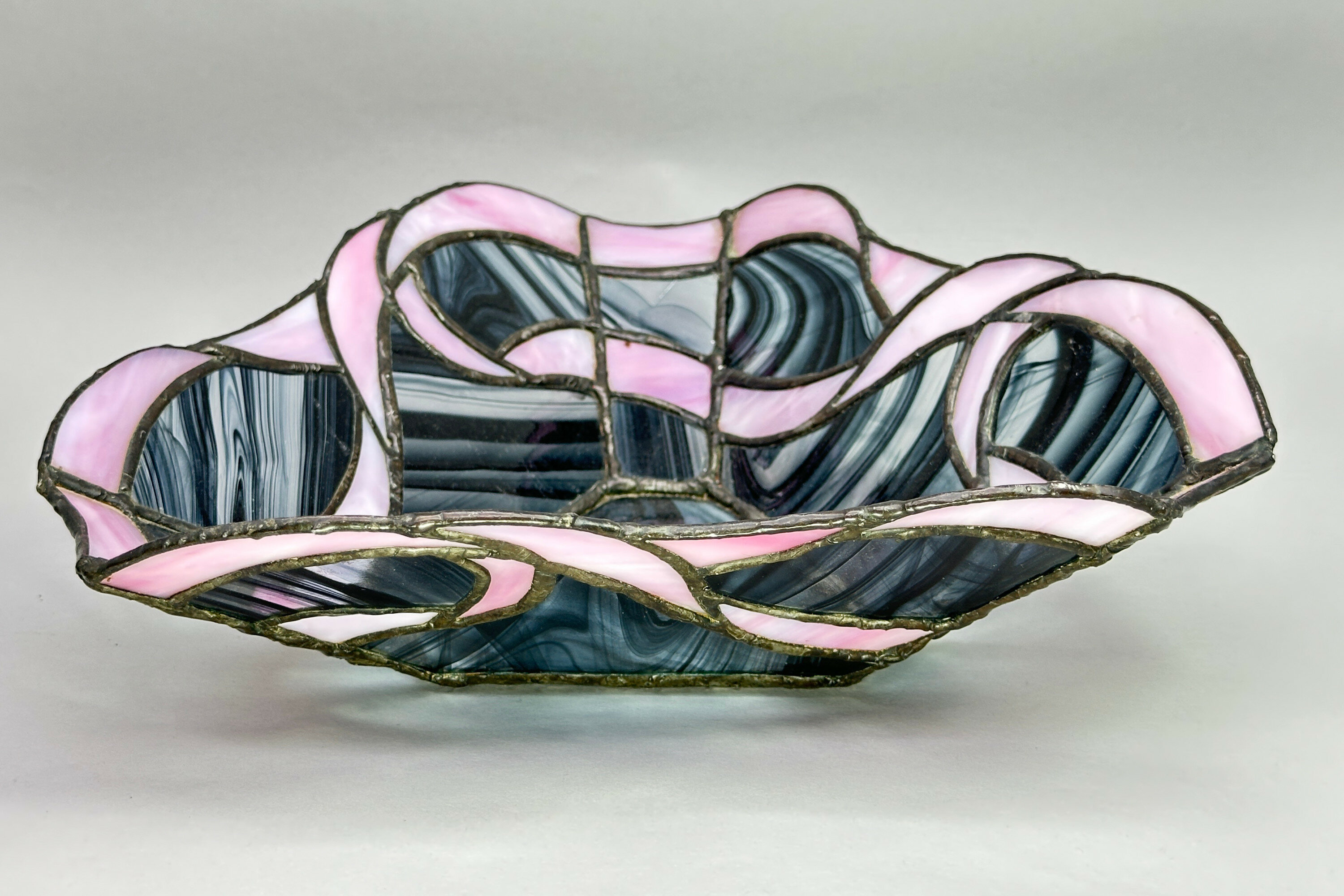
Leaded Slag Glass Bowl, C20th
Price: £45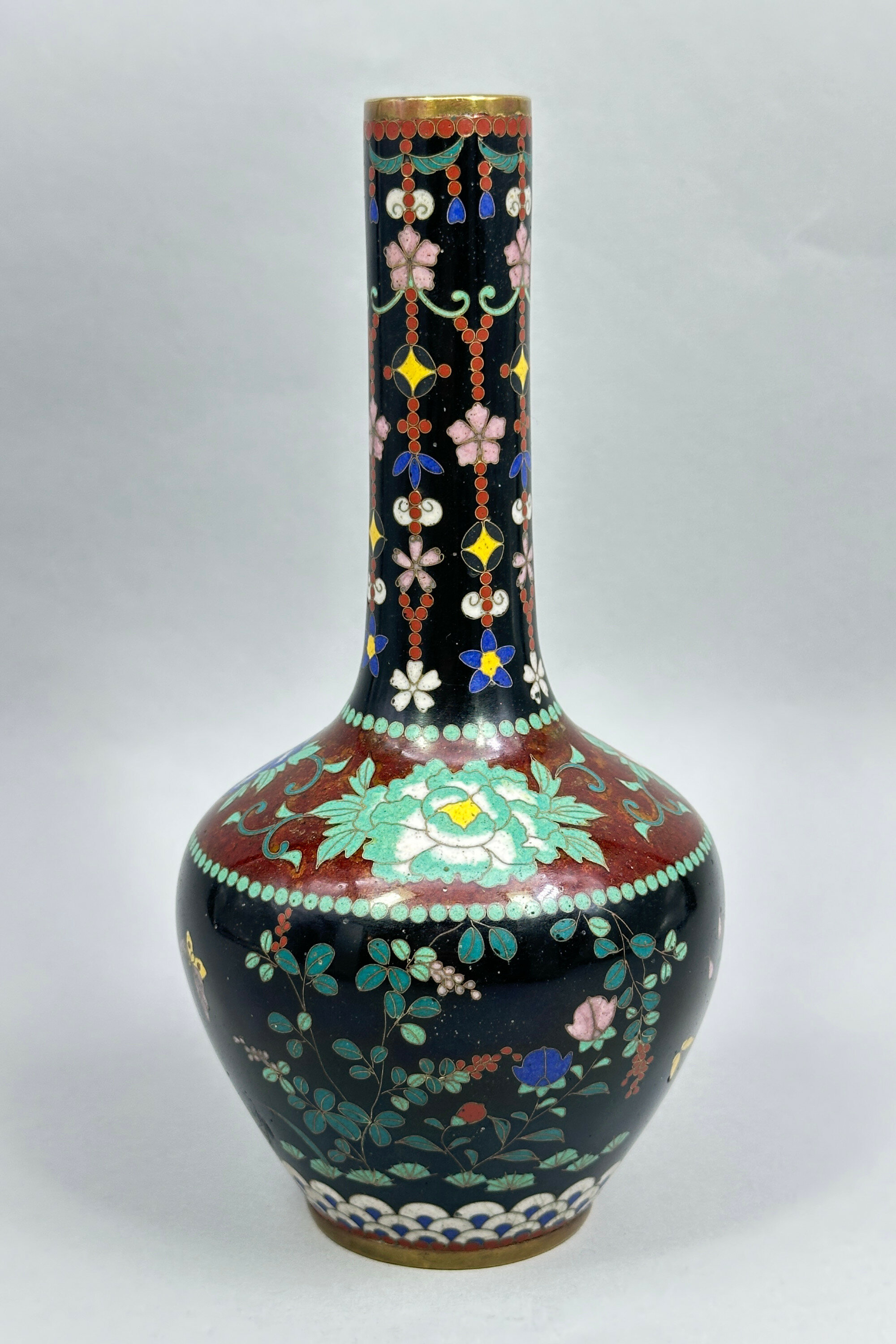
Fine quality Japanese Cloisonne bottle form Vase with black ground, late C19th
Price: £45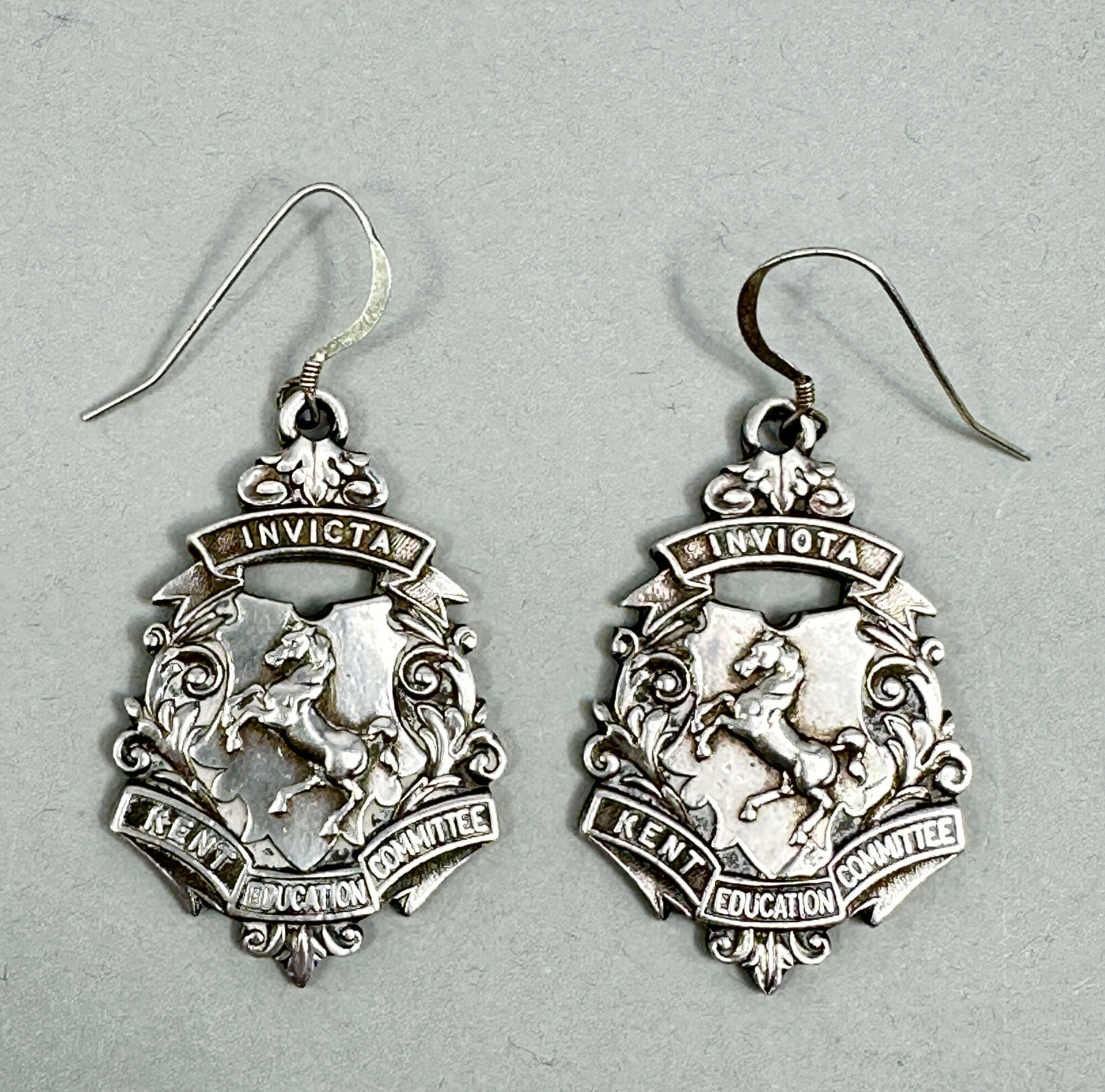
Pair of silver fobs adapted as earrings, Birmingham 1904 & 1905
Price: £75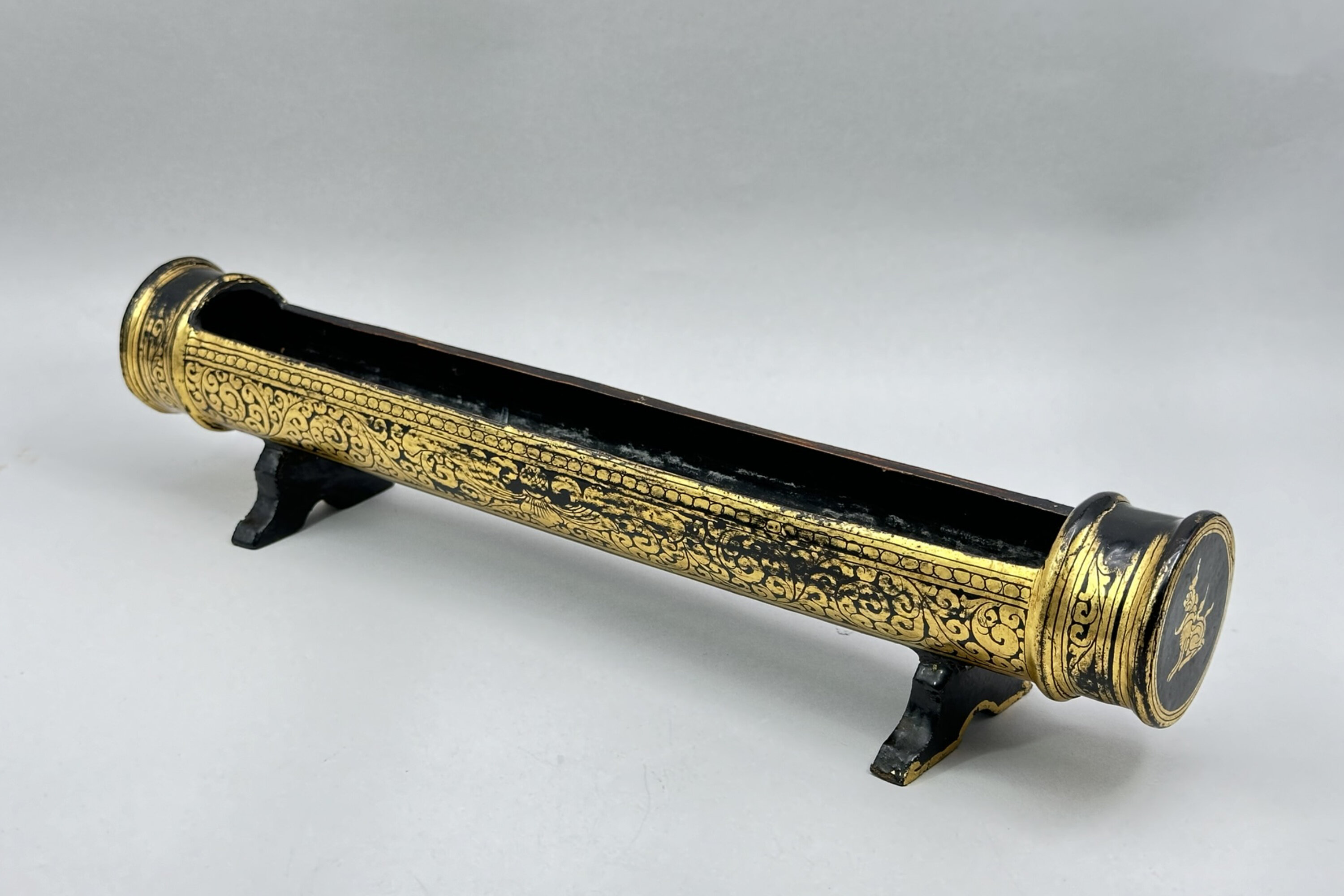
Burmese Black Lacquer and Gilt Scroll Stand, C20th
Price: £25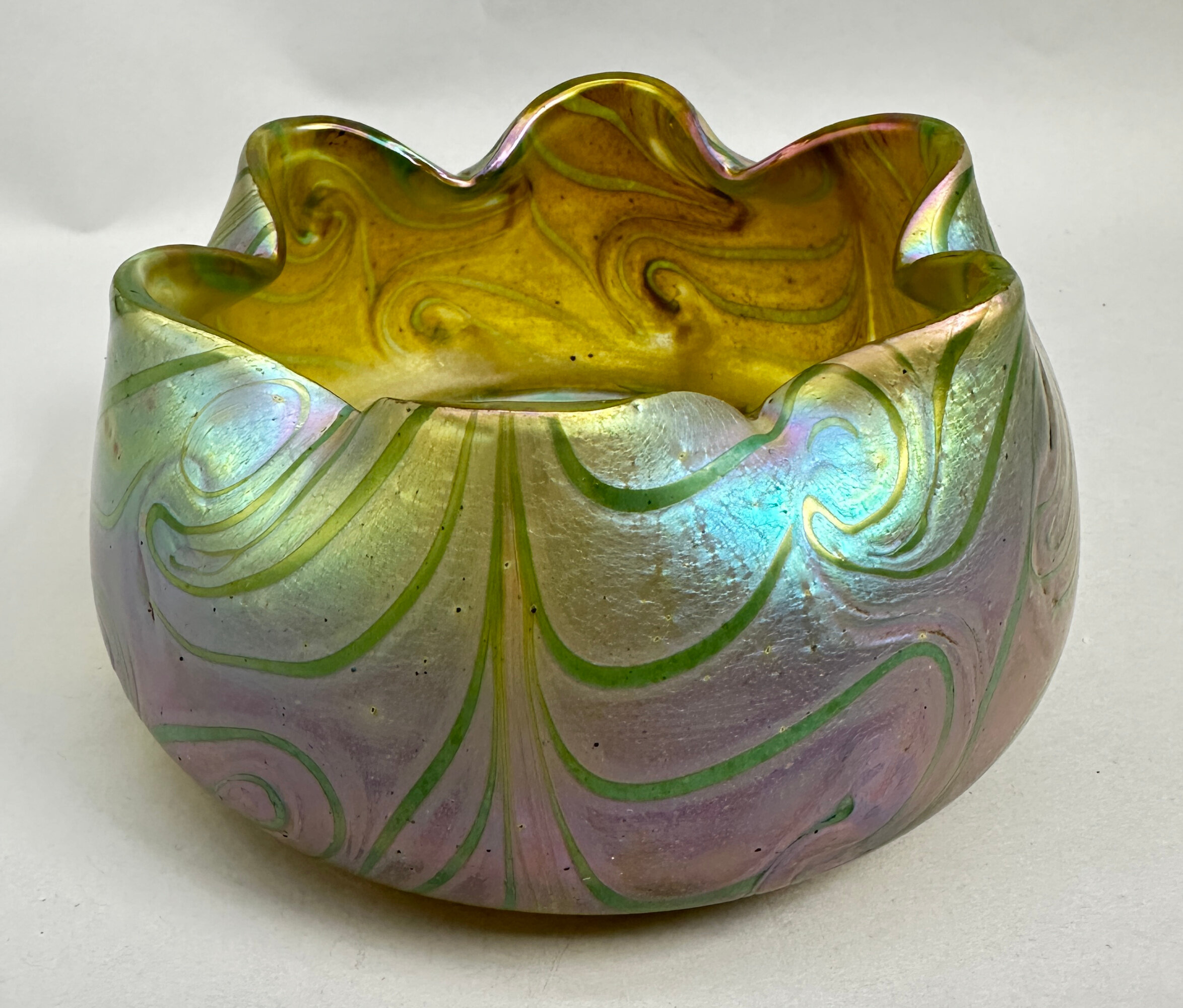
Loetz style glass Bowl, early C20th
Price: £110Most of the original Loetz pieces were not signed and there were many contemporary manufacturers making pieces in a similar style. There are, furthermore, modern reproductions. The attribution ‘Loetz’, is, inevitably, generously and loosely applied but sometimes true certainty is hard to achieve. Much information and assistance can be obtained from the website Loetz.com. On that basis this attractive bowl with its crimped rim and wavy line design on a purple ground is best regarded as Loetz style but probably contemporary with the output of the Loetz factory itself. It has great decorative appeal nevertheless.
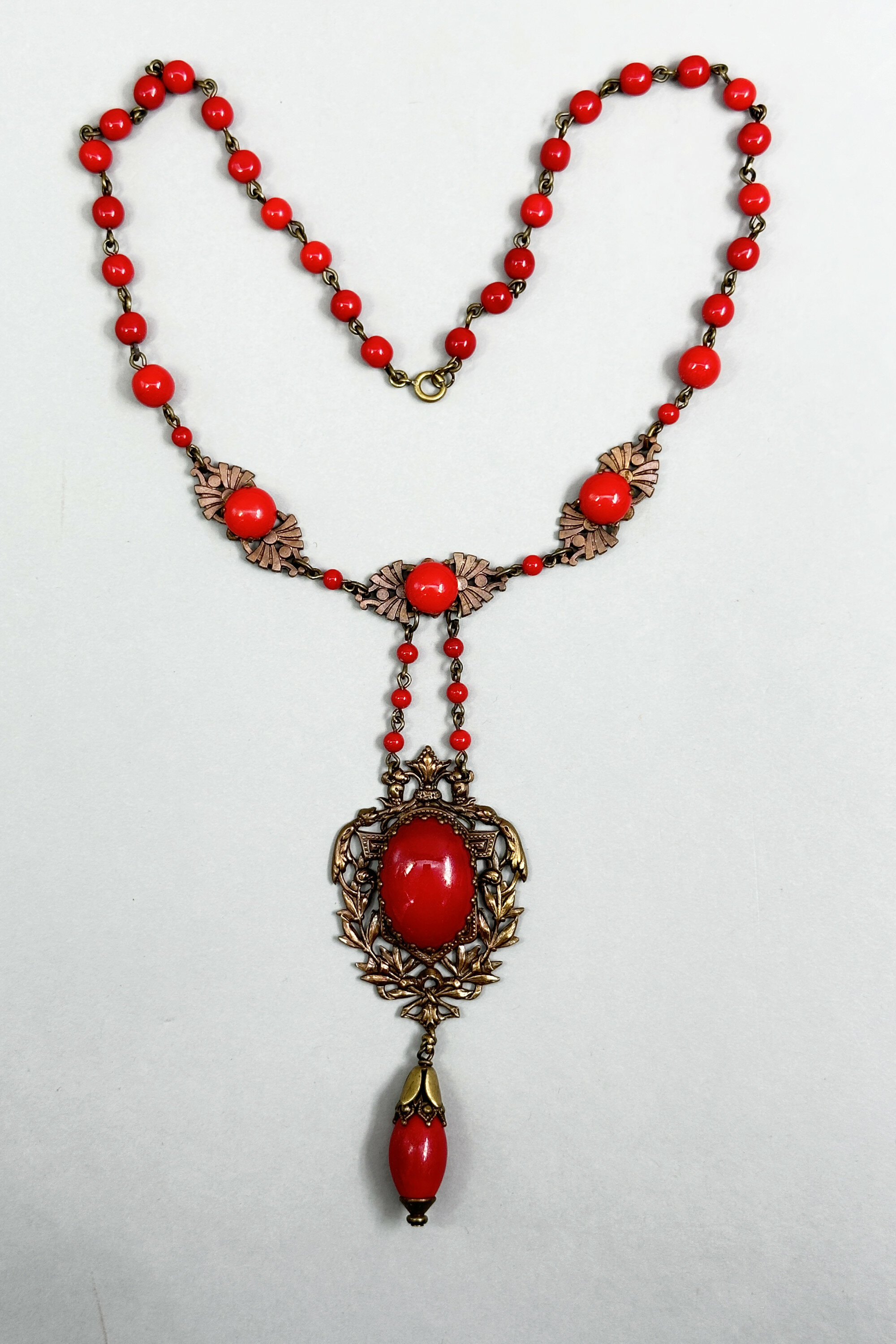
Victorian style Czech glass statement necklace c1930
Price: £65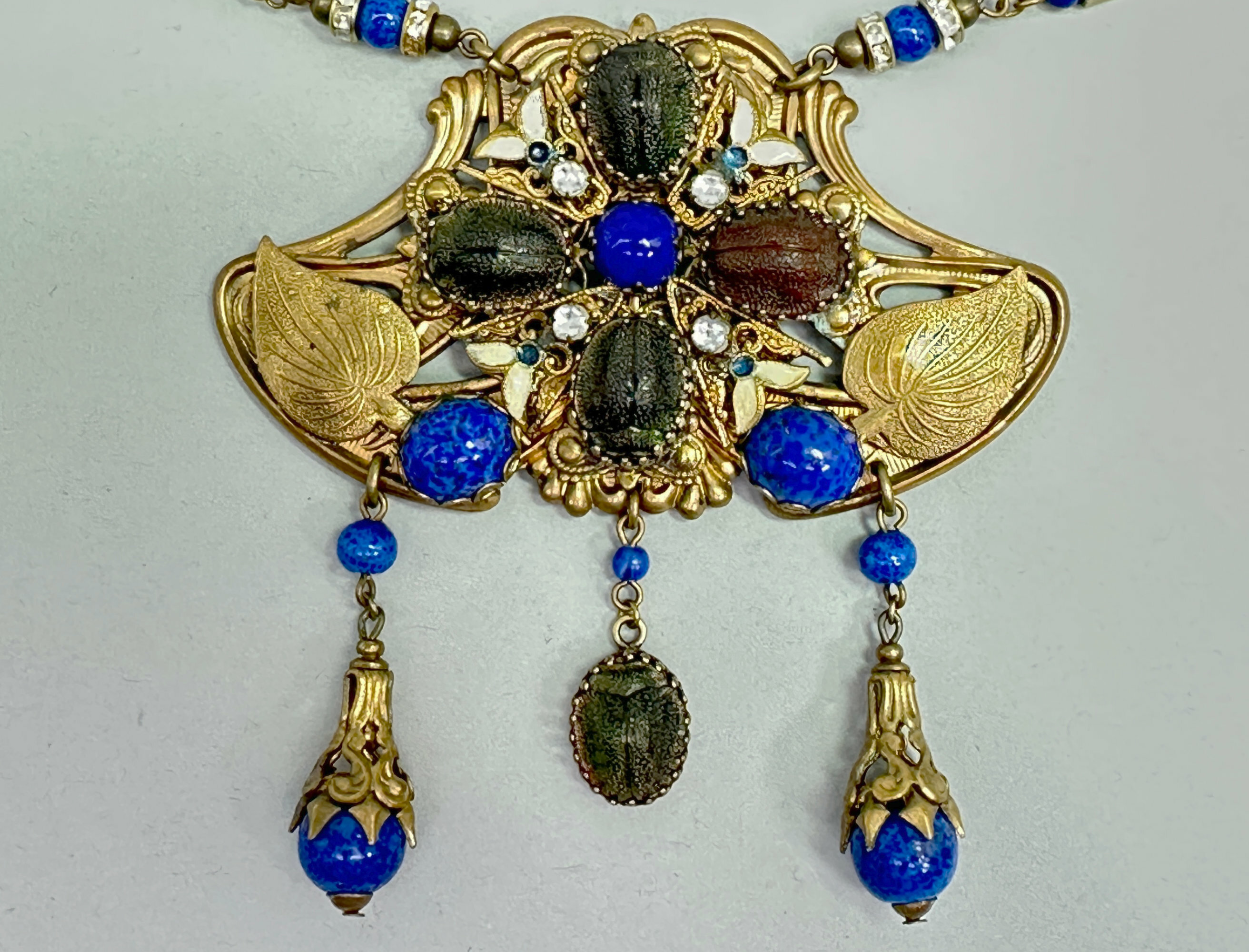
Egyptian Revival Czech statement necklace set with real beetles c1920
Price: £150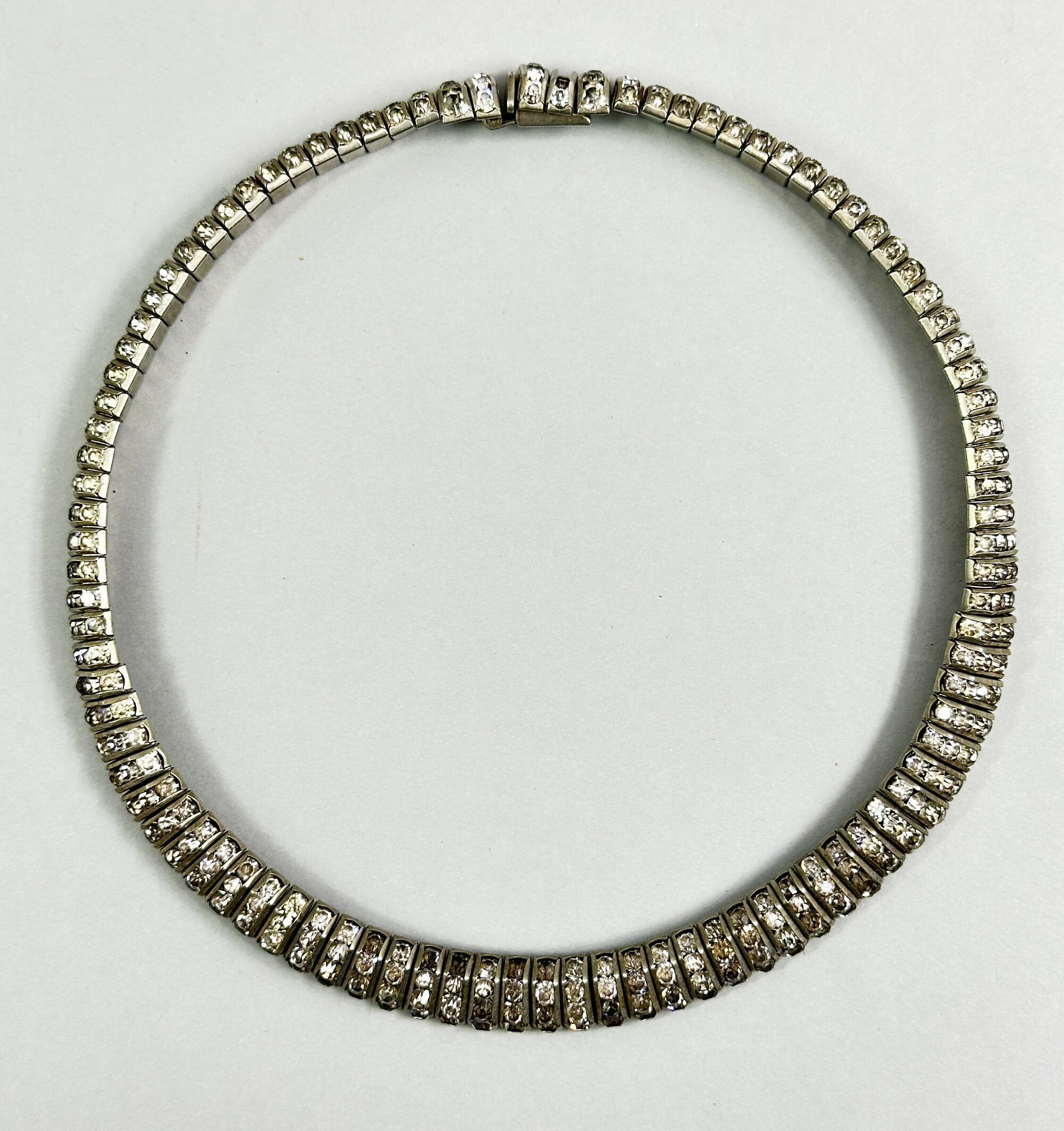
Art Deco paste collar necklace by Schreiber & Hiller c1930
Price: £125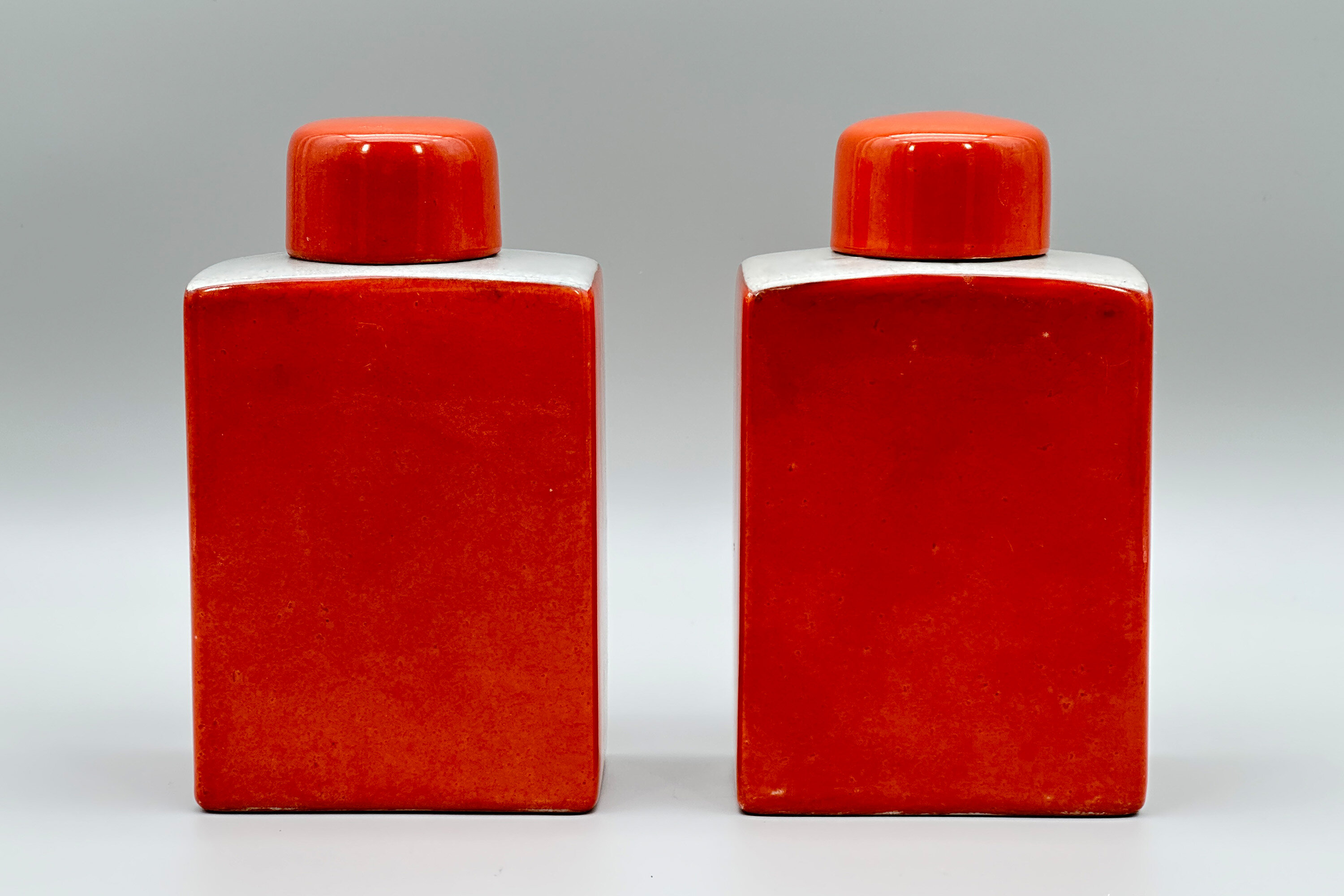
Pair of Orange Glazed Flasks and Covers, Fabienne Jouvin Paris, C20th
Estimate: £60 – 80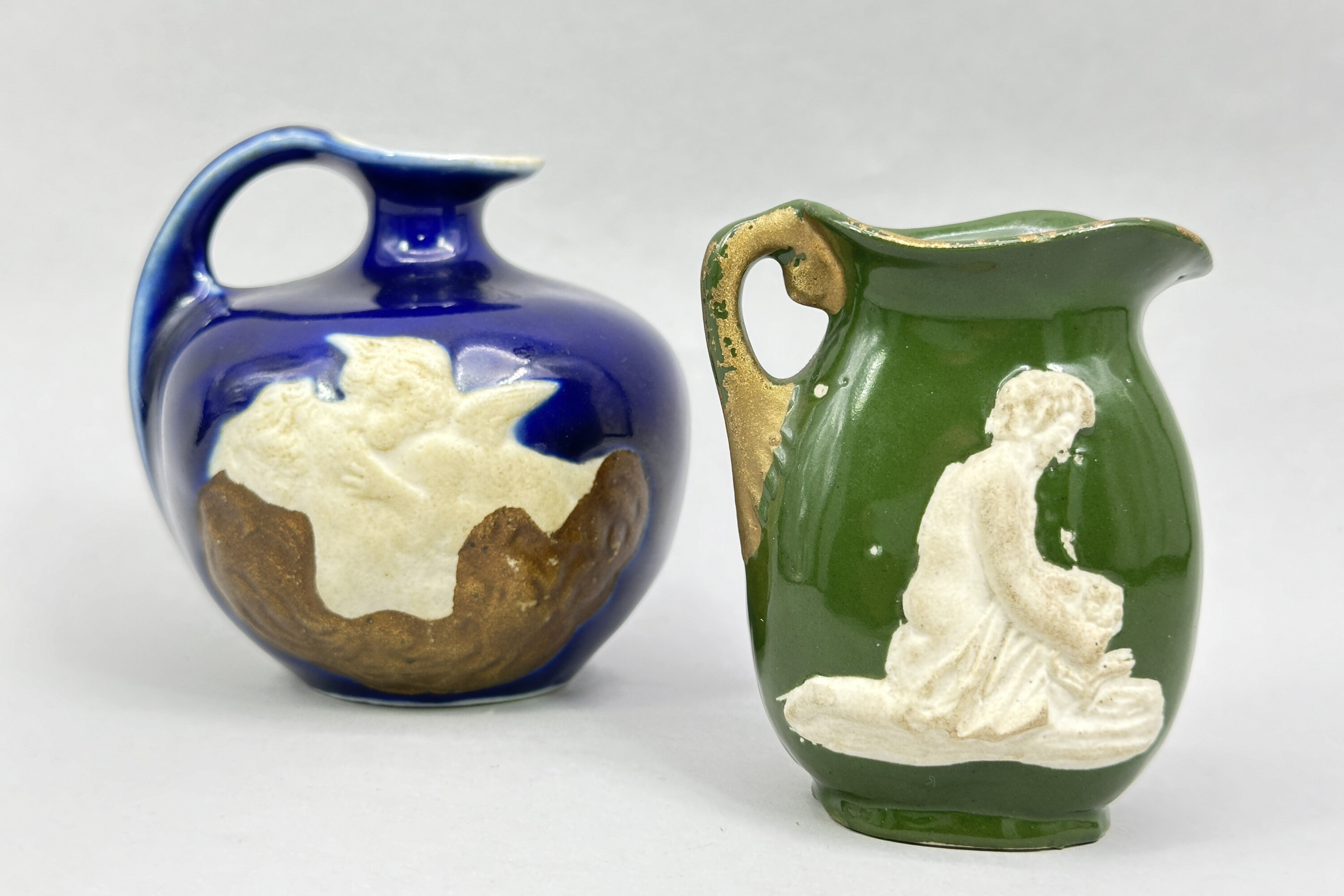
Two Ceramic Jugs with Erotic Decoration, continental perhaps German, circa 1900
Price: £25These pieces represent something of a puzzle. Seen the right way round (with the handle on the right) they are plain and the decoration only reveals itself on the reverse. This suggests a playful intent to conceal which, when combined with the subject matter, suggests something a bit ‘naughty’ which could confirm the second interpretation of what the seated man is holding! The paste, and general style of the pieces, looks continental and a German origin might be a good guess, but no more than that. The blue glazed jug has an impressed mark to the base ‘186 [plus an unidentifiable number]’ which might be the date but is more likely the pattern number; a dating of around 1900 for both seems reasonable - certainly there is an ‘old’ look to the pieces. There are one or two similar examples but little in the way of firm information. One for a collector to puzzle out!
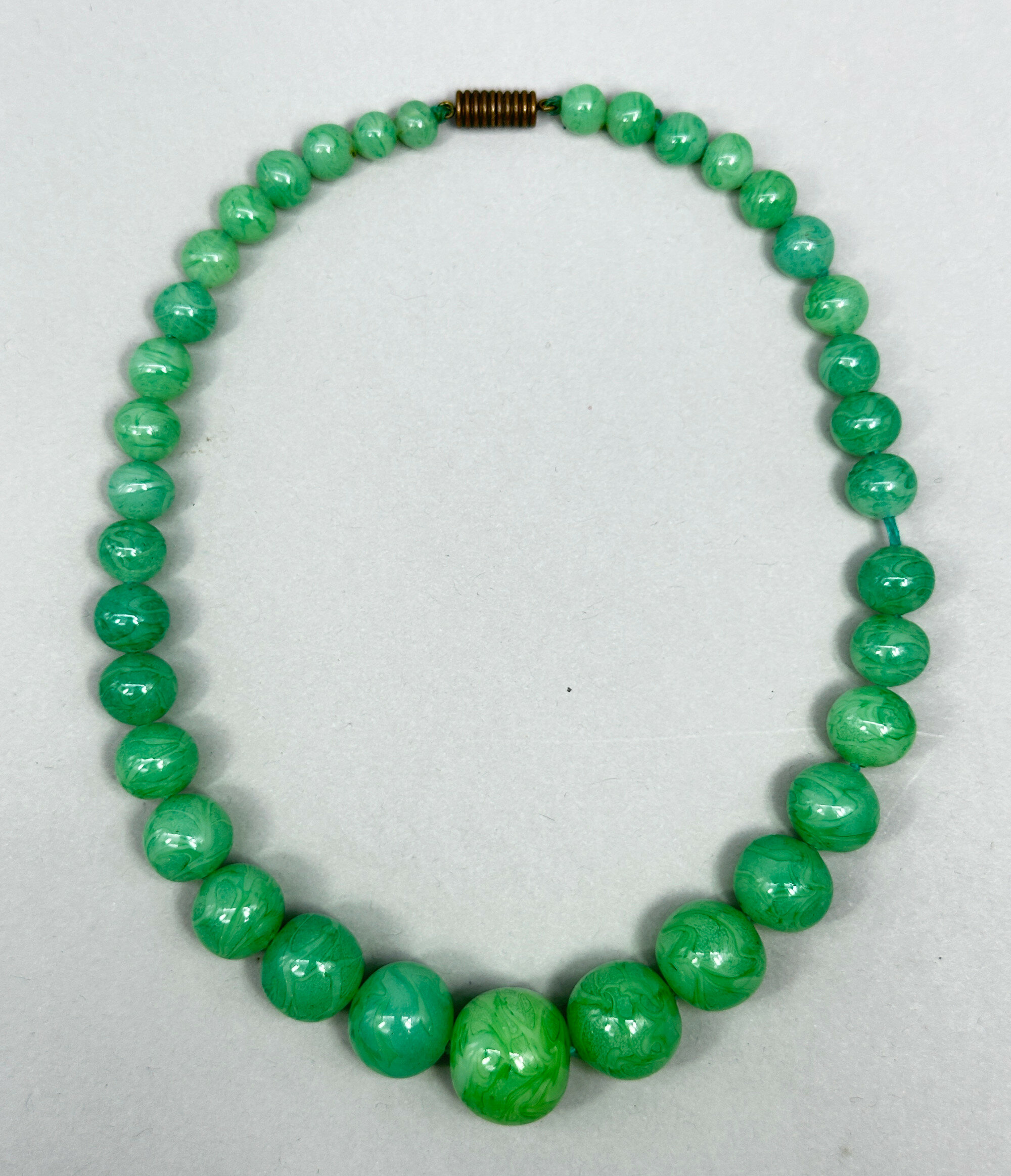
Strand of large Peking glass beads c1920
Price: £25
Stunning rope and tassel necklace, signed, c1990
Price: £45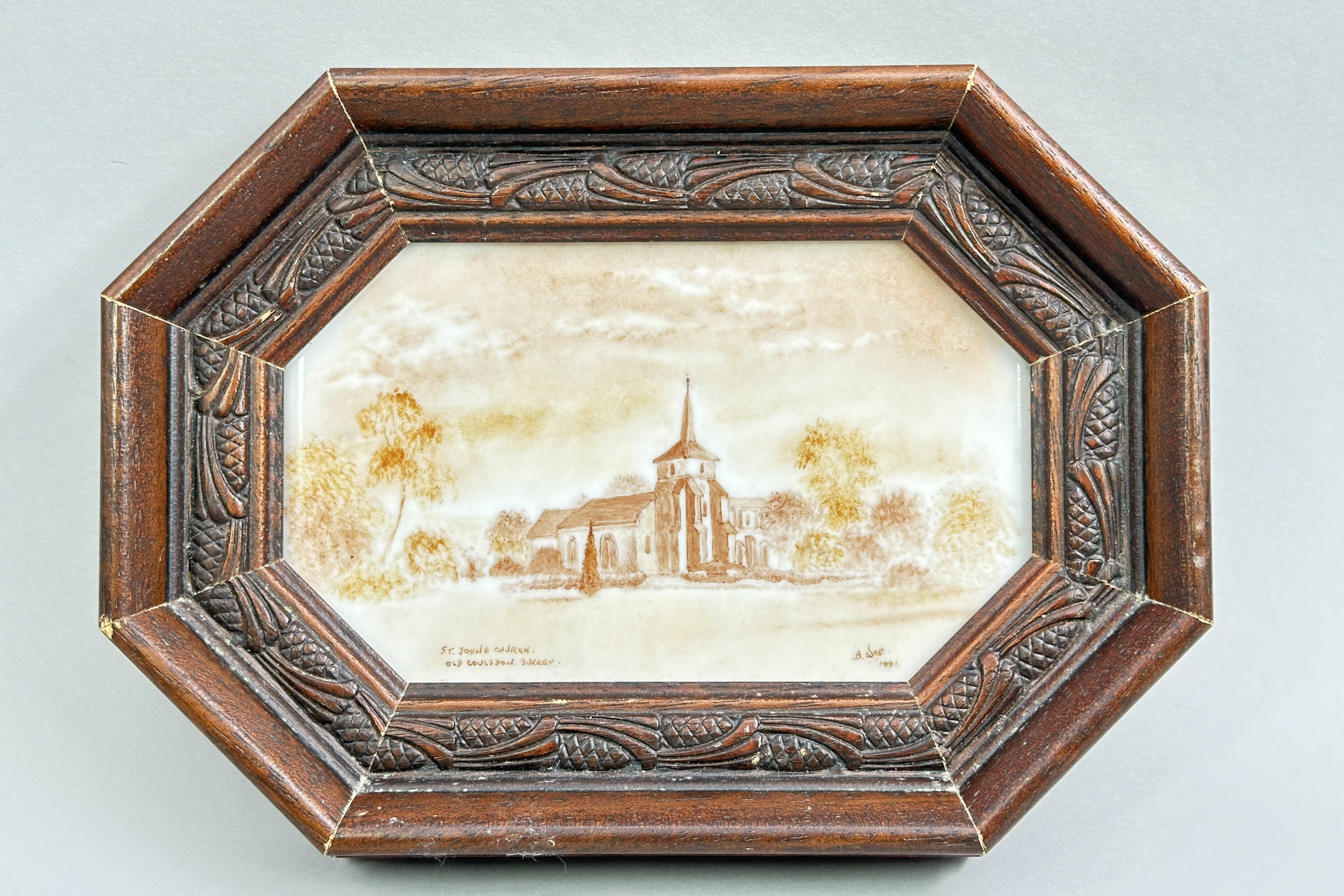
Framed Ceramic Plaque depicting St John’s Church, Old Coulsdon, late C20th
Price: £25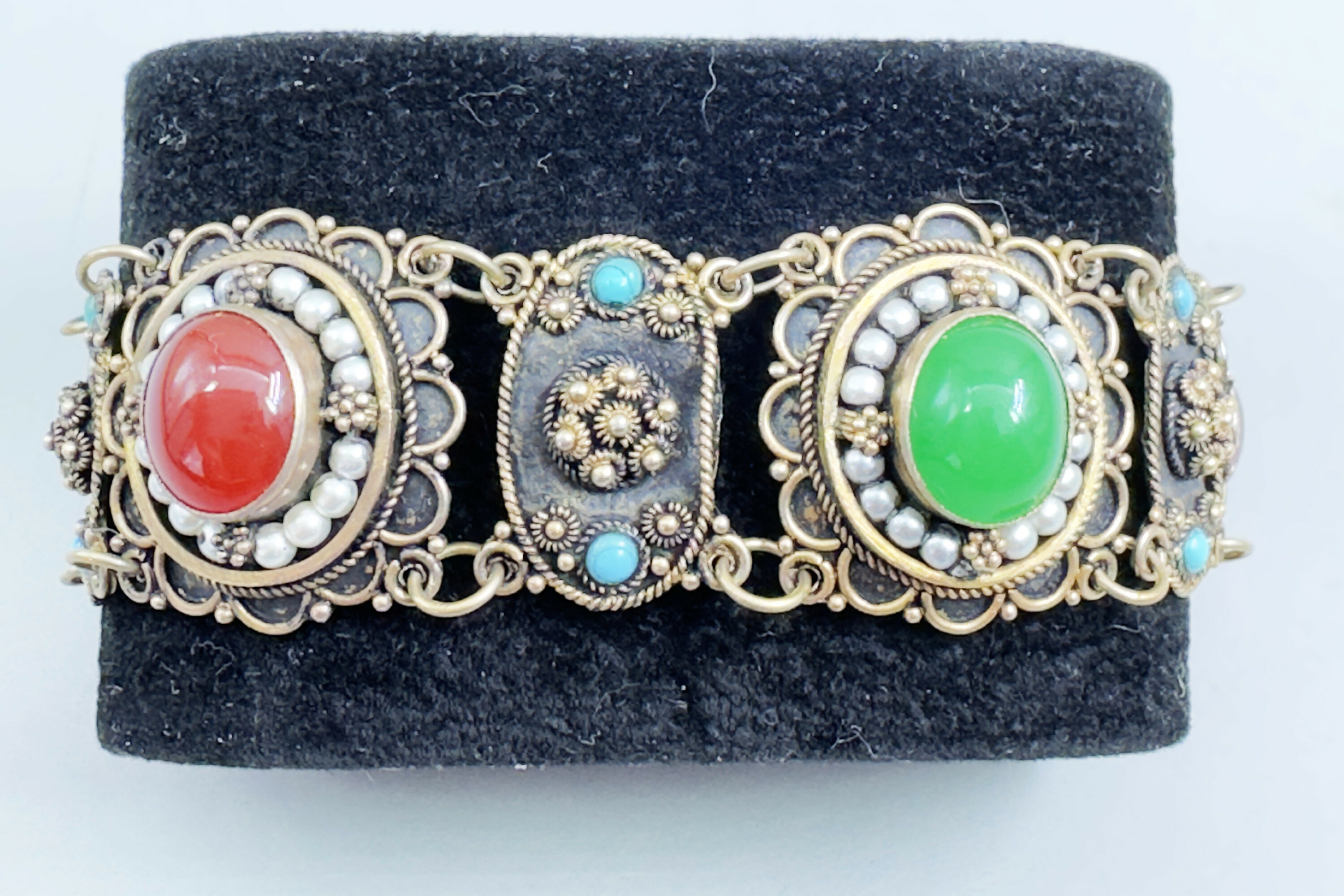
Victorian silver gilt filigree bracelet, Morocco
Price: £95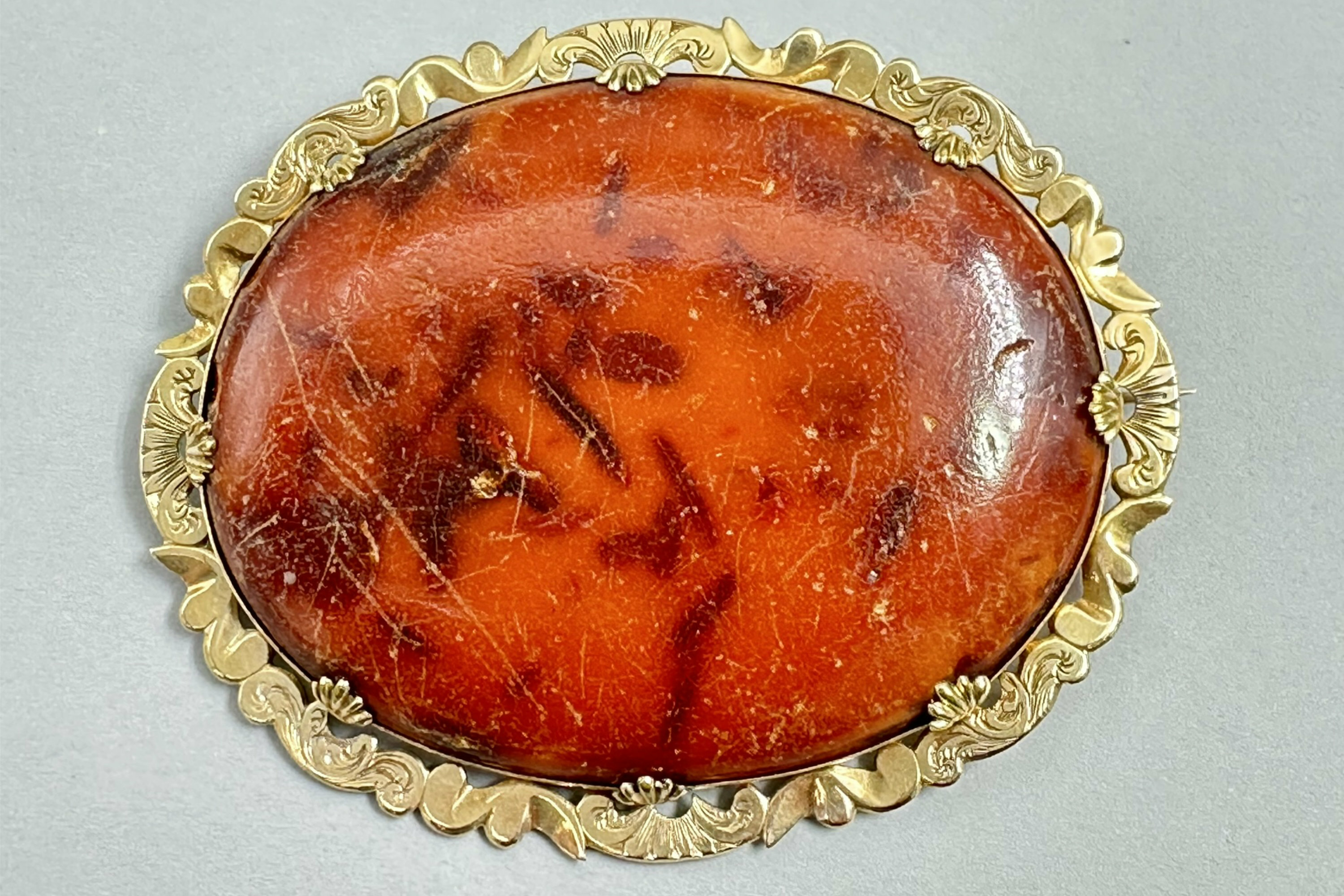
Victorian large 9ct gold brooch set with amber c1900
Price: £200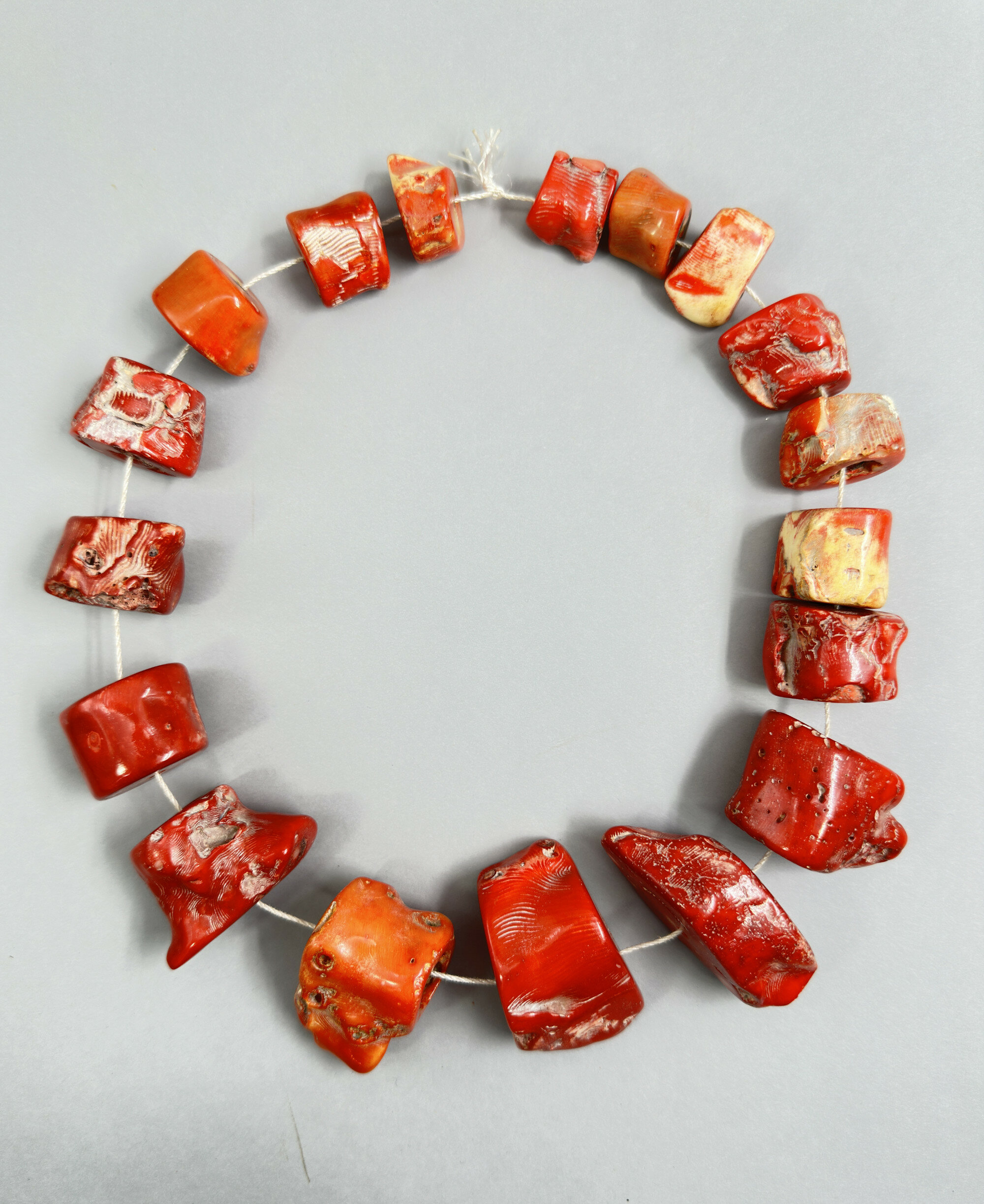
Massive natural coral beads
Price: £175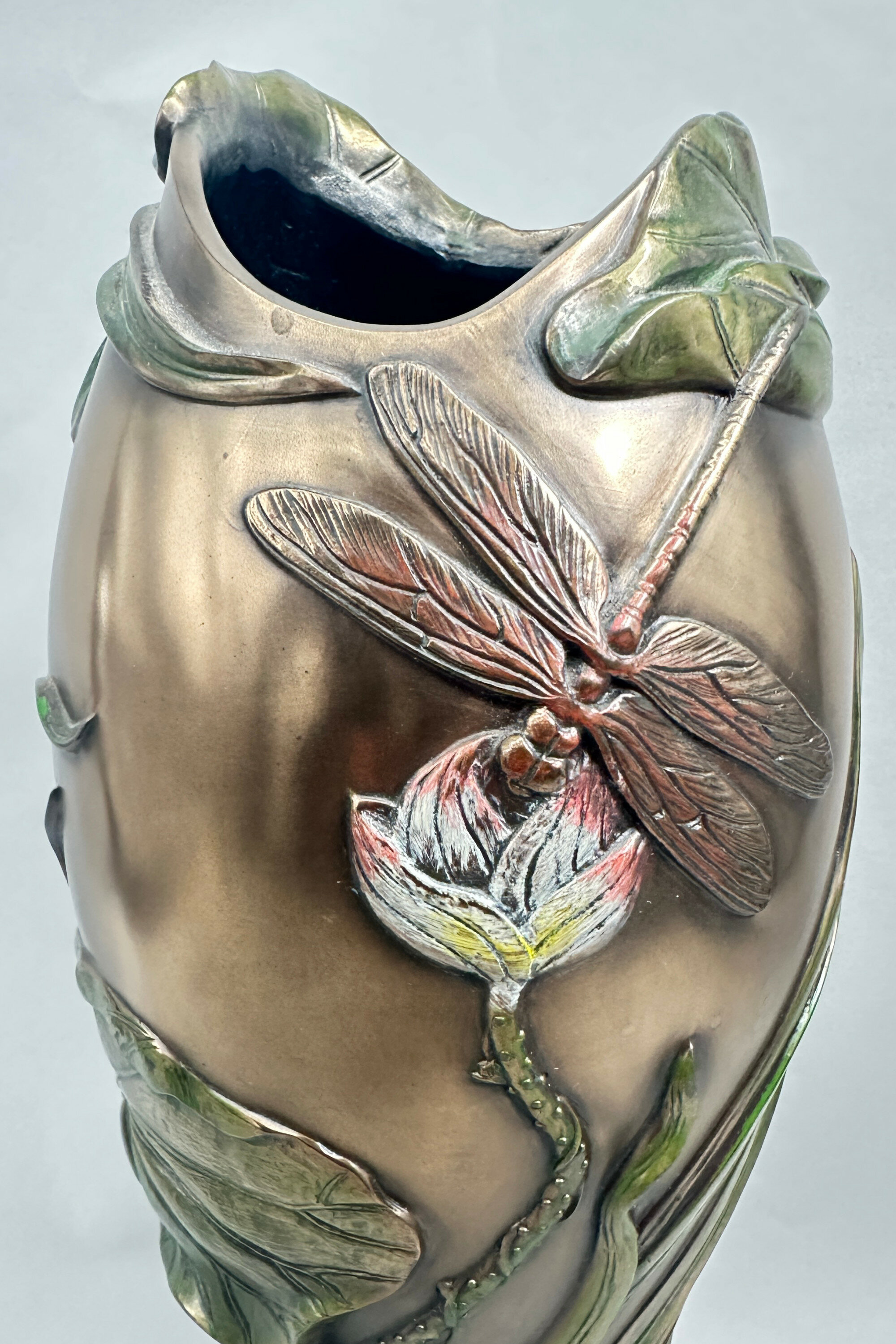
Past Times Art Nouveau Style Vase, Veronese Collection, 2004
Price: £45‘Past Times’ was founded in 1986 by John Beale, at first as a mail order company but then trading from physical stores and developing into a business which enjoyed enormous popularity with over one hundred shops in the early 2000s. The stock was focused on retro and vintage style items also including a wide range of licensed products, such as Harry Potter and Beatrix Potter merchandise. Badly impacted by the recession in 2008 it went into administration in 2012 and was bought by W.H.Smith a year later leading to the disappearance of its products from the marketplace.
This ‘Art Nouveau’ vase can be seen as an example of their range at its best. Manufactured with care it presents an appealing souvenir of the era it aims to recreate at a rather more affordable price than the authentic originals.
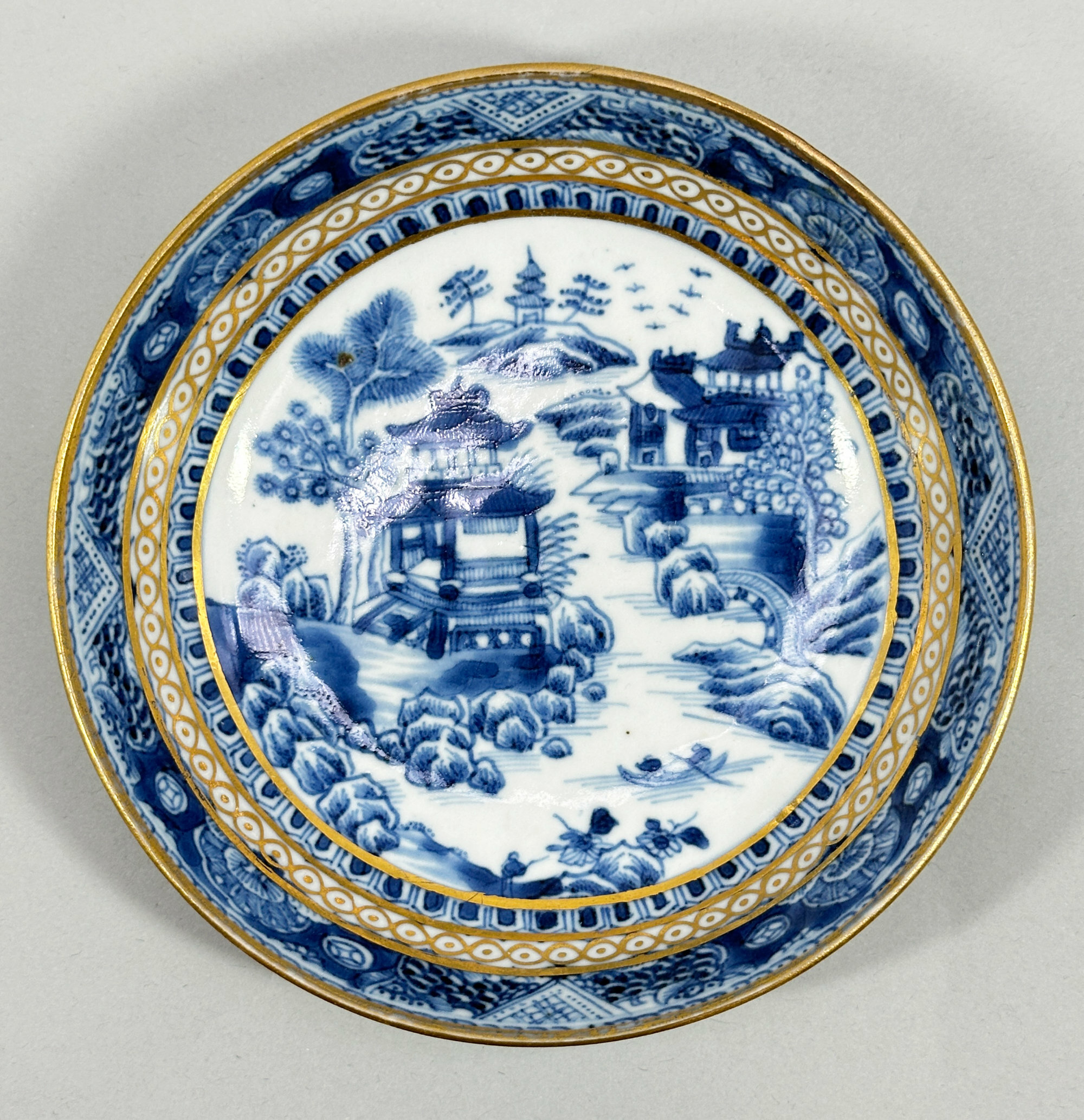
Chinese Export Nanking Pattern Saucer, Qianlong period (1736-1795)
Price: £75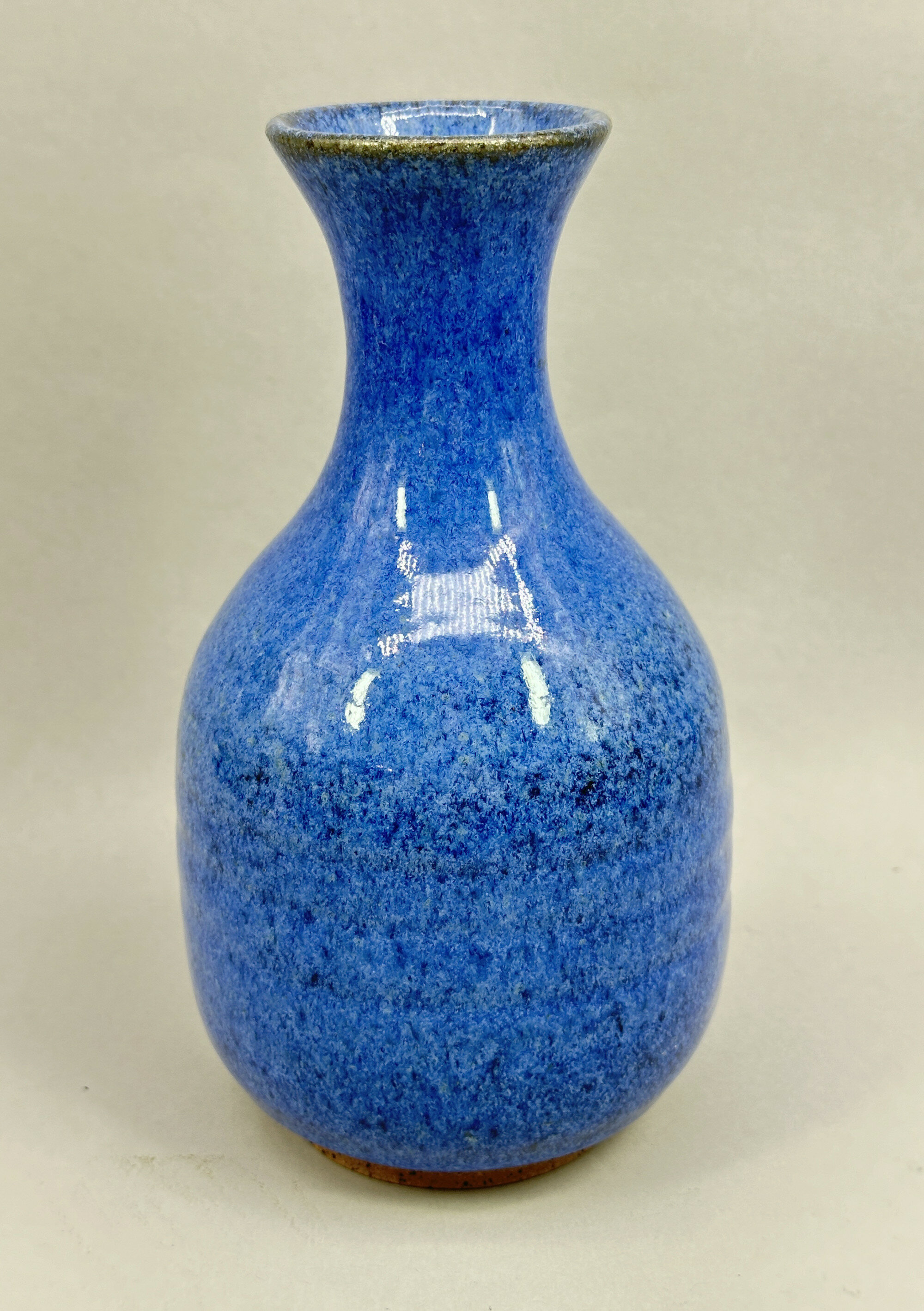
Studio Pottery Vase with Robin’s Egg Glaze marked Zambia, Modern
Price: £30
Nesting Set of Four Small Brass Trays with an engraved designs of Bats, Chinese C20th
Price: £30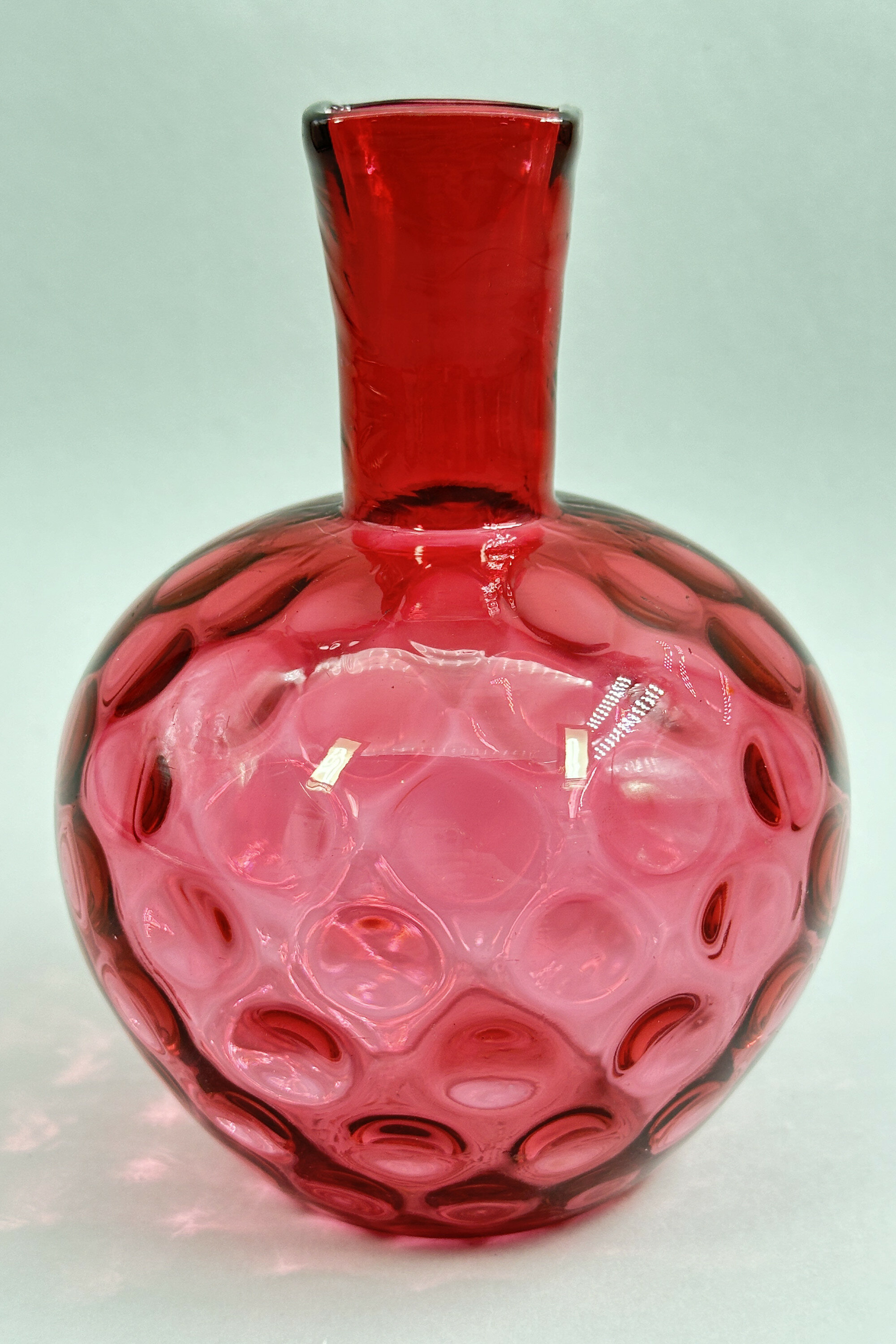
Cranberry Glass Vase circa 1900
Price: £30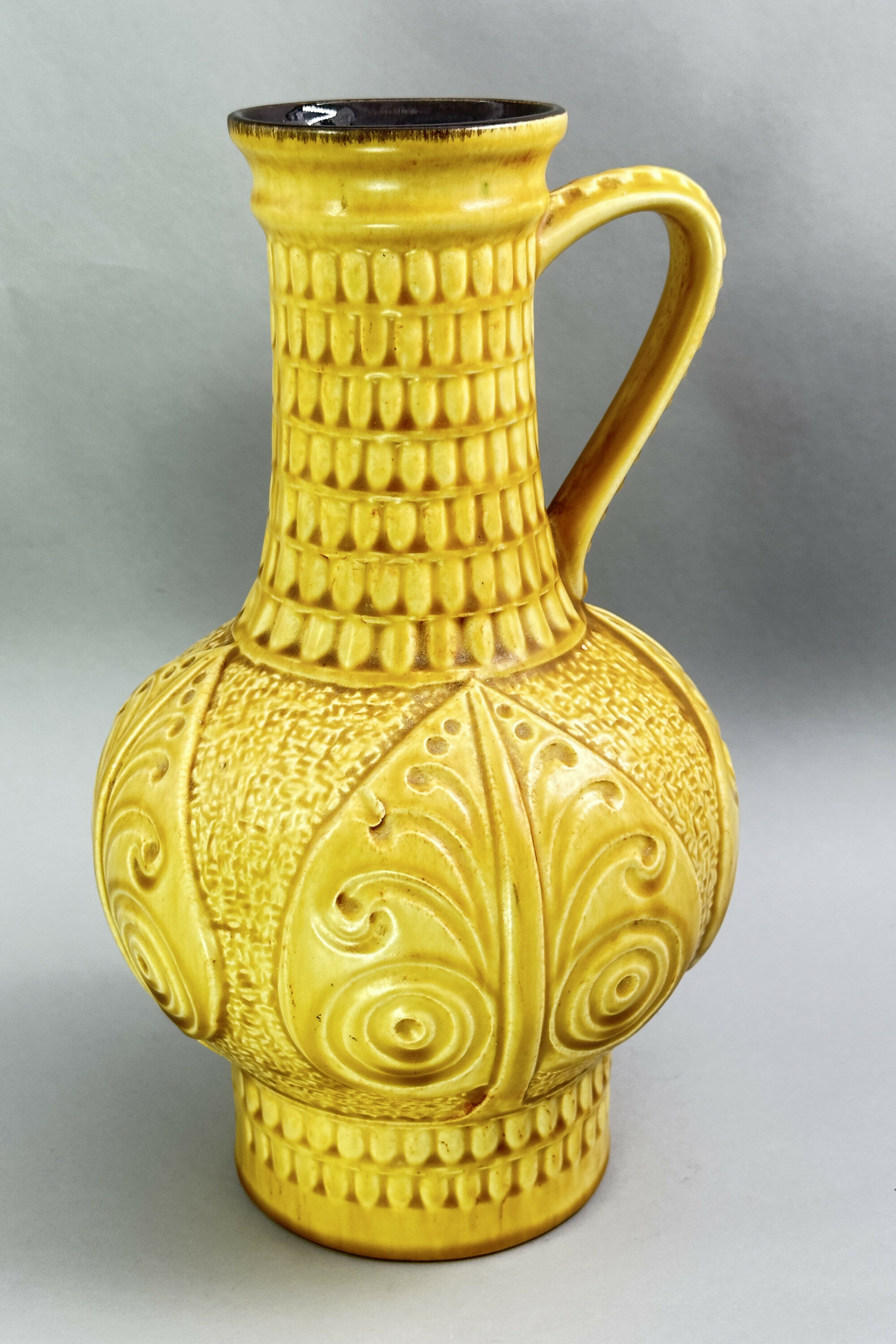
Bay Ceramic Ewer No 268-30, West Germany, 1960s
Price: £55Bay Ceramics was founded by Eduard Bay in the 1930s and based in Ransbach Baumbach, the heart of the main West German pottery producing region. Their productions included vases in a wide variety of shapes and designs which continued in production until the 1980s. Bodo Mans was amongst their most famous designers working in the 1950s and 1960s. He seems to have concentrated on organic semi abstract designs and ewers in this form, with the same pattern number but in a variety of different glazes, are attributed to him. This monochrome mustard glaze seems particularly attractive and complements the design very successfully producing a striking and decorative item which might enhance a wide variety of interior settings.
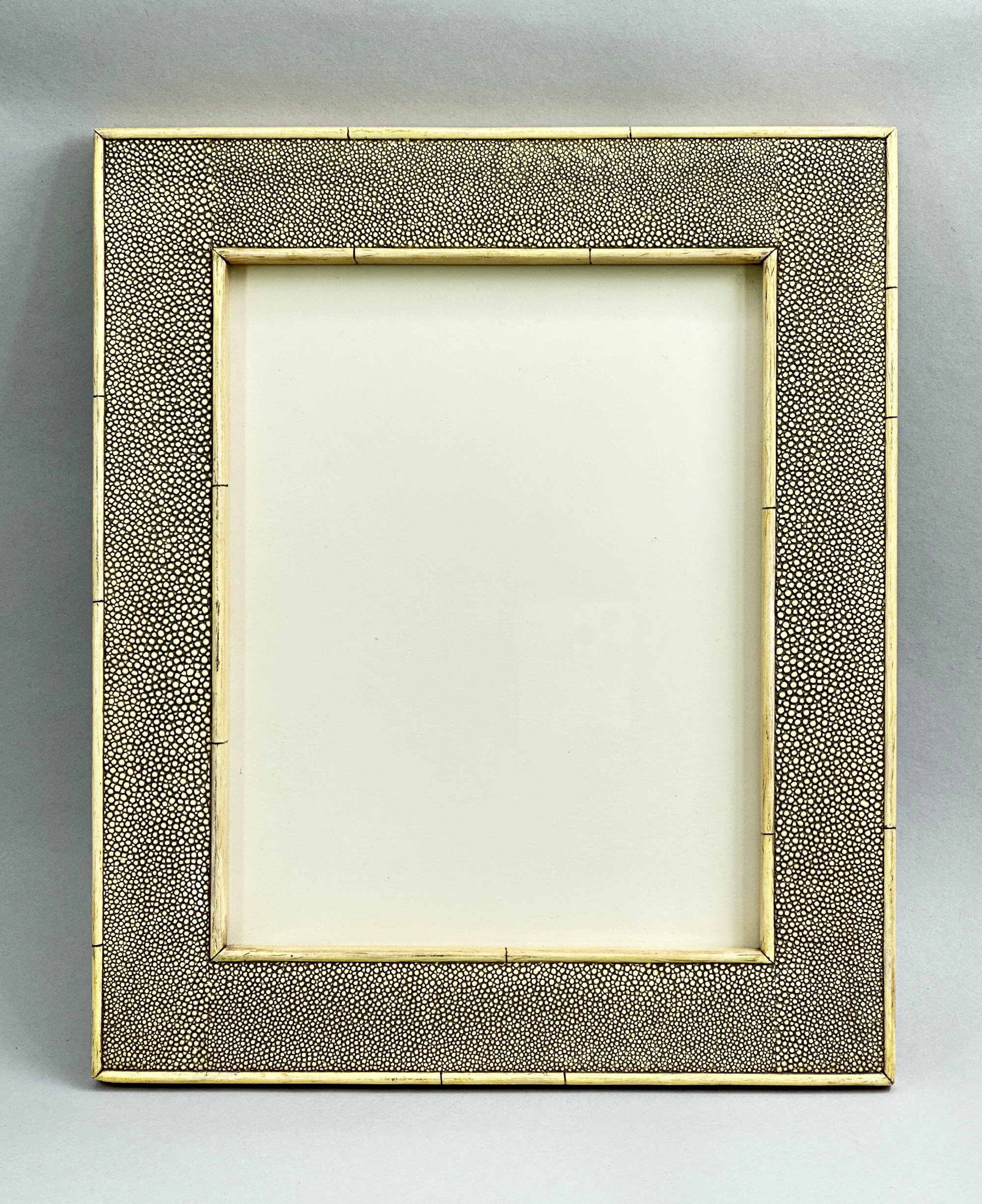
Art Deco Shagreen Picture Frame, 1930s
Price: £110Shagreen is a natural hide, typically from shark, stingray or dogfish, worked through special processes to produce a granular surface effect. Known in China and Japan from the earliest times and popular in Europe in the eighteenth century Shagreen enjoyed its greatest popularity in the Art Deco period where it was used as a covering for writing desks and well-dressed cabinetry and smaller items such as the picture frame we have here. The clean lines of this piece and the palette of colours employed fit exactly with the ethos of the Art Deco period and a dating to the 1930s is extremely likely. A luxury item at the time it could be used now to provide enhanced presentation of a favourite image adding to it a hint of true elegance.
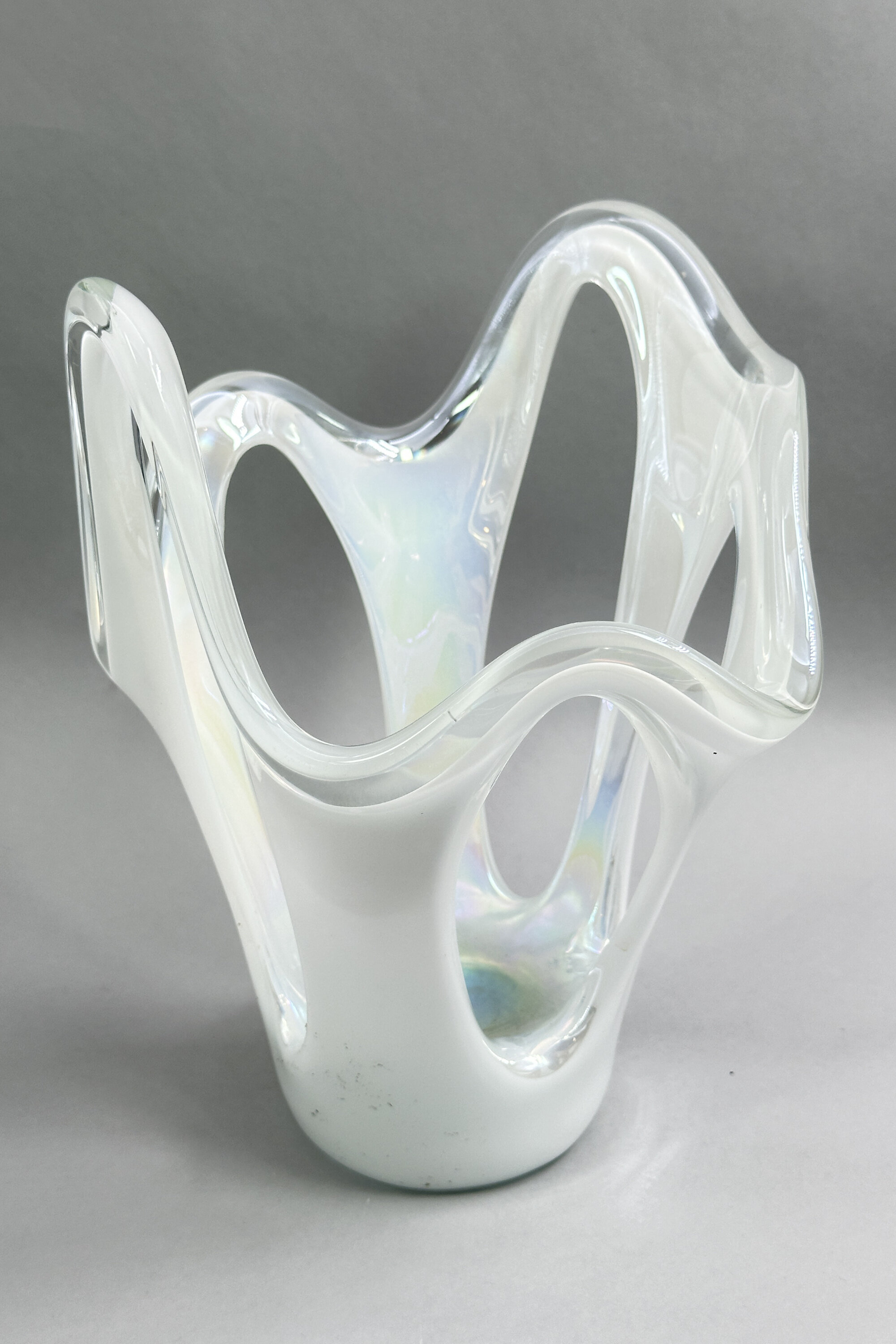
Murano White Glass Vase of abstract organic form, 1960s
Price: £55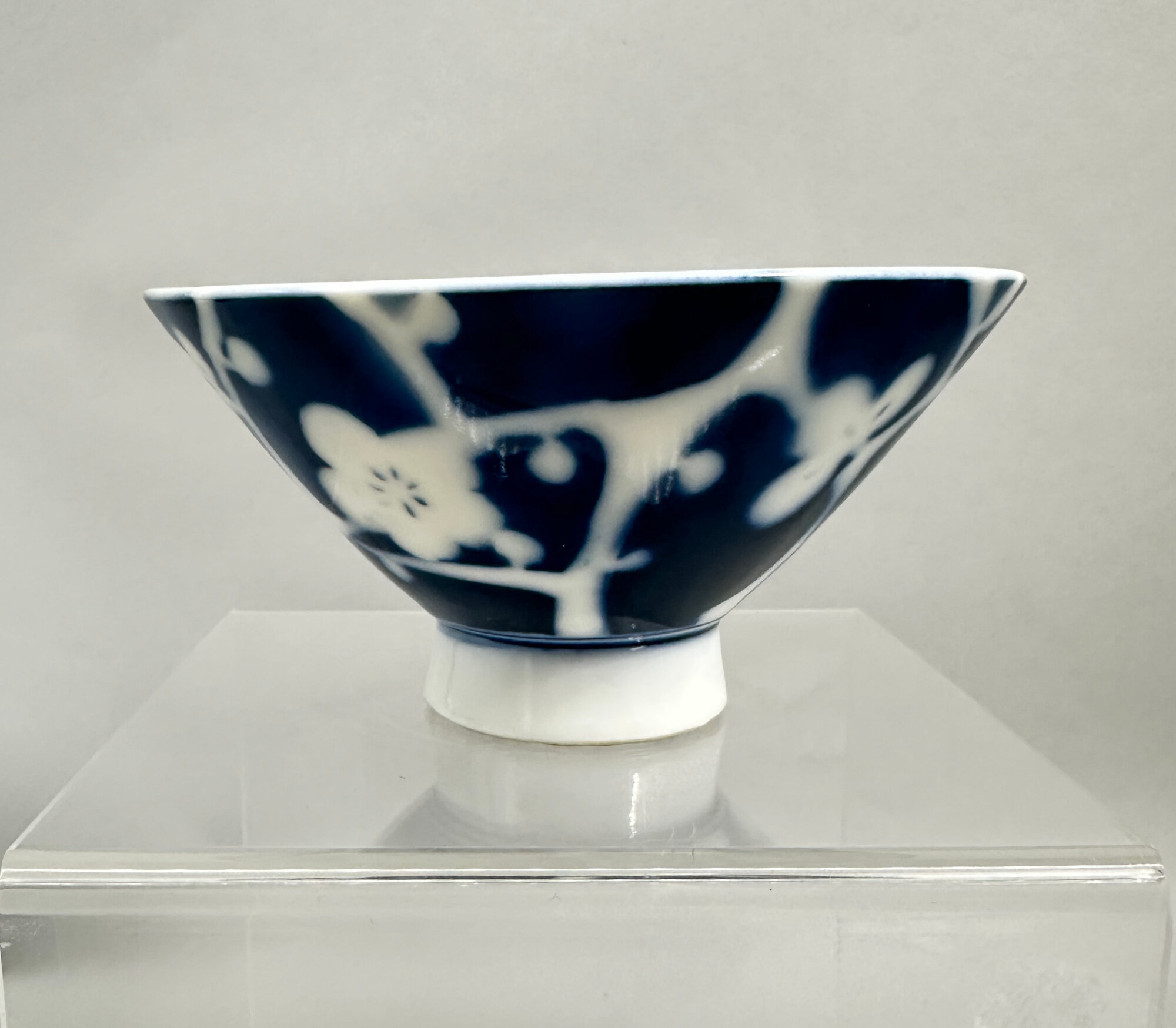
Japanese blue and white hat shape small Bowl with flowering prunus, C20th
Price: £25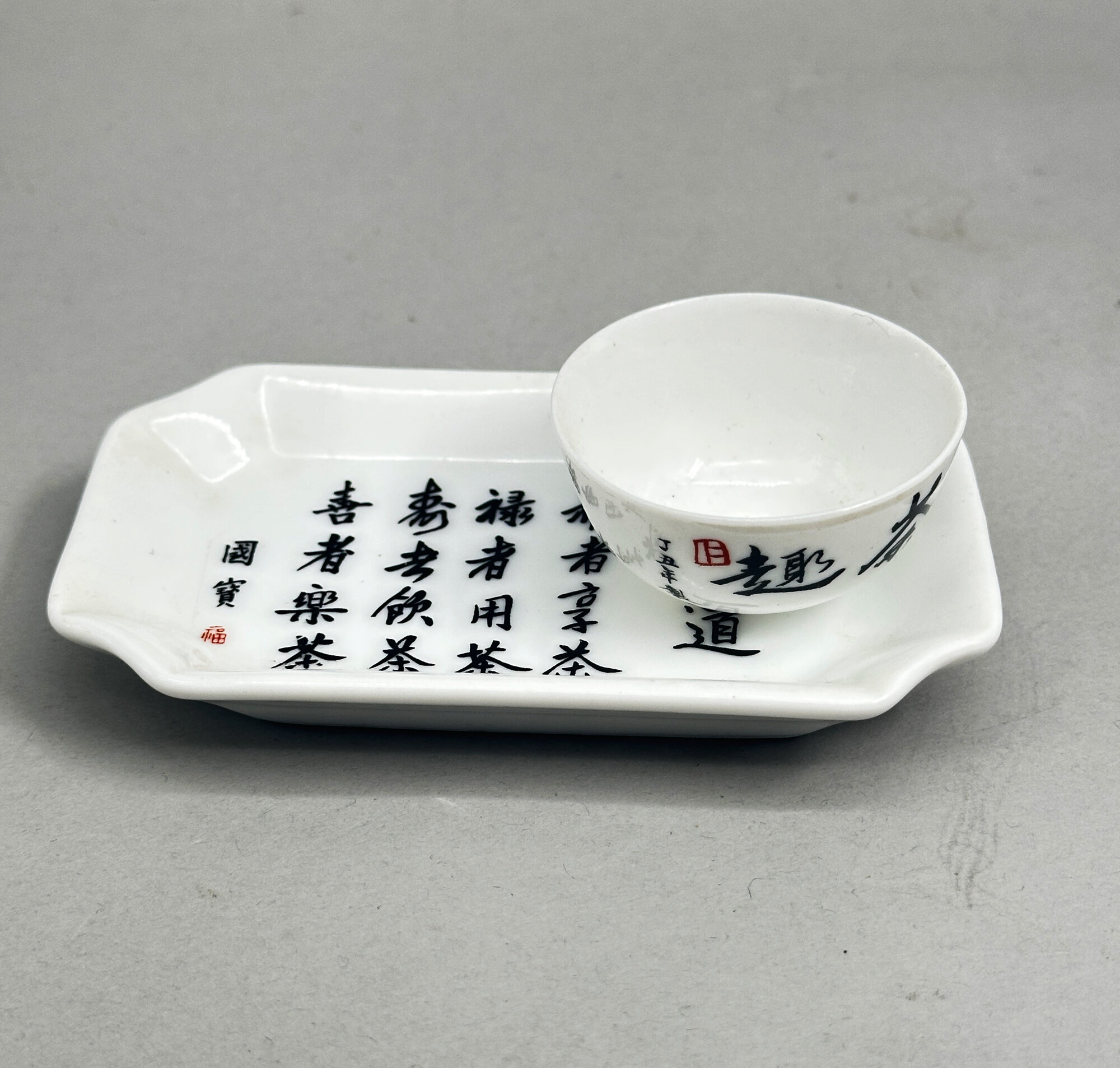
Chinese Porcelain Teabowl and Spoon Tray with calligraphy insciptions, 1997
Price: £15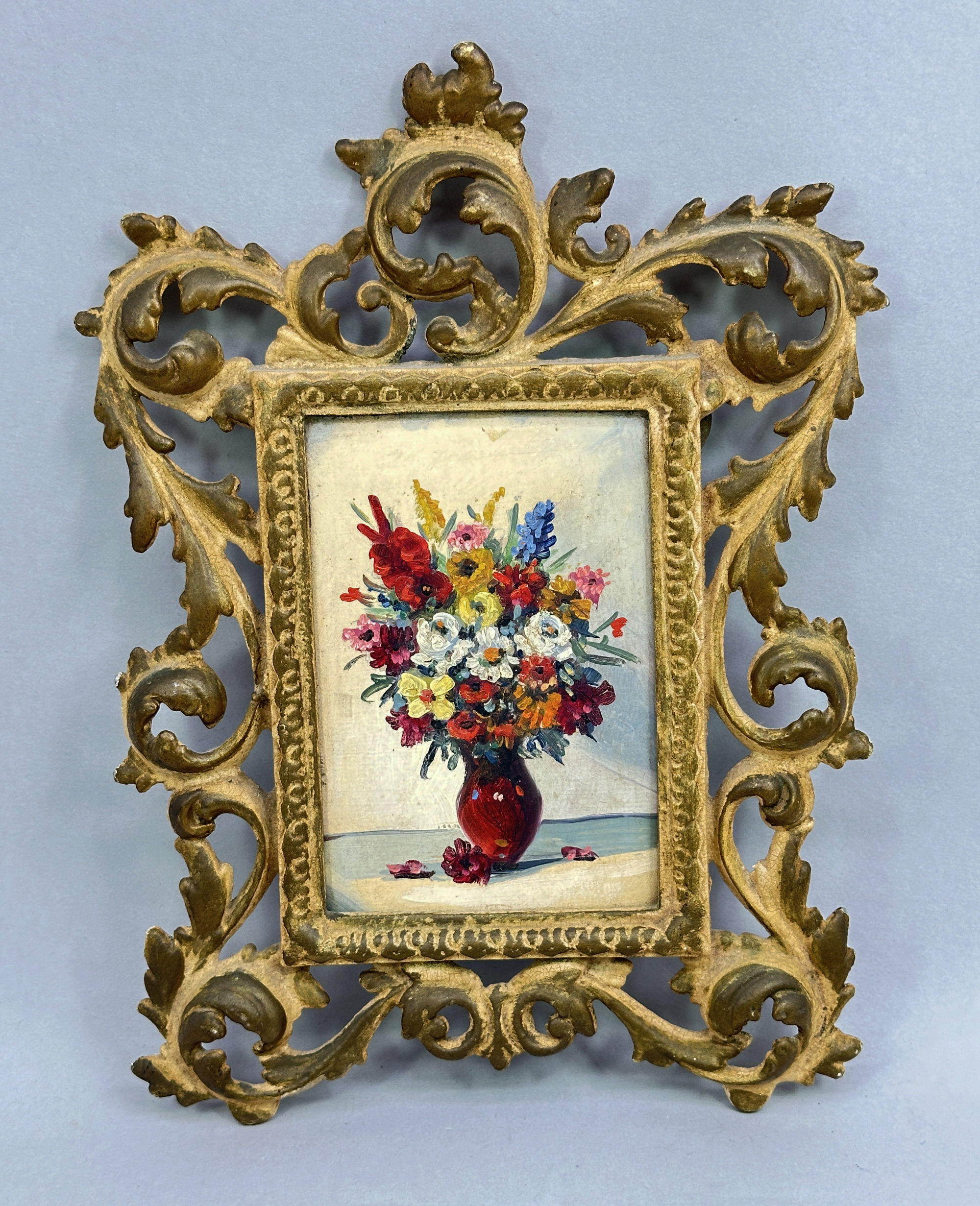
Baroque Style Picture Frame with Still Life, C20th
Price: £25
Pair of Italian faux tortoiseshell earrings, 1980s
Price: £15PLEASE NOTE THAT THERE IS FREE UK SHIPPING ON THIS ITEM. For international buyers the shipping cost will be reduced by the UK shipping cost, so don't worry if you are outside the UK, you still receive this benefit!
